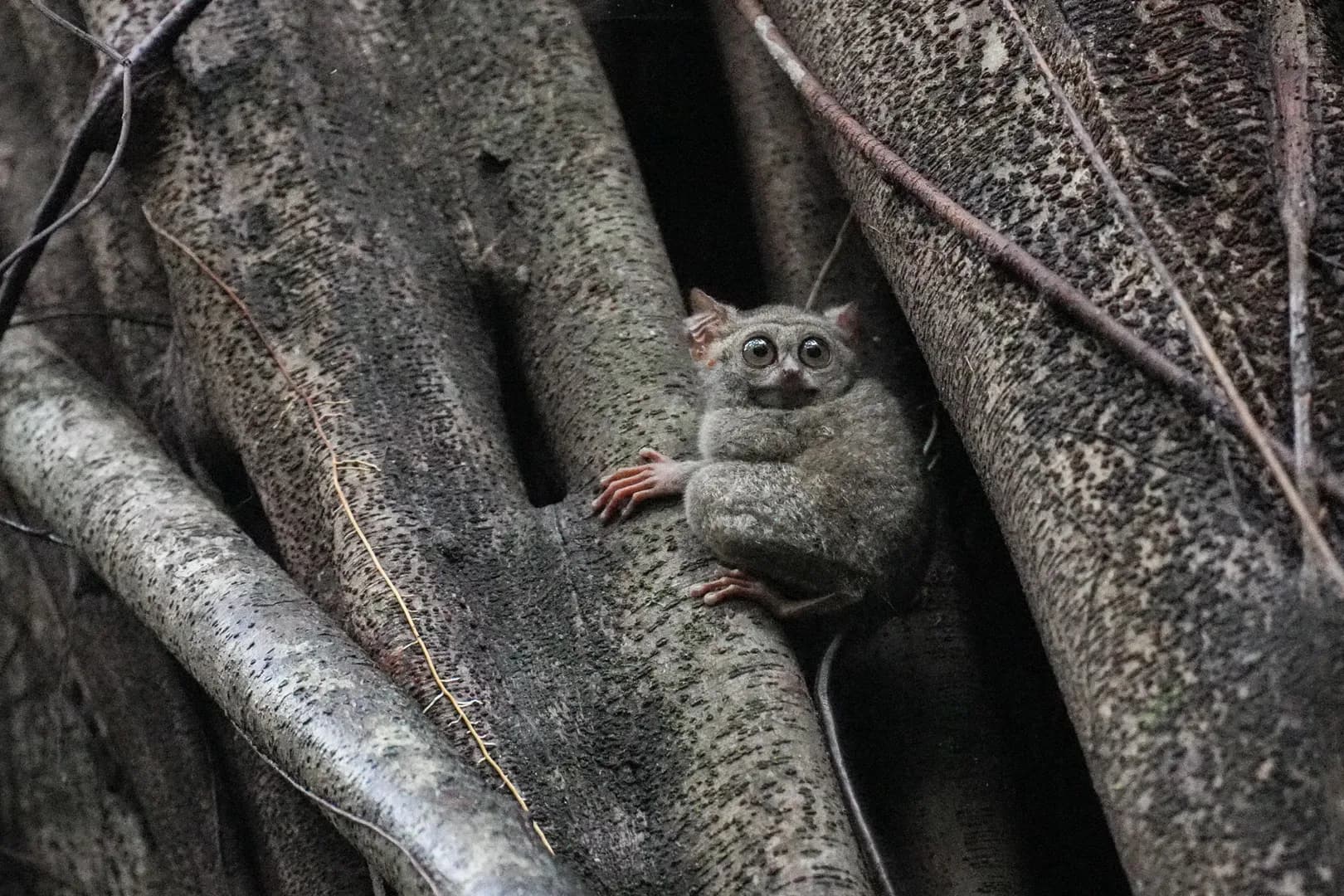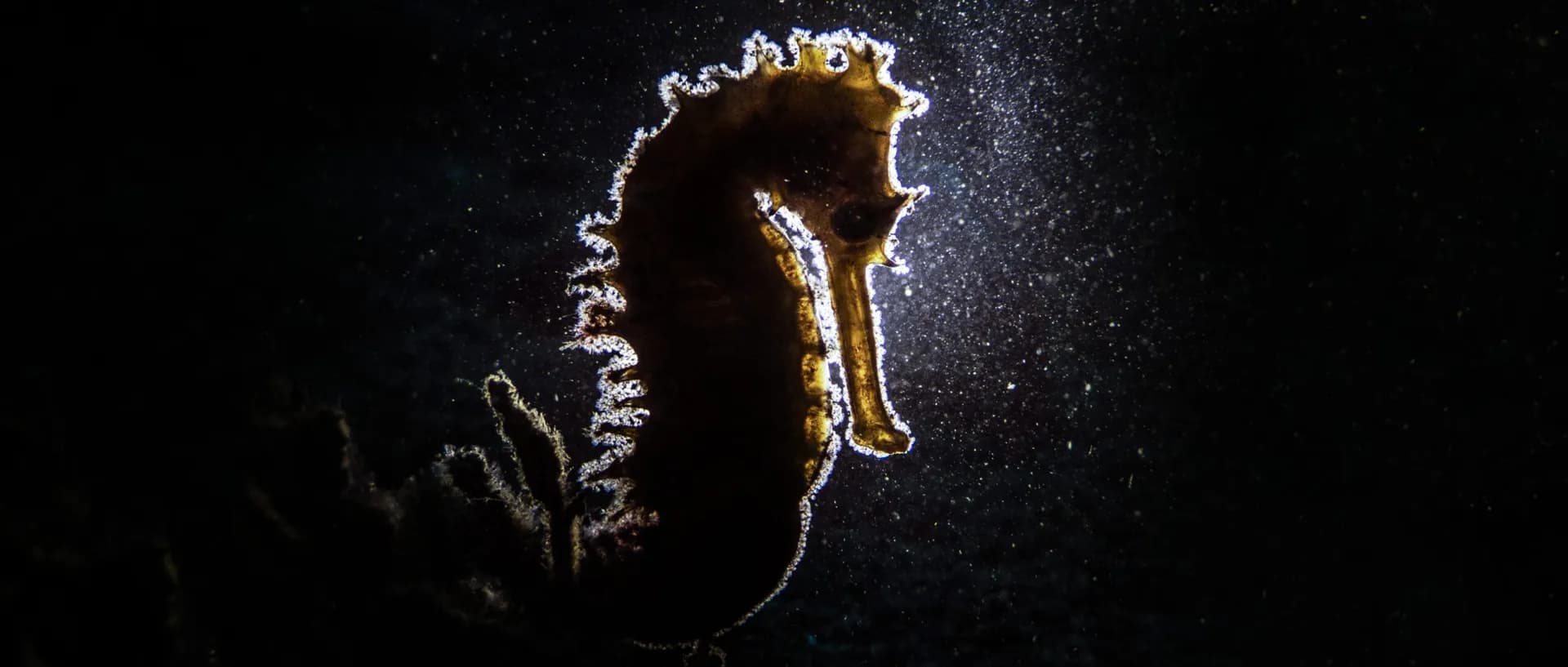Daily Updates: Capturing Critters Photo Workshop 2020

Capturing Critters in Lembeh is the biggest underwater photography event in the Lembeh Strait.
This is our 8th annual workshop with 2020 Photo Pros: Todd Winner, Saeed Rashid and Alex Tyrrell
Capturing Critters is our annual workshop and it’s the only workshop in the world that showcases 3 visiting world-class photo pros in addition to our in-house pro and marine biologists. This year is our 8th workshop and it is now open! The workshop pros and participants have arrived and we are looking forward to a phenomenal week of diving and shooting in the Lembeh Strait. Our previous workshops have shown us how much participants’ photography skills develop over the course of an intensive week and we are all very excited to see the stunning imagery which we are sure will be captured this week.
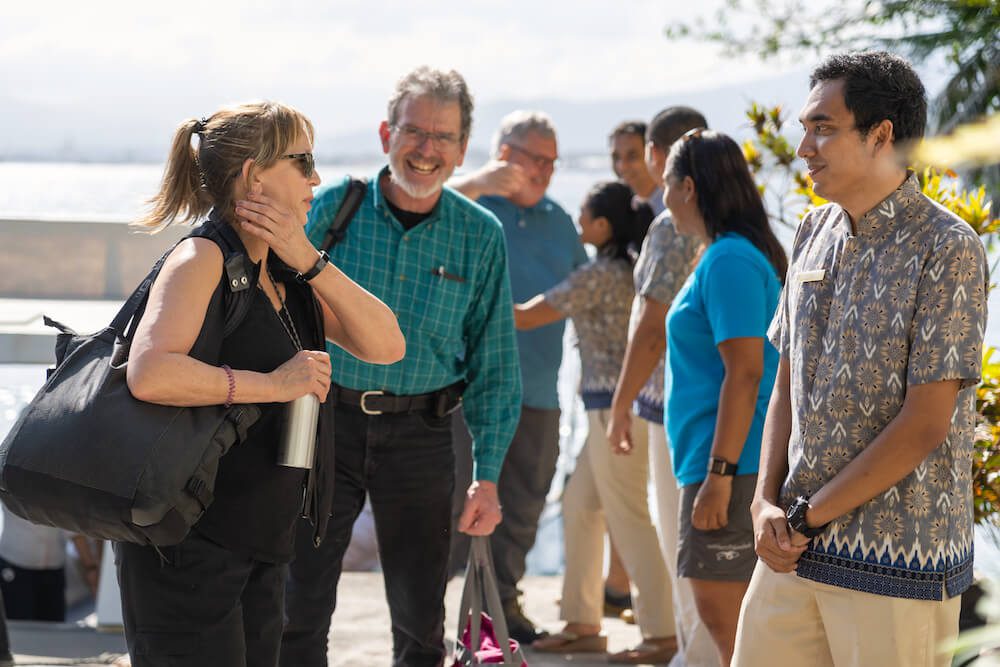
Welcoming new faces and returning guests for this years Capturing Critters
This year’s three pros, Alex Tyrrell, Saeed Rashid and Todd Winner have arrived from various parts of the world and have quickly made themselves at home in the camera room – which is now home to an impressive array of camera equipment.
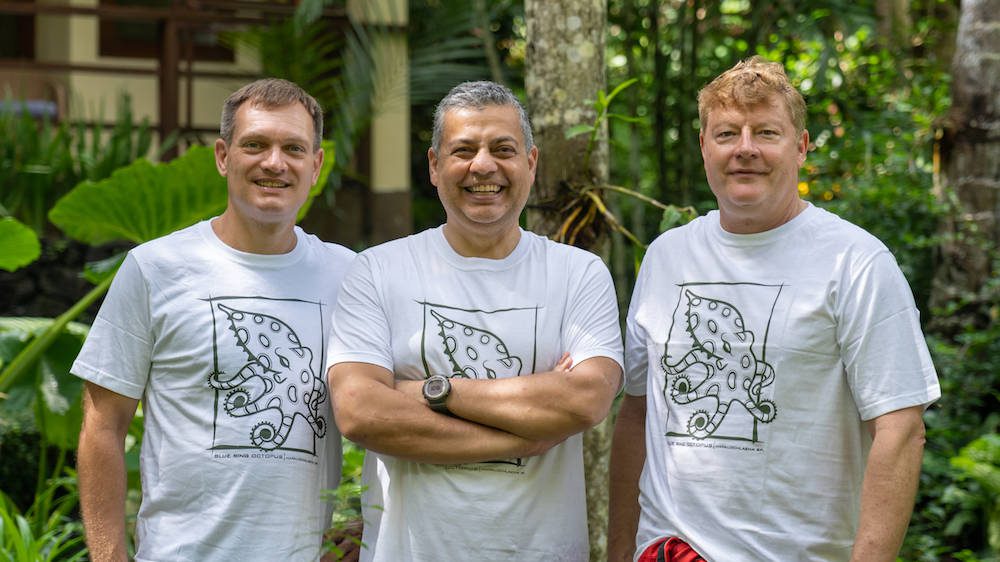
2020 Photo Pro’s: Alex Tyrrell, Saeed Rashid and Todd Winner
Dive Center Manager, Brigitte Gassner, and in-house Photo Pro, James Emery, took the ‘stage’ during this evening’s welcome briefing in which participants were prepped for the week ahead – and it promises to be an epic week! The 16 participants will be making three dives a day, combined with pro presentations, group critique sessions and one-on-one time. As usual, this years workshop promises to be action packed and there has been a buzz of excitement around the dive center over the last few days as preparations have been underway.
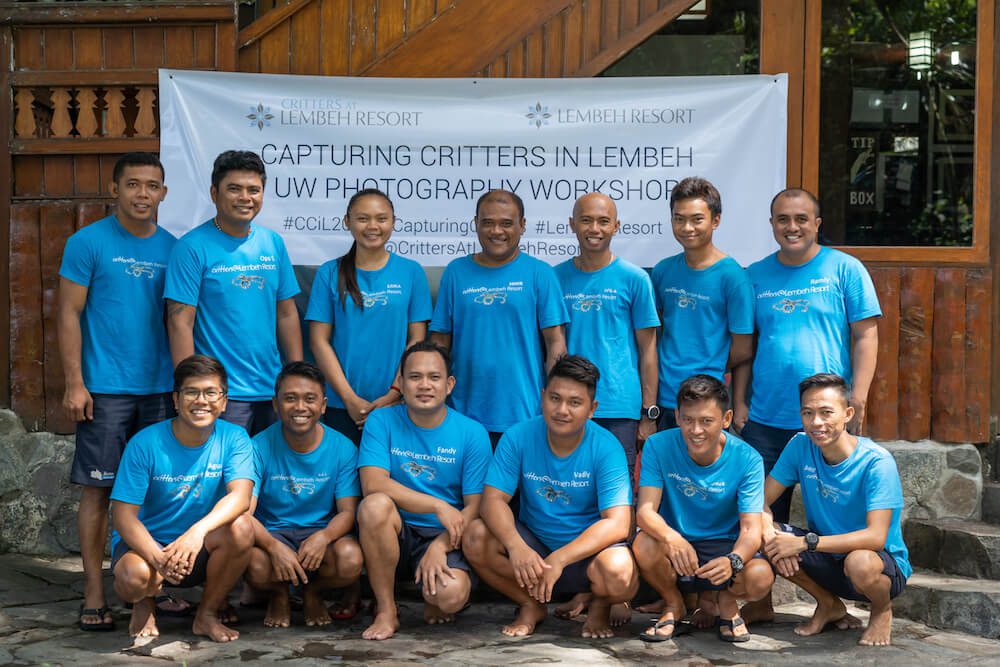
Lembeh Resort’s Dive Guides are geared up to spot the Strait’s most iconic critters
Our dive guides are always excited to be a part of Capturing Critters and they are geared up for finding Lembeh’s most unique marine life. The boat crews have primed the dedicated workshop boats and are ready to welcome all aboard. In Lembeh Resort, the kitchen crew and restaurant team are prepared for the enslaught of hungry divers and are hoping to create some excitment of their own with an array of delicious treats to entice!
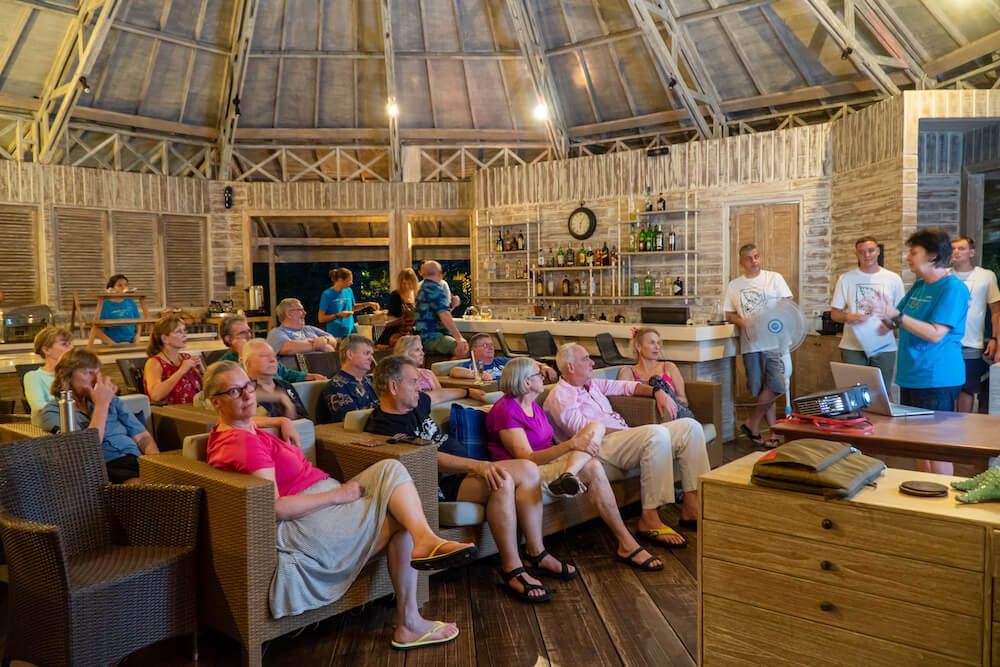
Dive Center Manager Brigitte Gassner welcomed guests to a busy week ahead
After a sumptuous Lembeh Resort dinner this evening, the particpants were looking forward to an early night in readiness for what promises to be an exciting day of diving tomorrow!
Did you miss out on this years workshop? Join our 9th annual Capturing Critters in Lembeh workshop in January 2021
2021 Photo Pros: Alex Tattersall, Jade Hoksbergen-Spiers and Henley Spiers
Despite some overnight showers, participants and pros were off to an early start this morning with a hearty breakfast starting from 6.15am. As coffee was being drunk and bacon griddled, Marine Biologist Dimpy Jacobs started off this year’s presentations with a ‘muck diving’ reminder to all about best diving practices. Dimpy captured the participants attention with videos and slide shows of some of the rarest and most unusual marine life found in the Strait and the anticipation was high as the three dedicated workshop boats set out for their two morning dives.
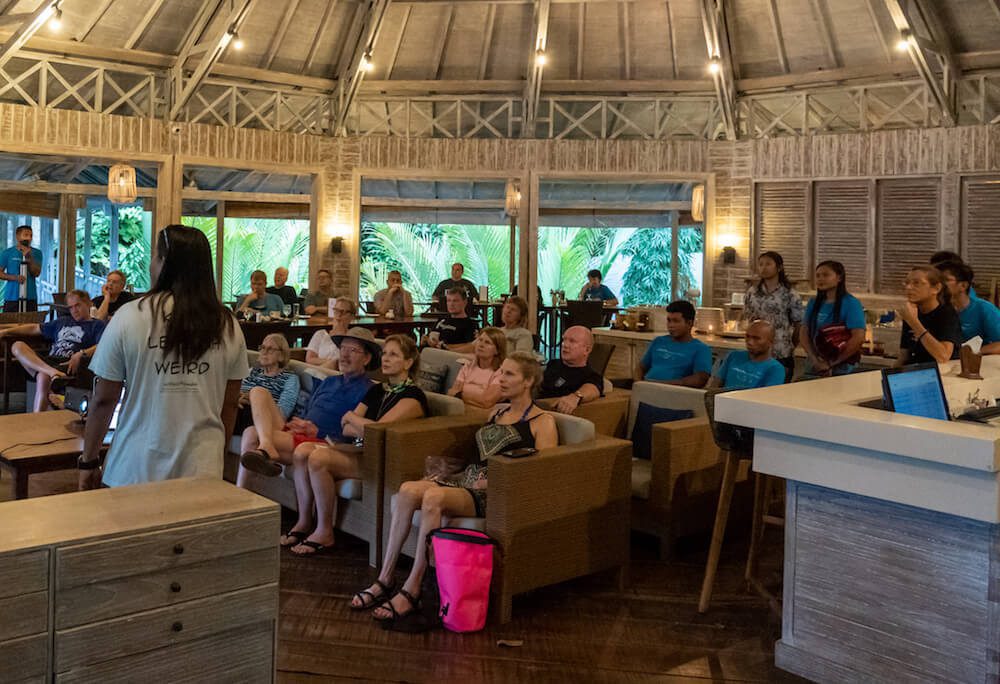
Marine Biologist Dimpy Jacobs presented muck diving techniques and marine life in Lembeh this morning
The Lembeh Strait did not disappoint and revealed a host of some of the most sought after critters including blue rings, mototi octopus and flamboyant cuttlefish (see Daily Critter Count below).
The restaurant was buzzing at lunchtime with camera questions, first day problem solving and excitement over the morning’s photography subjects. James Emery took the afternoon presentation spot with “Basic Macro Settings and Exposure” which answered a lot of the questions raised from the morning dives (see presentation notes below).
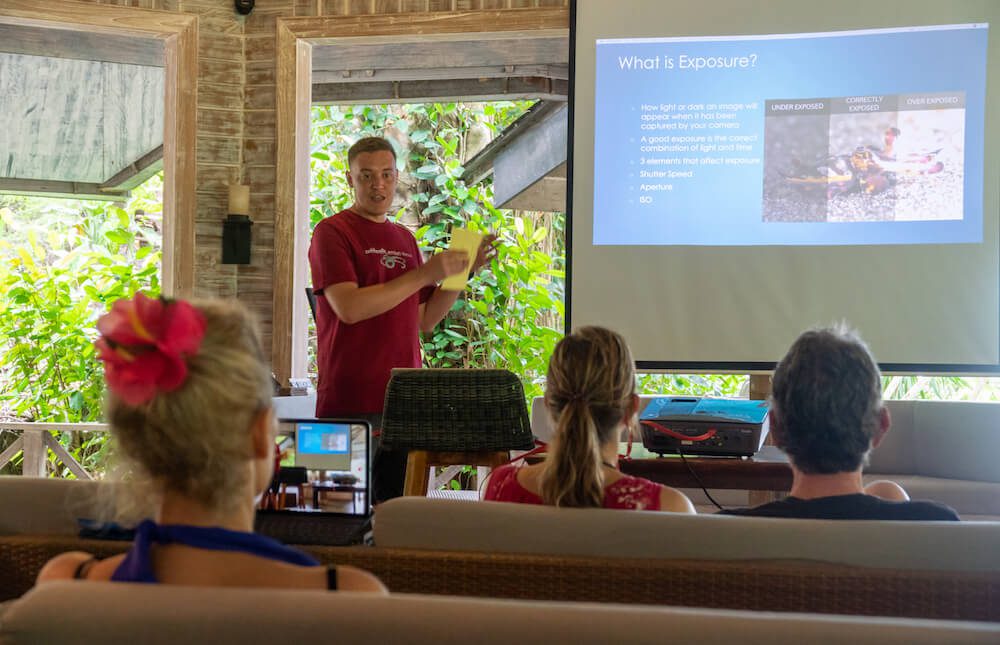
James introduced basic macro settings and exposure in this afternoon’s presentation
During the afternoon dives the critter count continued to rise with another blue ring octopus, short-haired frogfish and algae octopus making appearances. But the day was not over for participants as they headed to “office hours” before dinner. Office hours are when our three wonderful pros can be found in the restaurant, ready to impart their wealth of knowledge one-on-one. As Saeed, Alex, Todd and James managed to trouble shoot, solve and suggest solutions for strobe, camera and processing woes everyone finished the day happier with their configurations and ready to put them to the test again tomorrow…
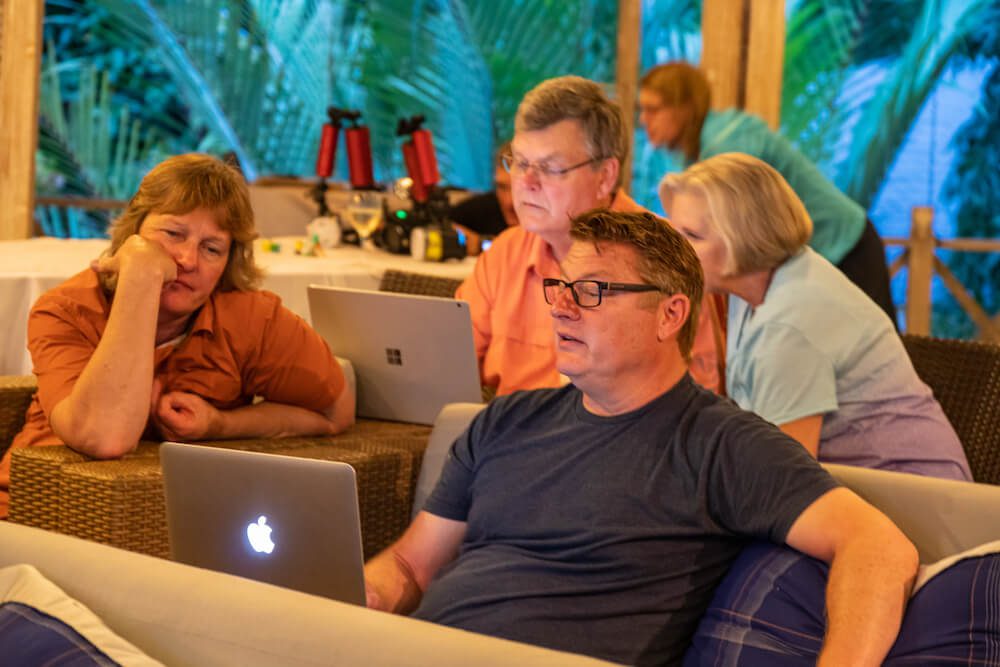
“Office Hours’ give participants one-on-one time with the pros
Daily Presentations Notes
James Emery: Macro Settings and Exposure
Here are some of the key points from James’s afternoon presentation. If you’d like to learn more about James you can view his photo pro page HERE.
What is Exposure?
Exposure refers to how light or dark and image appears. Having good exposure means having the correct amount of light in an image. Good exposure is the correct combination of light and time.
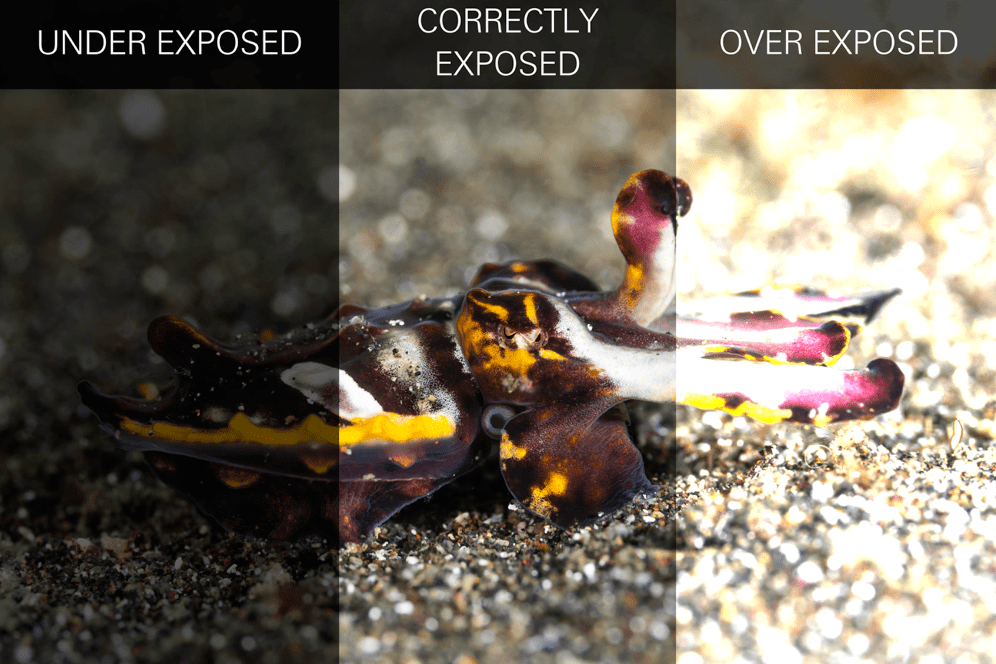
Underwater image exposure
Settings that Affect Exposure
Shutter speed, aperture and ISO
- Shutter speed is the amount of time the shutter stays open when you push the shutter button. Shutter speed determines how much motion is recorded in your image. A slow shutter speed captures more motion because the shutter is open for longer. A fast shutter speed ‘freezes’ the action as the shutter is only open for a short time. Shutter speeds are measured in fractions of seconds (1/15, 1/30, 1/60, 1/125, 1/250), in f/125 the shutter is open for 125th of a second.
- Aperture refers to the size of the lens opening which affects the amount of light reaching the sensor. Apertures are measured in ‘fstops’. The lower the fstop (number) the wider the aperture (more open). For example, when shooting at f2 the aperture is much more open than when shooting at f8. At f2 more light reaches the sensor through a wider opening than in f8 when then opening is much narrower. Aperture affects Depth of Field which is the amount of an image which is in focus from front to back.
- ISO controls the sensitivity of the cameras sensor and is used for making images brighter and darker. A higher ISO number will result in a brighter image, conversely a lower ISO setting will darken the image. A higher ISO number needs to be used with caution because as the ISO increases, so does the amount of noise (graininess) in an image.
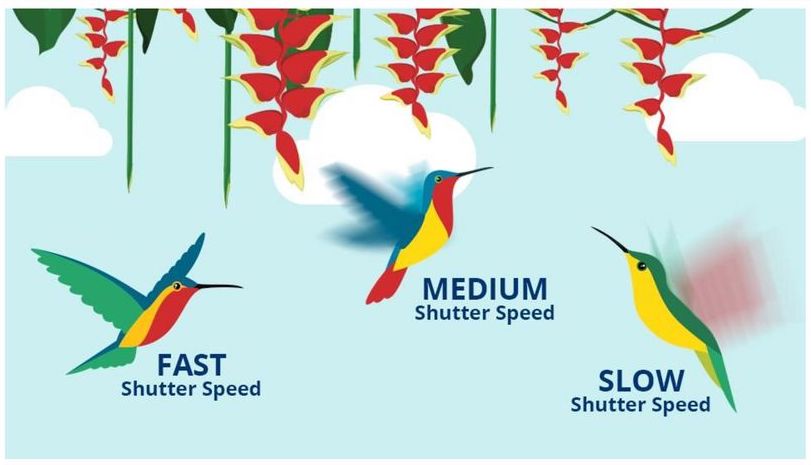
A fast shutter speed freezes the action whereas a slow shutter speed will increase blur
James’s Exposure Setting Tips for Macro
- Shoot in manual mode
- Use a fast shutter speed to freeze the action and avoid blurring
- Use strobe lighting for better colors
- Use a lower ISO number for better quality images
- Shoot at f22 or the highest f number available to get more of your image in focus
- Get close to your subjects, and then get closer!
- James recommends starting out at a shutter speed of 1/250, using f22 or the highest f stop available and IDO 200, and then using the strobe power setting to make adjustments. This is a great way for beginner to get started and not have additional stress of needed to change and balance shutter speed and aperture.
- Shoot with strobes on manual
- Take test shots and adjust strobe power accordingly.
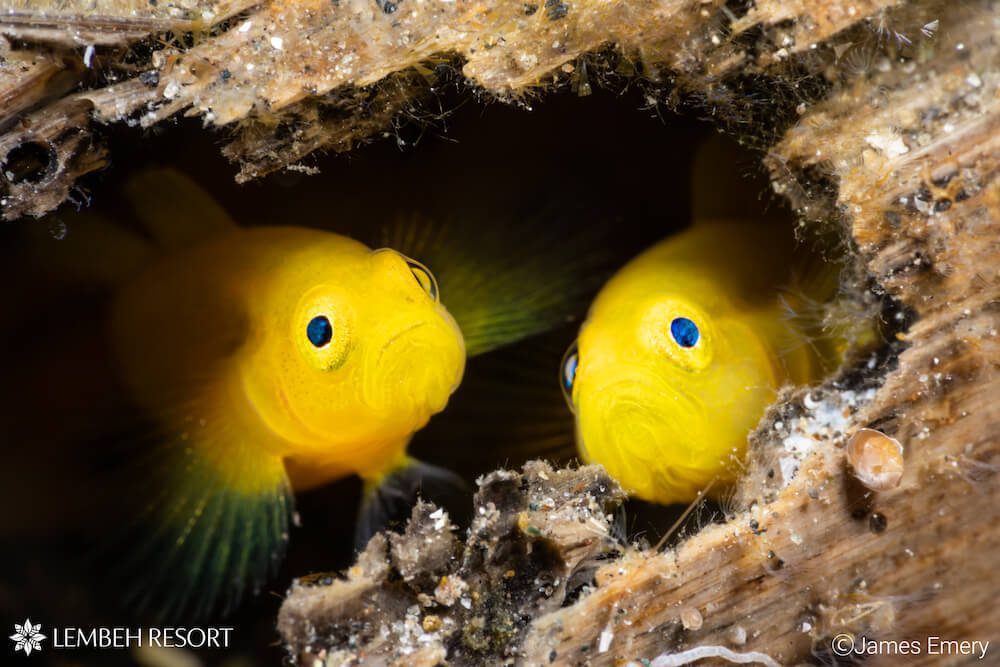
This image was shot by James using 1/250, f22 and ISO 200
Daily Critter Count
Todays most iconic critter sightings included:
(4) Blue ringed octopus, mototi octopus, algae octopus, flamboyant cuttlefish, broadclub cuttlefish, pygmy cuttlefish, warty frogfish, painted frogfish, short-haired frogfish, ornate ghost pipefish, Trapania sp., Miamira miamirana and Shaun the Sheep nudibranch.
Scroll through today in pictures…..
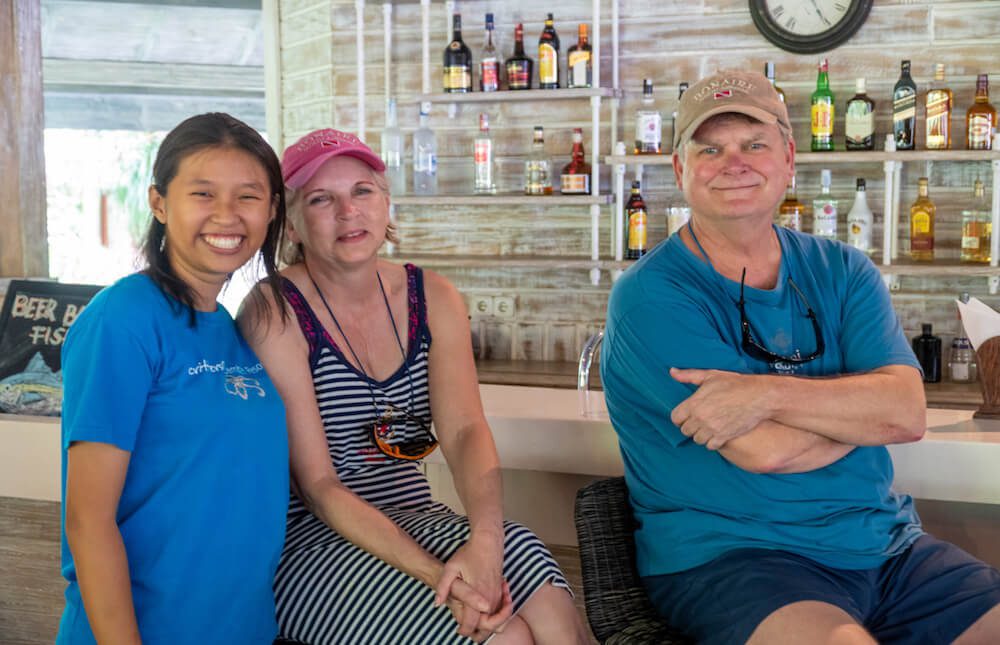
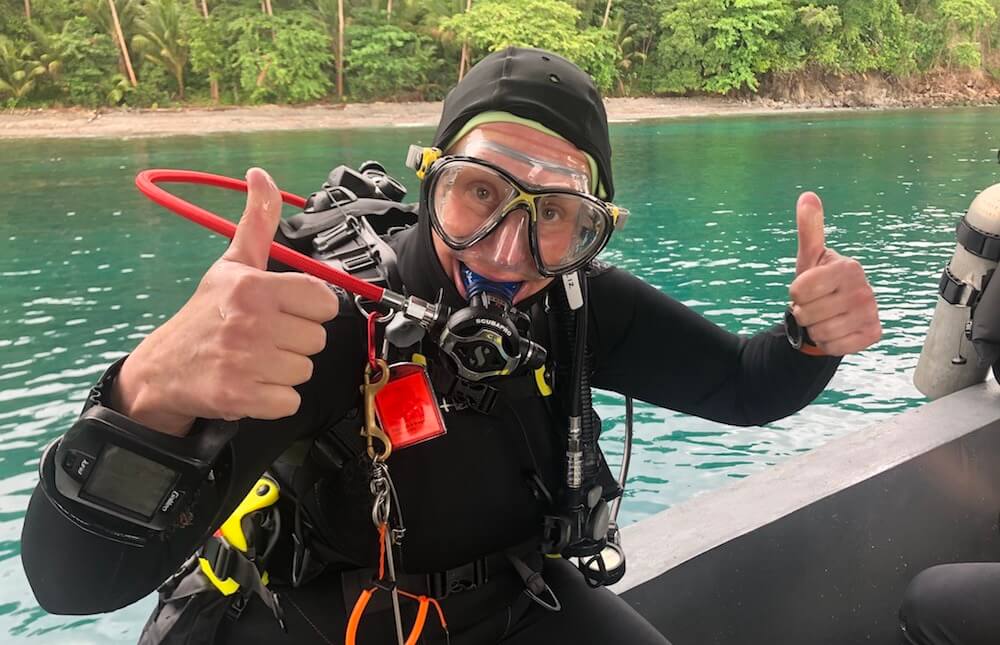
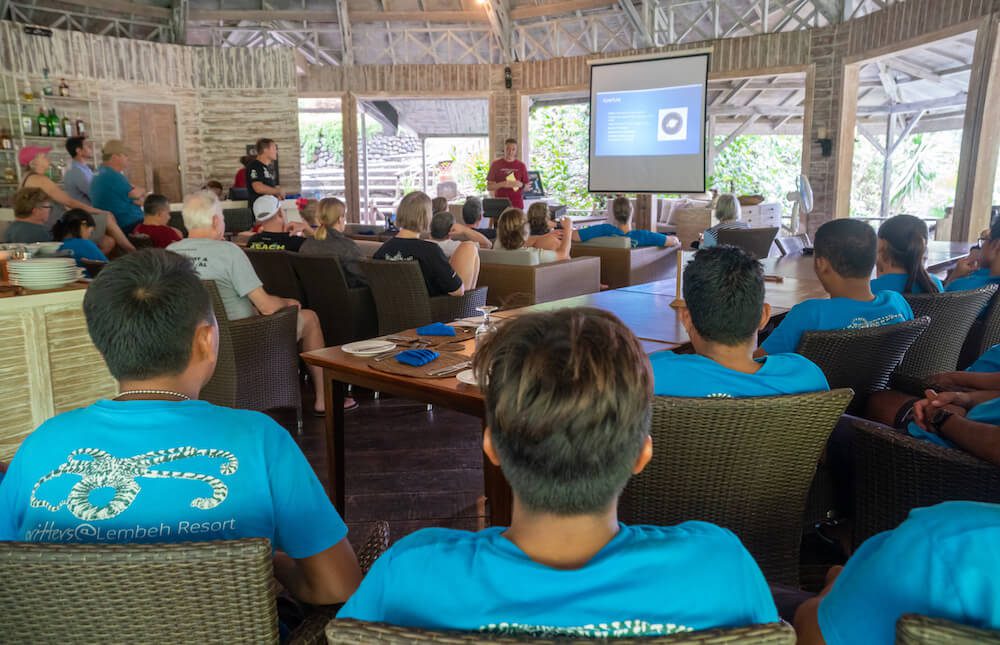
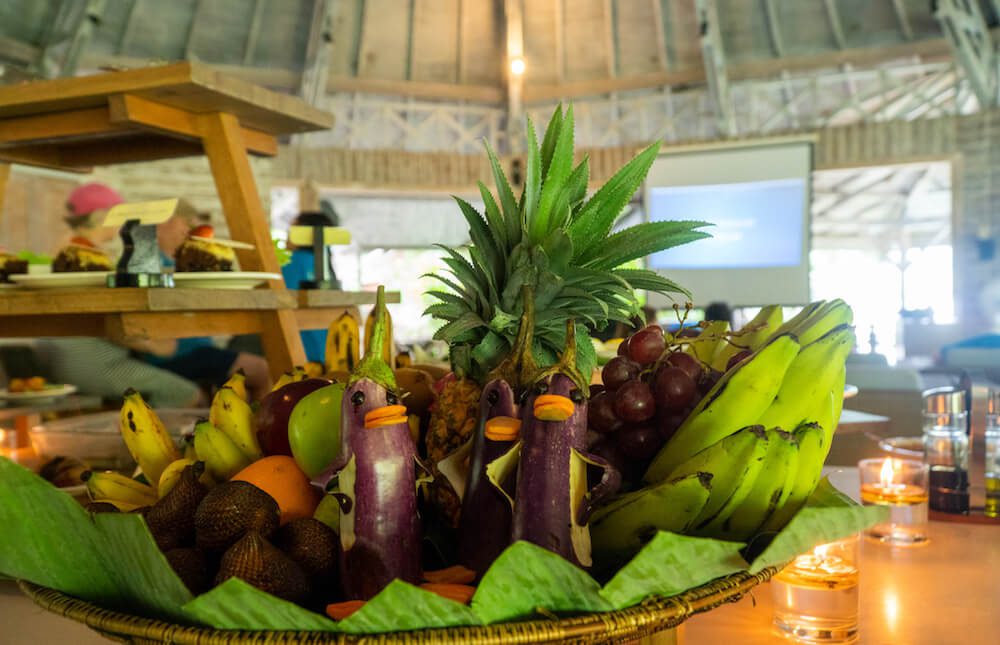
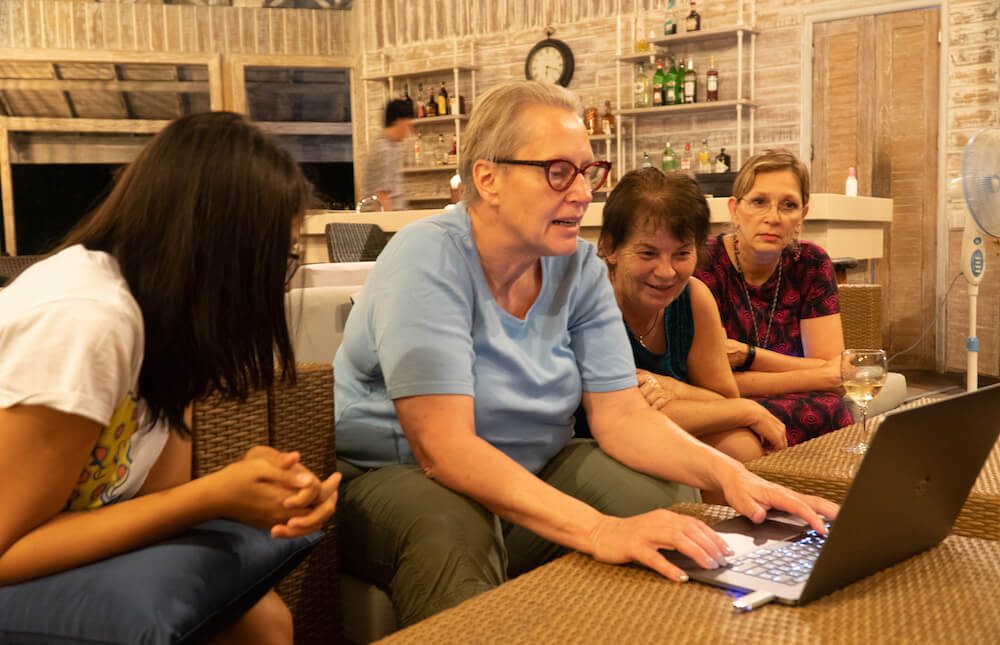
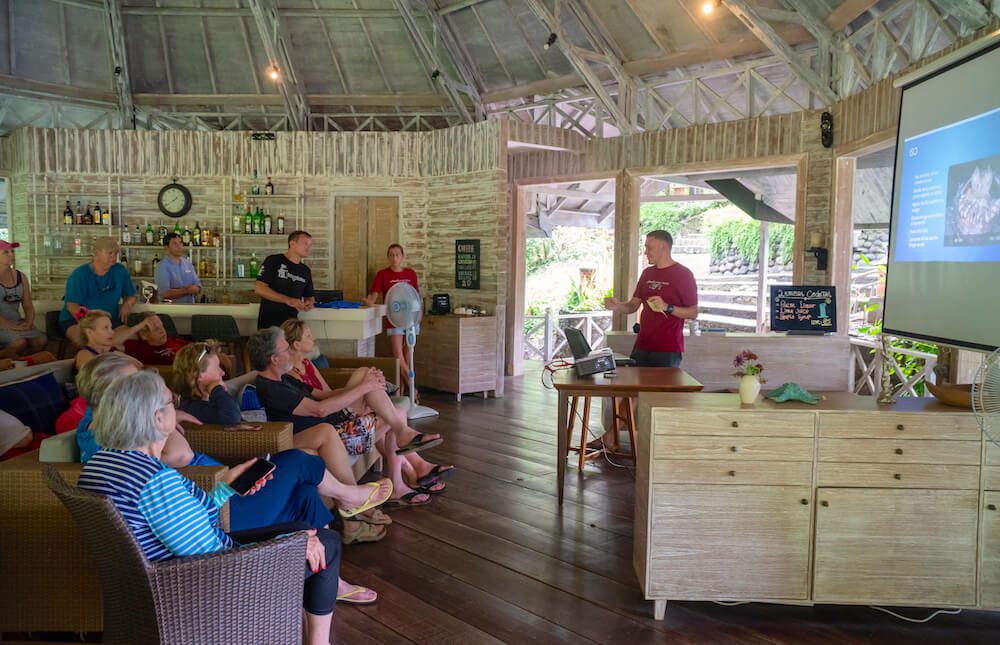
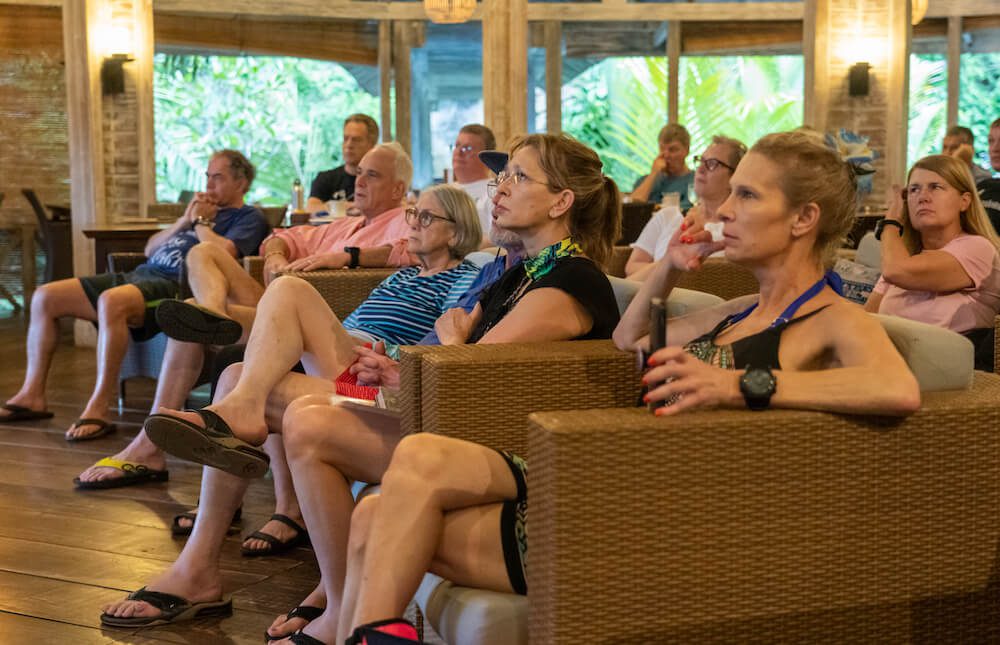
Did you miss out on this years workshop? Join our 9th annual Capturing Critters in Lembeh workshop in January 2021
2021 Photo Pros: Alex Tattersall, Jade Hoksbergen-Spiers and Henley Spiers
As the sun rose over the Lembeh Strait this morning so did the anticipation as Todd Winner was up first to present “Strobe Positioning”. After participants finished breakfast and refueled on coffee (very popular this week) they peppered Todd with questions about 3 o’clock and 9 o’clock positioning and recommended distances from the port. Todd’s comprehensive presentation notes are below for those who want to learn more.
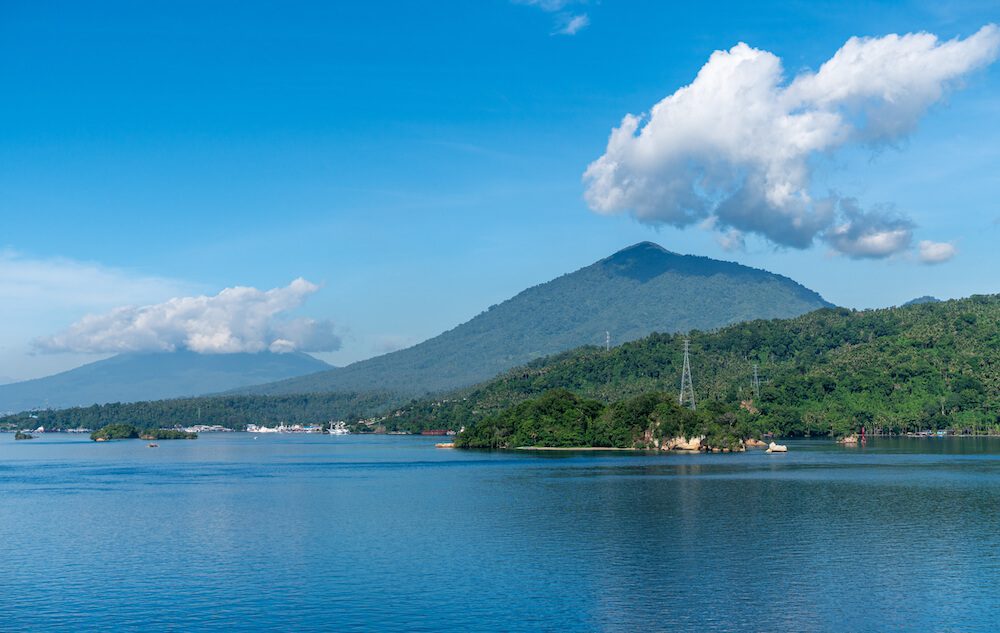
Bright blue sky set the tone for the day
This morning’s double dive trip certainly met expectations as all three boats came back having reported incredible marine life sightings in the Strait. The sun broke through and the sky finally gave us a show of blue which no doubt helped out those shooting in the shallows. Saeed Rashid bounced off the boat delighted with the critters and his fellow participants returned with stories of Saeed’s enthusiasm and constructive criticisms during the surface interval.

Getting ready for a morning of shooting
After the impressive lunchtime buffet (and irresistible chocolate mousse) drew to a close, Marine Biologist Dimpy Jacobs gave her final presentation of the week, “Critters and Habitat” in Lembeh. Dimpy’s presentation gave an insight into some of the knowledge which is used during our dive guide’s marine biology training – using knowledge of each critter’s preferred habitat to find critters and to take shots of them in their individual natural surroundings.
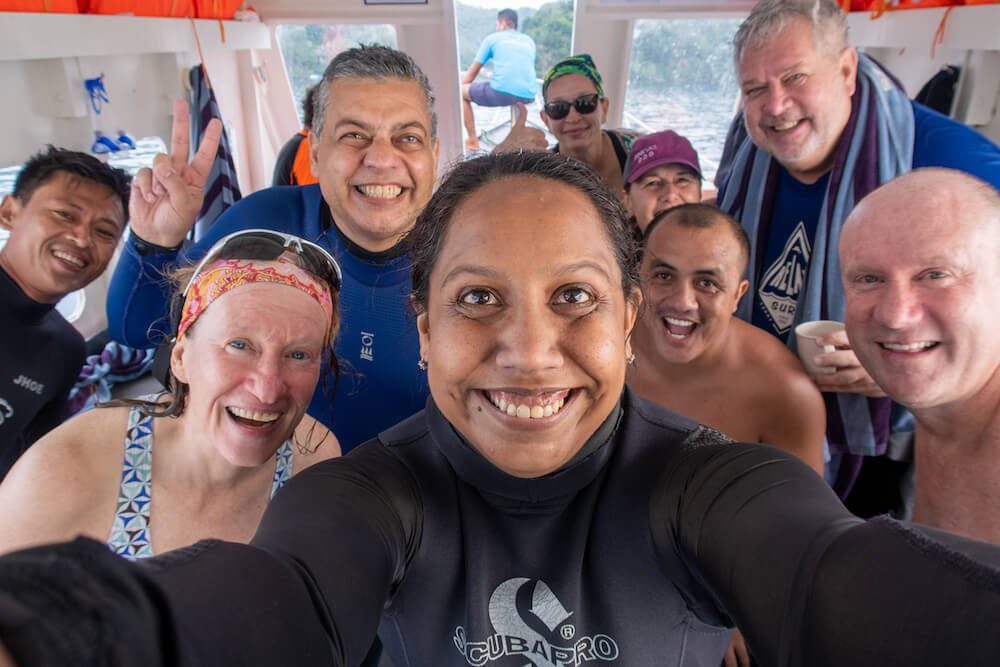
Surface interval selfies from Saeed’s workshop boat
This afternoon’s dives didn’t disappoint and just when we thought the daily critter count (below) couldn’t get any better, a long-arm octopus, Ambon scorpionfish, hairy frogfish and coconut octopus added themselves to the day’s tally.
As most participants planned to return to their rooms and relax before one-on-one time with the pros and dinner, the Lembeh Strait wasn’t finished with us yet and produced one of the most spectacular sunsets we have ever seen. As the sky changed from orange to pink and red, cameras were brought out once again to capture the final shots of the day!
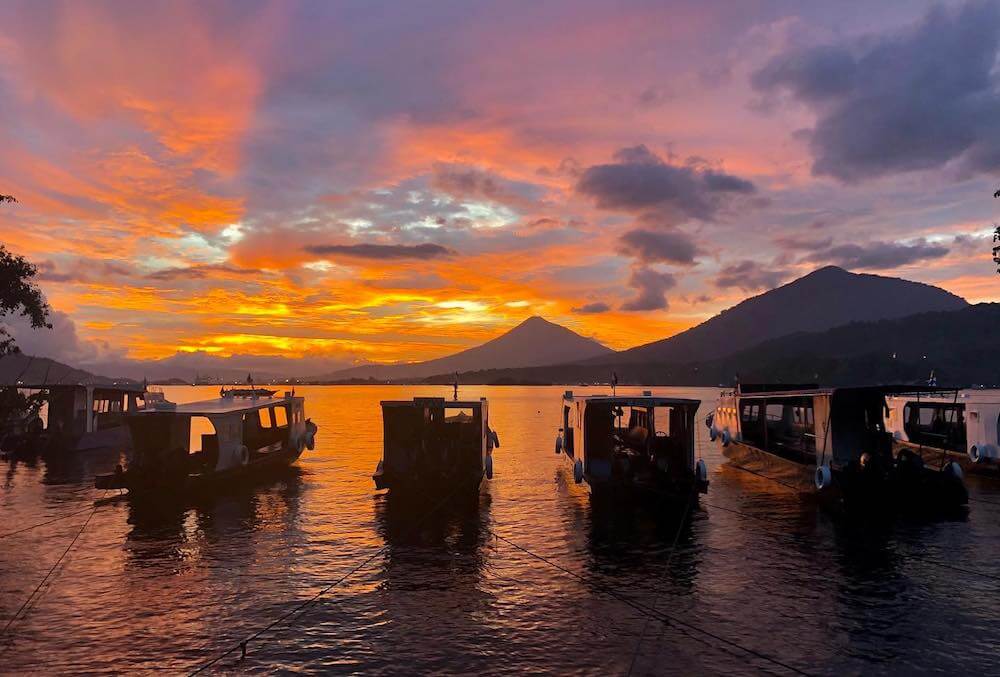
This evening’s sunset was well worthy of the last shots of the day
Daily Presentations Notes
Strobe Positioning by Todd Winner
Here are some of the key points from Todd Winner’s morning presentation. If you’d like to learn more about Todd you can view his website here.
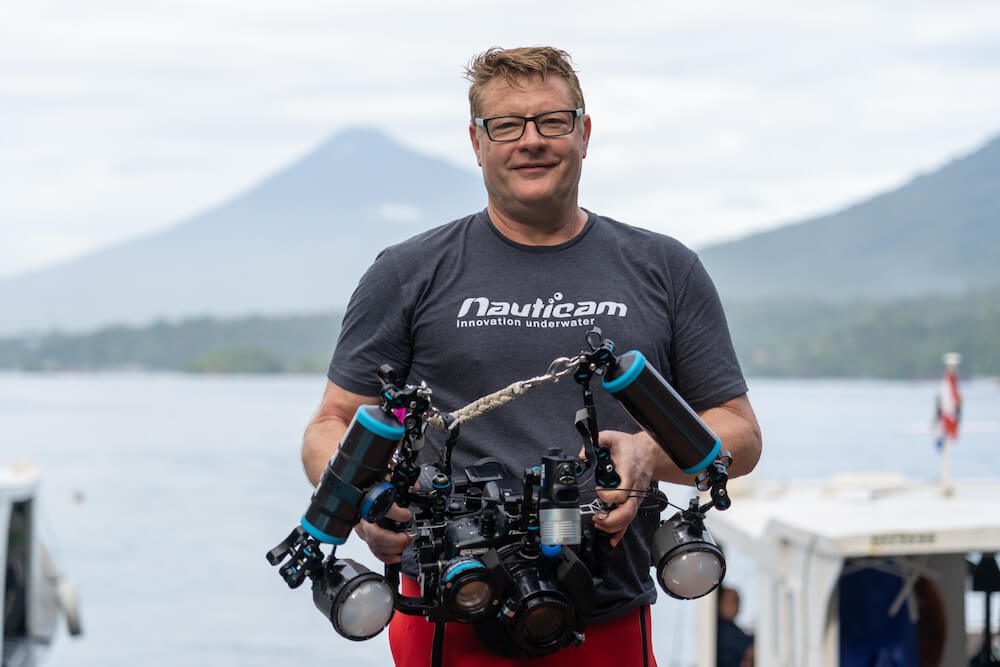
Todd Winner started his presentations with “Strobe Positioning”
Strobe Setup
Take time to ensure that your strobes are setup correctly. This should always be step 1.
- When using fiber optic cables make sure you know if your camera is putting out a single flash or a pre-flash!
- When using a built in flash, setting the flash to manual and reducing the output power can greatly increase your cameras battery life and recycle time.
- Get familiar with your gear and setup – learn your camera, strobe and housing controls before getting in the water – including knowing the direction of your dials without looking.
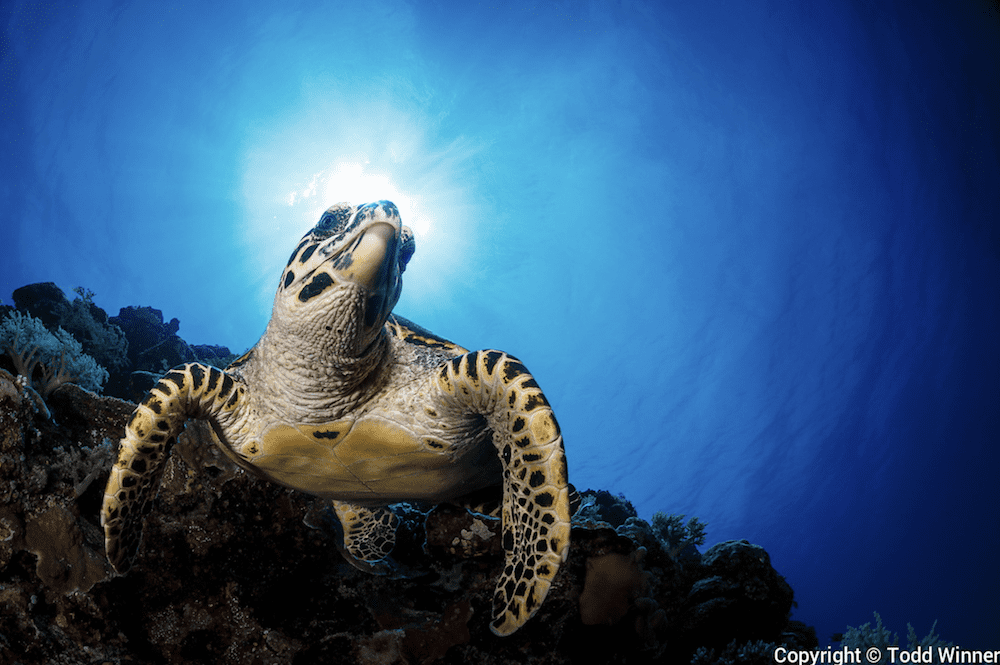
Strobe Settings
TTL: Camera quenches the strobe when it measure enough light for the exposure. When shooting TTL you’ll have well lit images but it doesn’t allow for artistic affects. Aperture and ISO will have little effect on the strobe exposure.
Manual: Gives you much more control. You set the power and distance based on your aperture and ISO. Whenever possible, aim to shoot with manual strobes.
Camera Settings and Strobes
- Aperture and ISO: These setting effect the whole image including the parts lit by the strobe.
- Strobe Power Setting: This is how to control the light in the strobe lit portion – turn the power up or down.
- Shutter Speed: Your shutter speed has NO effect on the section of the image lit by the strobe.
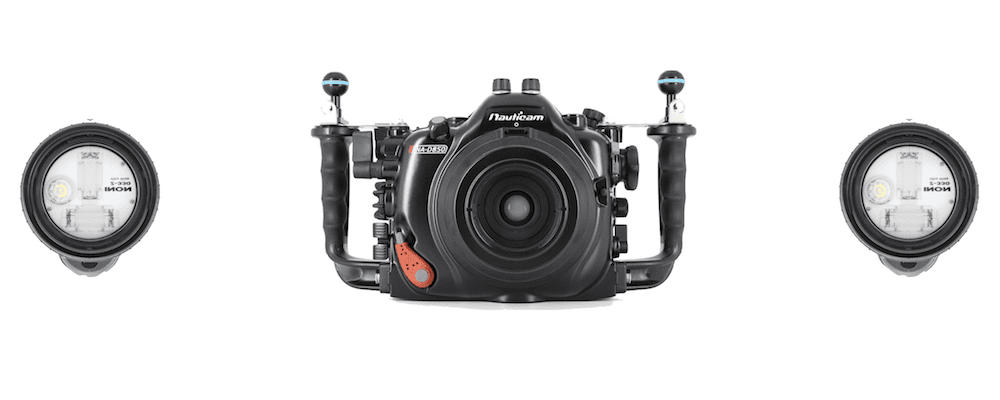
The image above shows strobes positioned at 3 o’clock and 9 o’clock
Strobe Positioning
- Imagine a clock face and with double strobes place one at 9 and one at 3. This is a good starting point but be prepared to move them. There can definitely be better angles for each shot.
- Advantage of using 9 and 3 is that when you rotate the camera to shoot portrait the strobes will be at 6 and 12 which is also a good standard position.
- Experiment!! Don’t get stuck at 9 and 3, try using 2 and 10 or uneven positions to create different effects.
- If you are shooting with a single strobe 12 o’clock is a good starting point.
- Out or Tucked In? When shooting subjects that are close, move the strobes in towards the housing, as distance to the subject increases, move the strobes out and away from the housing. When shooting macro we are shooting close up so strobes should be close to the housing (even touching).
- Front or Back? When shooting wide angle it’s better to move your strobes back – a good starting point is level with the handles on the tray. When shooting macro, as you move your strobes in, also move them forward toward the end of your port.
- Direction, usually strobes pointing straight ahead is best but for macro and extremely close subjects, you may need to angle your strobes in slightly.
Lighting Ratios for 2 Strobes
- Shooting with strobes on even power will work well in many images and give balanced lighting.
- Different power on each strobe will create shadows with creates depth and dimension to images, often making them more interesting to the eye.
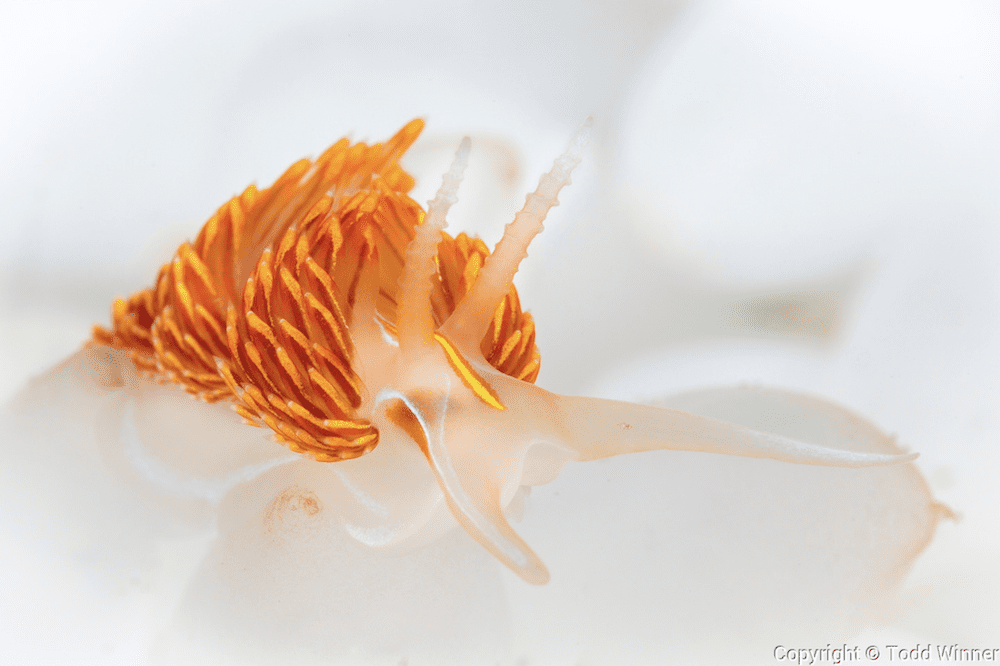
Backscatter
- Don’t obsess over backscatter
- The easiest way to reduce backscatter is to get closer to the subject therefore reducing the amount of water (and backscatter) between the camera and the subject. Less backscatter to light up.
- Most backscatter is caused by divers! Get your buoyancy right, reduce fin kicking, think about your breathing
Have Fun!
Most importantly – have fun, don’t be afraid to try different things and remember that no two shots are the same so there is no “standard”. The best strobe positioning is the one that works best for the shot that you are about to take!
Daily Critter Count
Today’s most iconic critter sightings included:
Blue ringed octopus, mototi octopus, long-arm octopus, oscillated octopus, flamboyant cuttlefish and eggs hatching, pygmy cuttlefish, short-haired and long-haired hairy frogfish, orange and yellow painted frogfish, pink-eared mantis shrimp, harlequin shrimp, tozeuma shrimp, halimeda crab, common seahorse, ornate ghost pipefish, Ambon scorpionfish, yellow pygmy goby, Costasiella kuroshimae sea slug and solar nudibranch.
Scroll Through Pro Images from Capturing Critters in Lembeh 2020
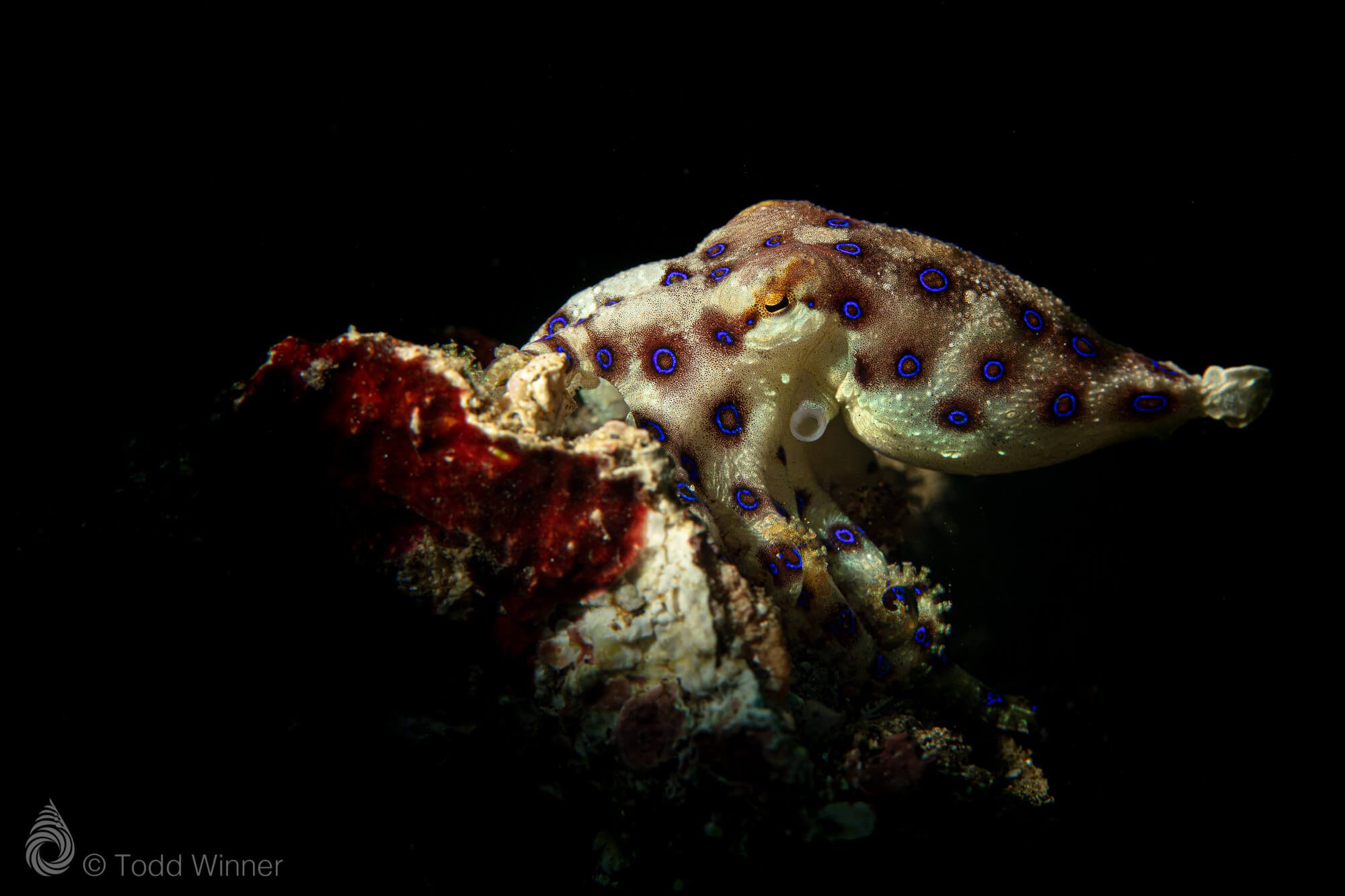
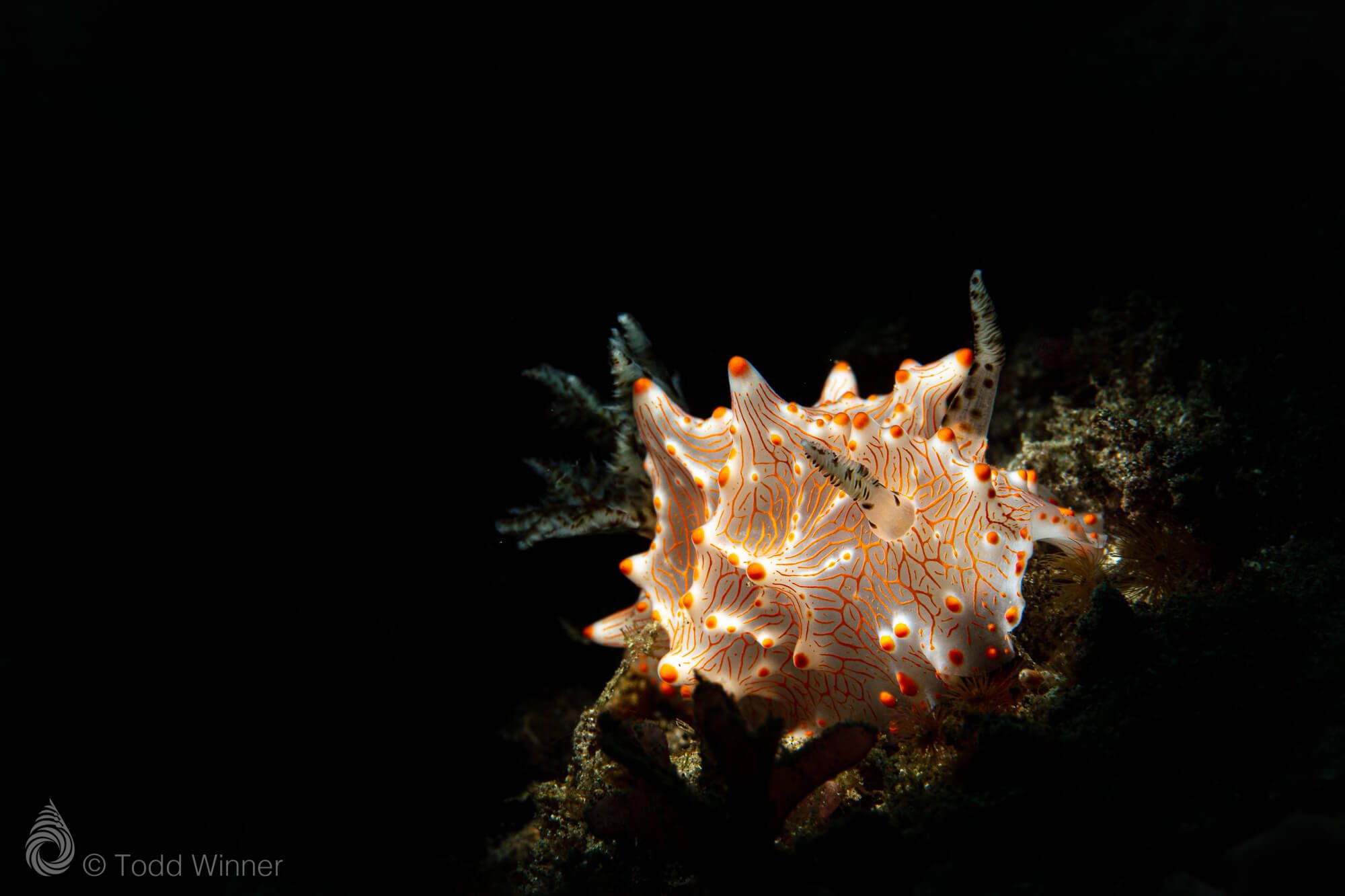
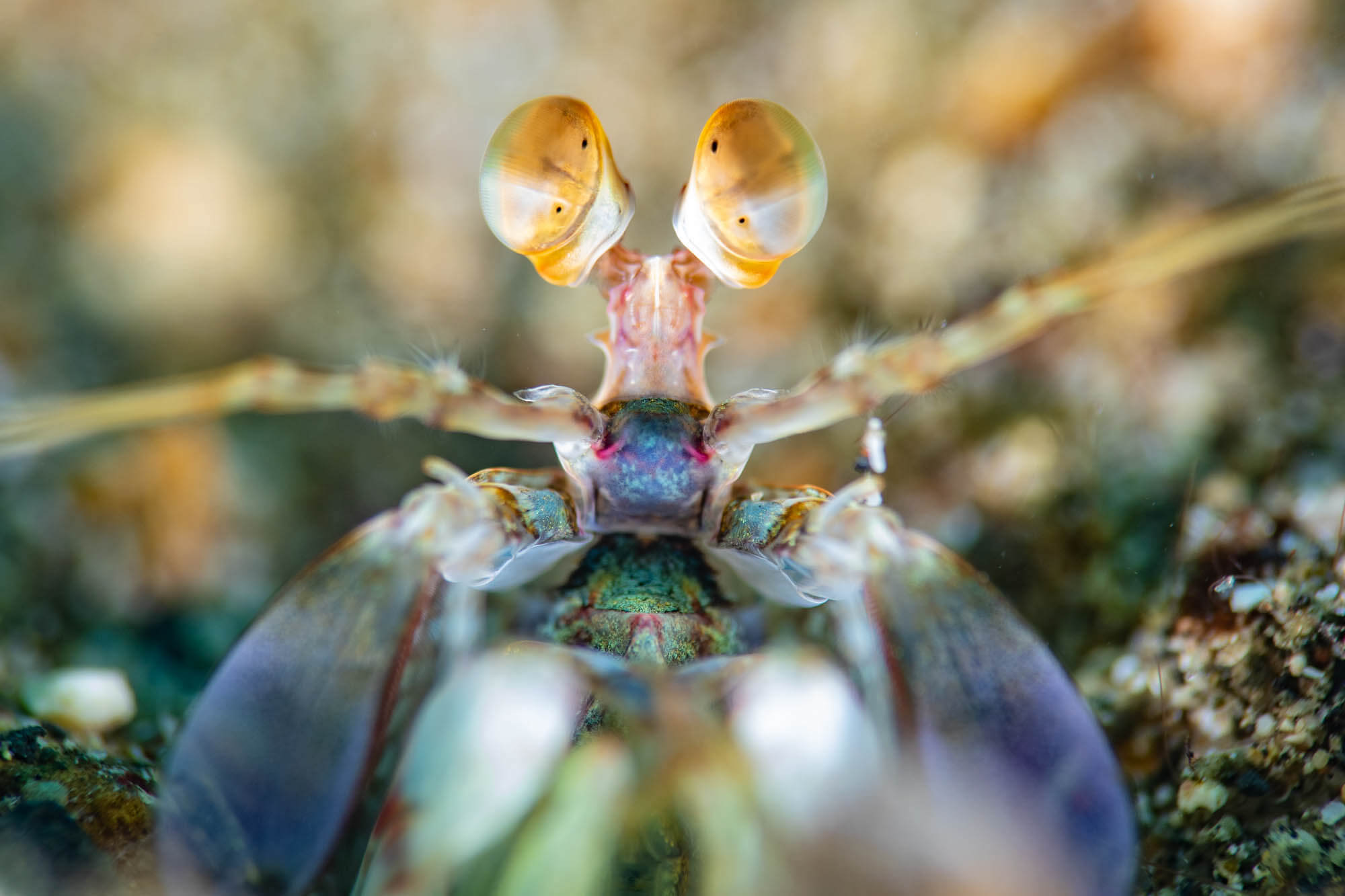
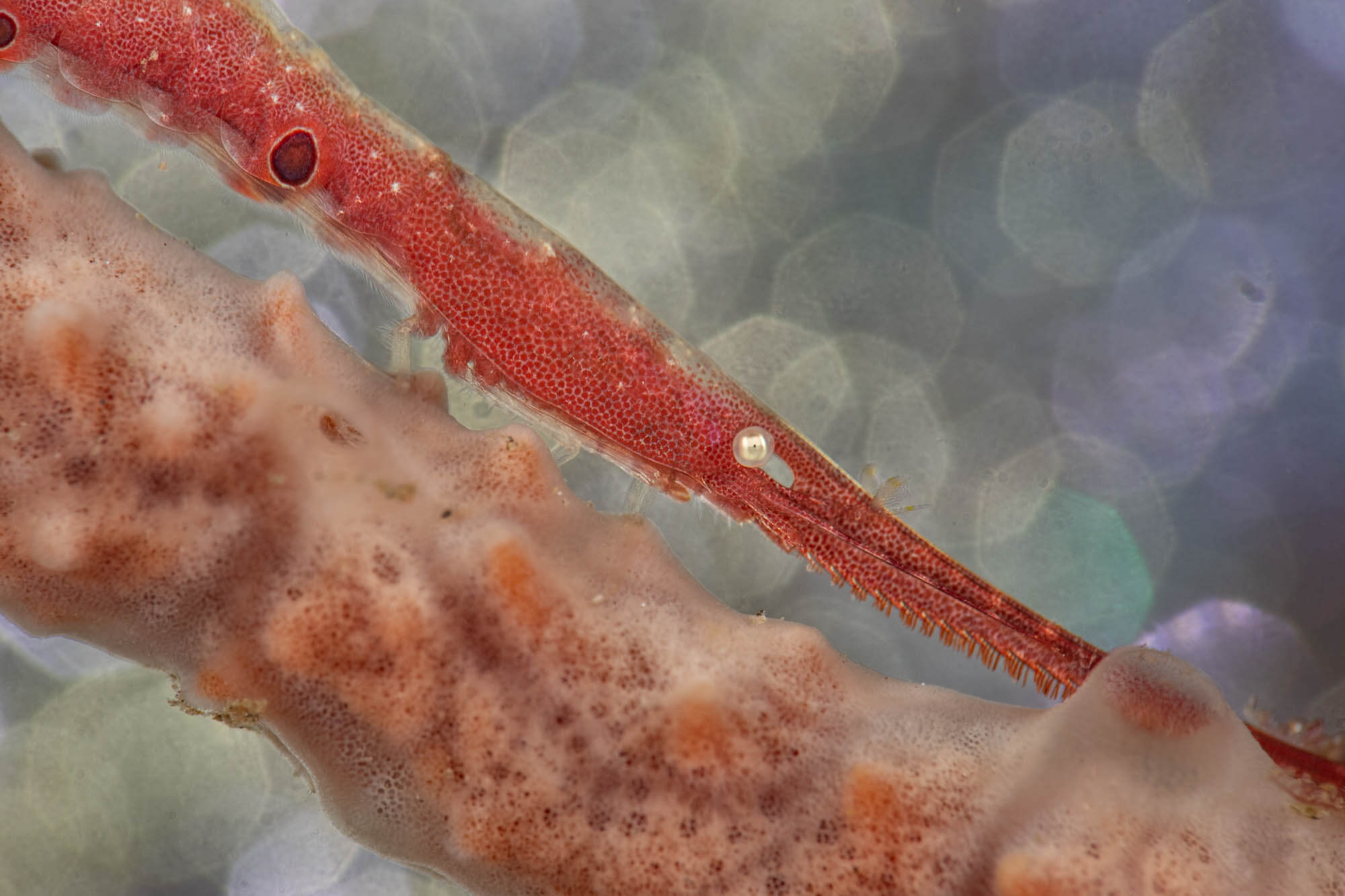
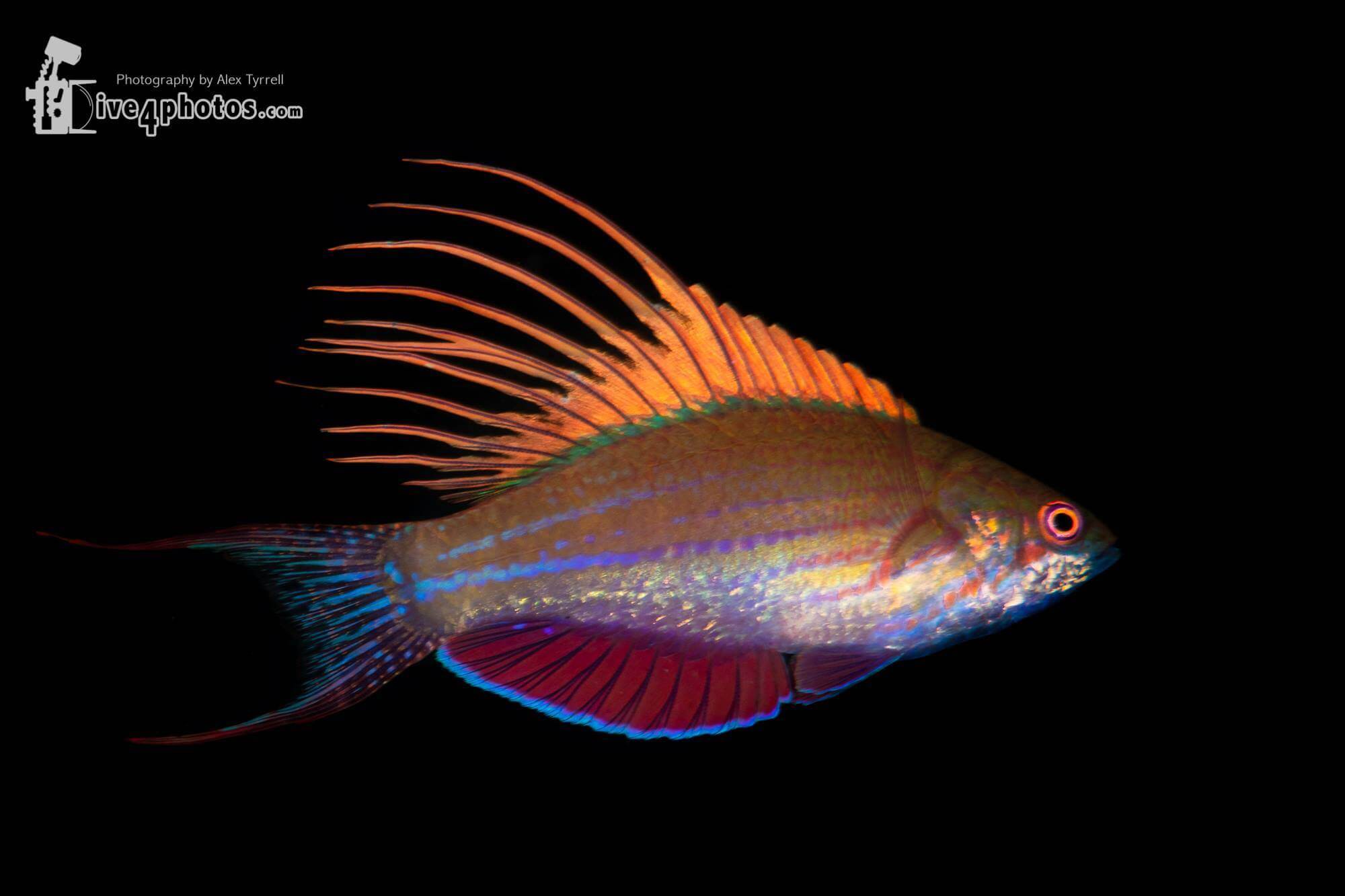
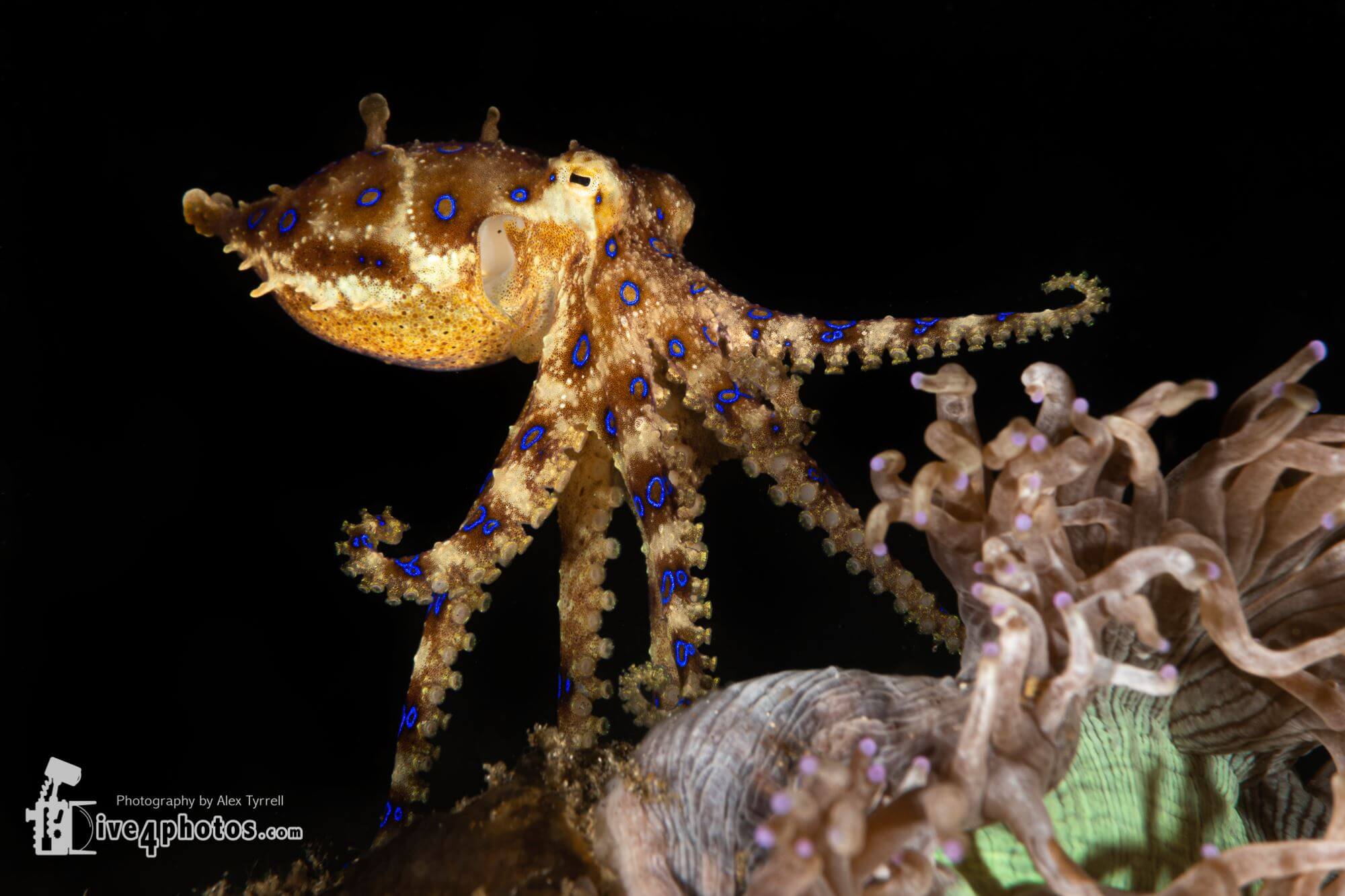
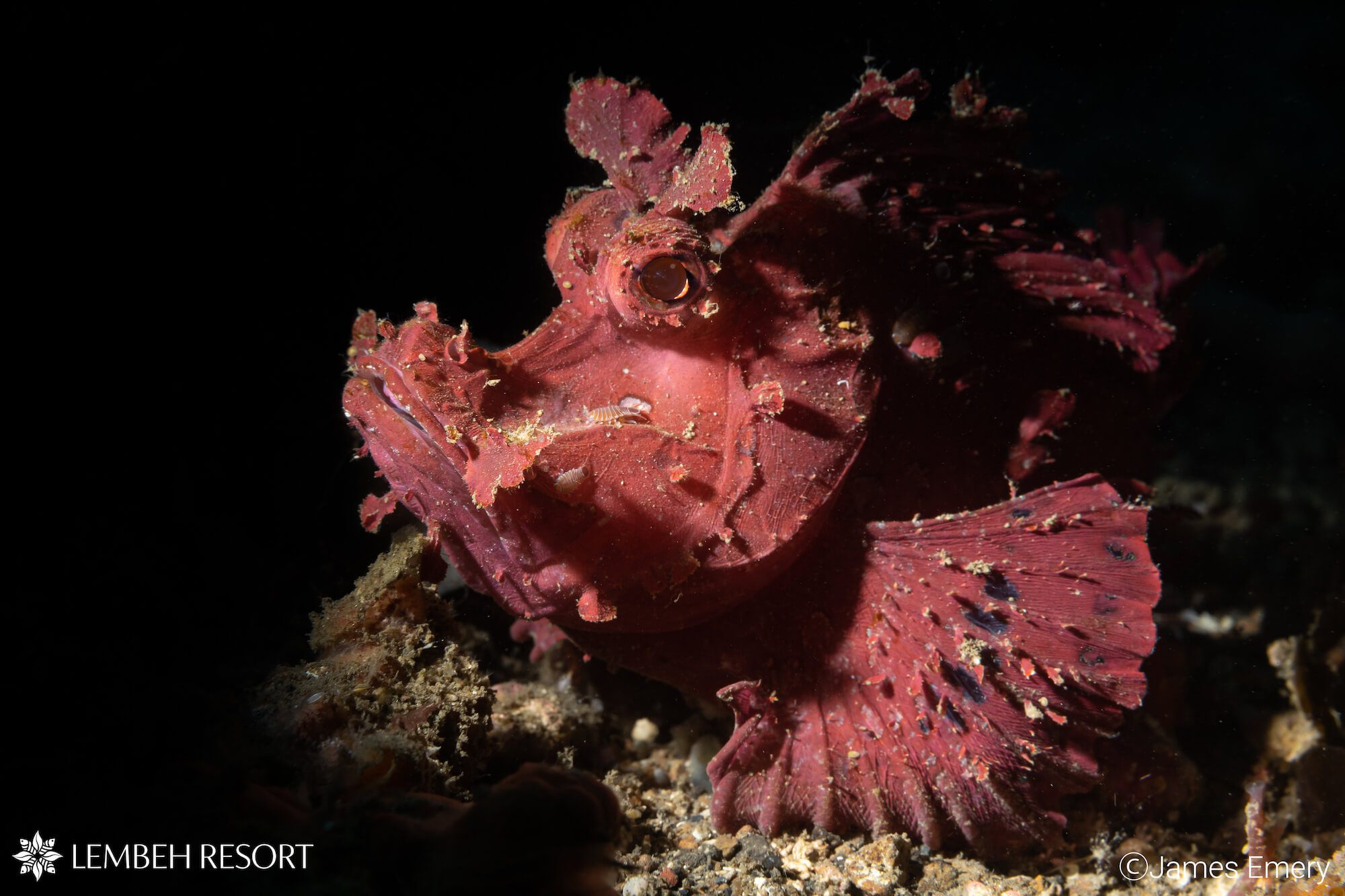
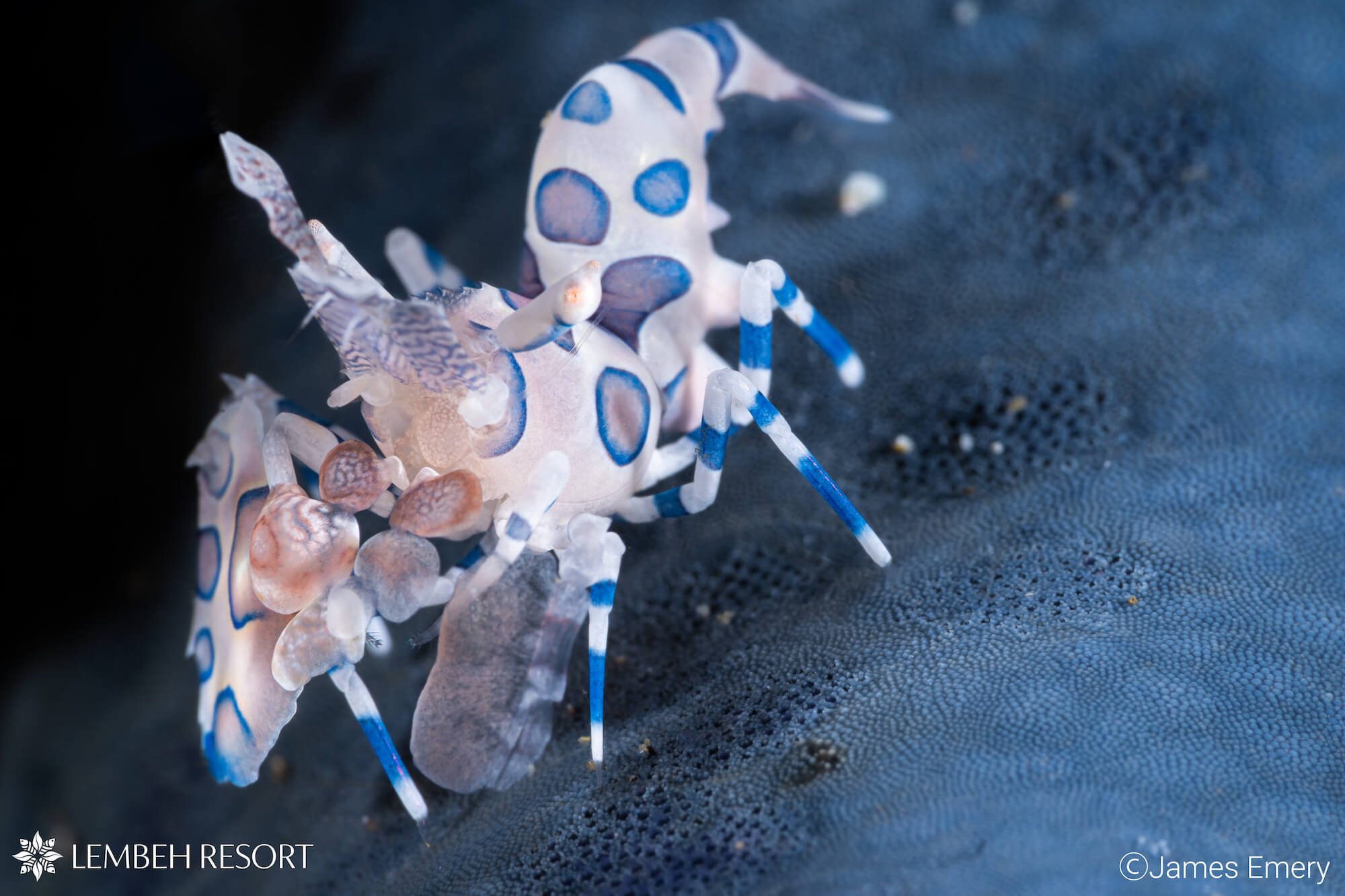
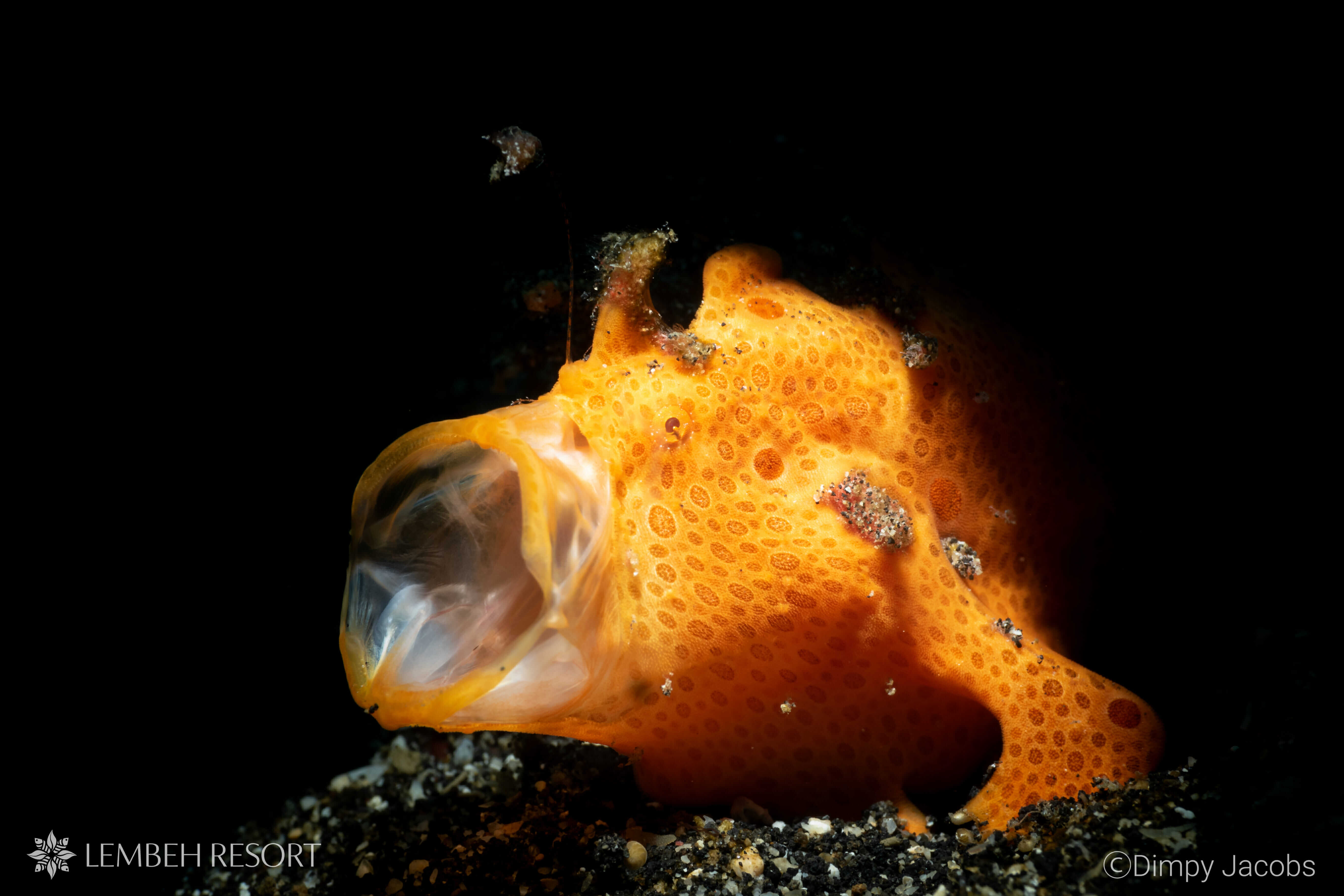
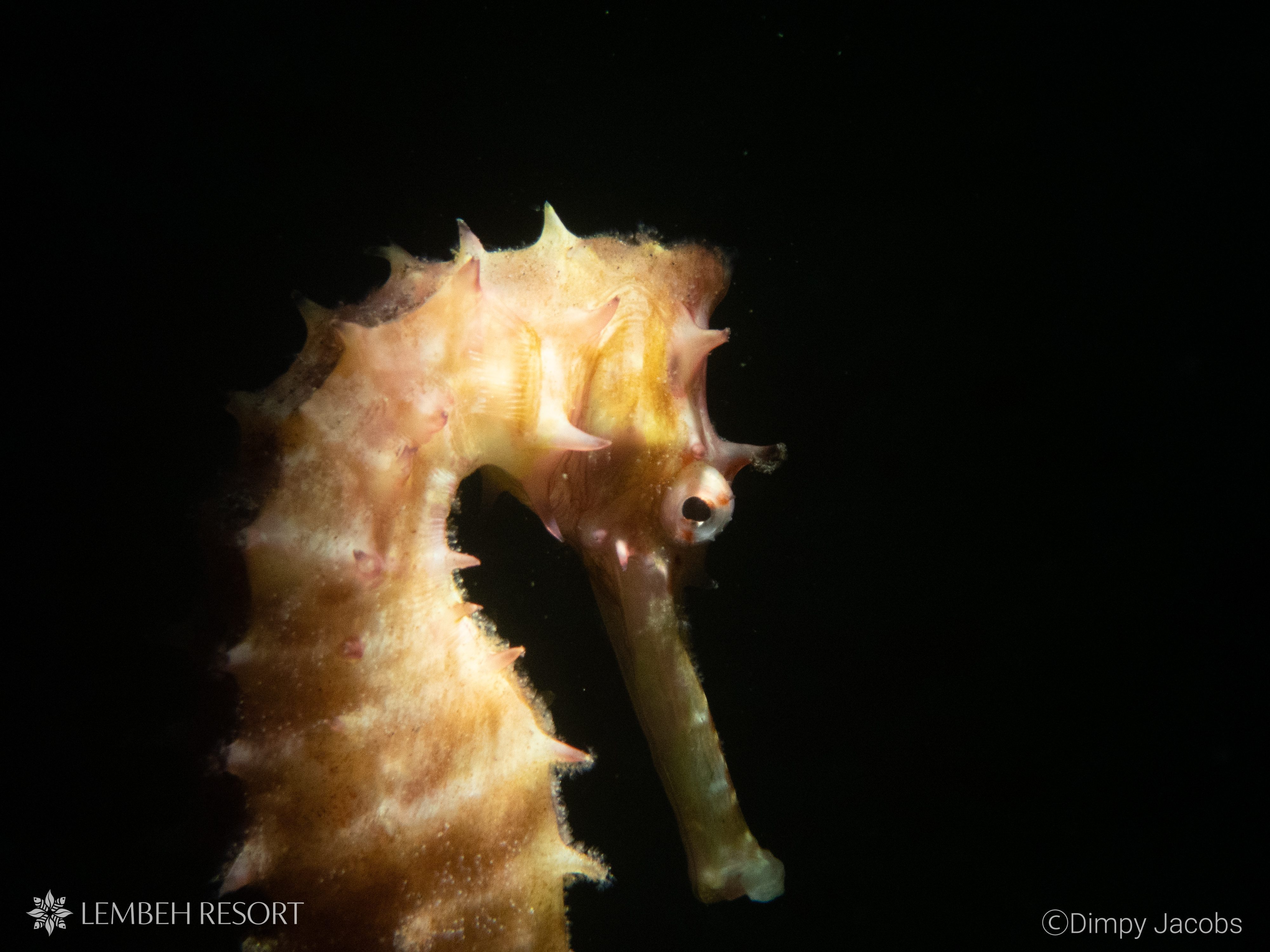
Did you miss out on this years workshop? Join our 9th annual Capturing Critters in Lembeh workshop in January 2021
2021 Photo Pros: Alex Tattersall, Jade Hoksbergen-Spiers and Henley Spiers
Critters…. Everywhere!! Today has been an absolute explosion of critters for all three workshop boats. Our Dive Guides have been creating a symphony of tank banging as they went from one camouflaged crustacean to the next. How to shoot was not so much of a problem as choosing which subject to shoot next!
Pygmy cuttlefish, broadclub cuttlefish, hatching flamboyant cuttlefish, calamari squids laying eggs, blue ringed octopus, coconut octopus, and mototi octopus were just the celaphod action that we saw today – that’s before we start listing fish and crustaceans!
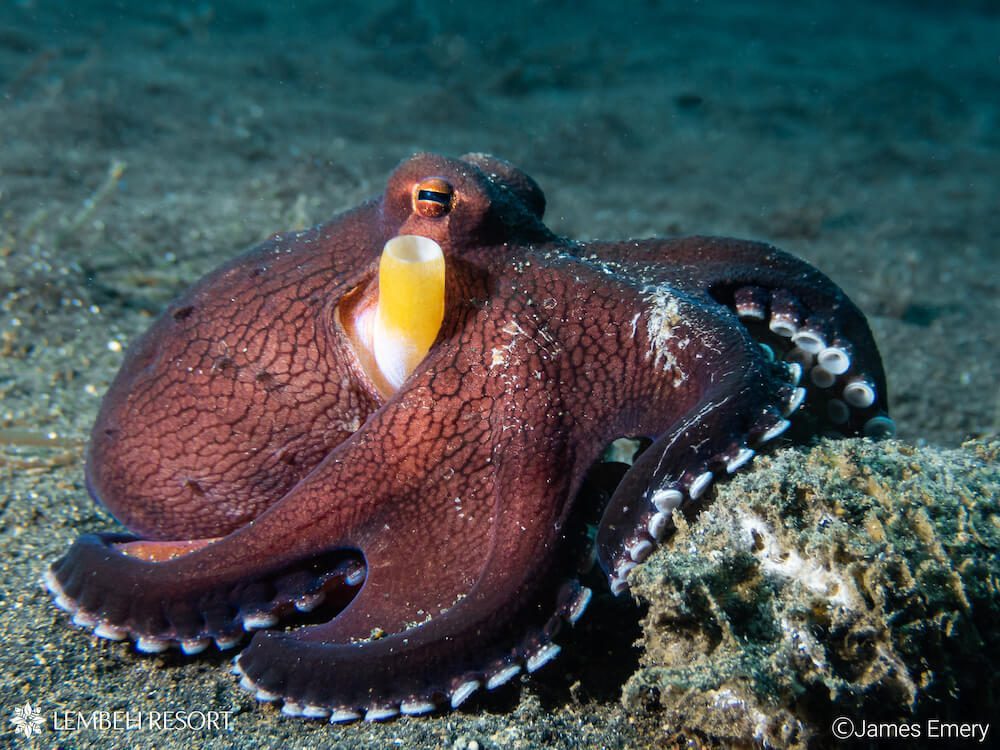
Coconut octopus was just one of the many cephalopod sightings on this mornings dives
Our three workshop pros, Saeed Rasheed, Alex Tyrrell and Todd Winner, were off to an early start this morning with Alex’s “Macro Composition” presentation (see notes below), which got everyone thinking about framing their subjects for the most effective results.
Lunch today was a clamor of laptops, trouble shooting and questions for the pros, all squeezed in while enjoying one of Lembeh’s finest lunchtime buffet spreads. As the decadent cannoli and miniature fruit pies were being finished, Saeed hosted the first of his Lightroom series (see tomorrow’s post).
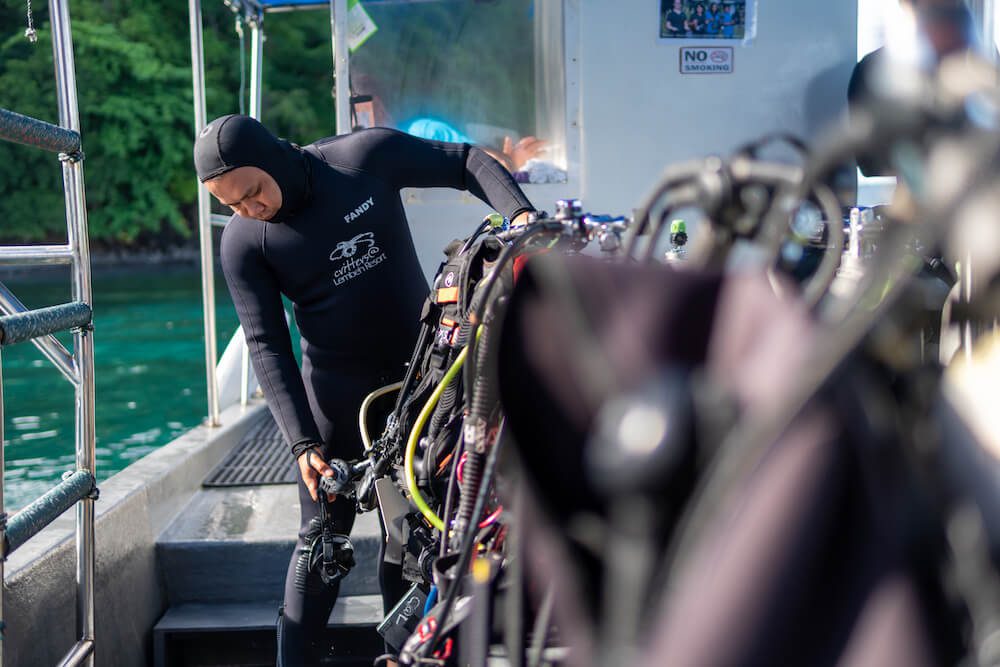
Dive Guides have been working hard this week ensuring all participants have the best photography opportunities possible
The last dive of the day heralded some of Lembeh’s finest frogfish, pipefish and and an army of shrimp species and this evening was the first of the critique sessions with the pros. The critique sessions are one of the most valuable components of the workshop as participants’ images are critiqued by the pros and edited live in Lightroom.
It was an action packed day and leaves us full of anticipation for what tomorrow has in store!
Daily Presentations Notes
Below are some of the points covered by Alex Tyrrell in his Macro Composition presentation. Alex is the owner of Dive4Photos, and offers underwater photography training in Thailand. Find out more about Alex at his Dive4Photos website here
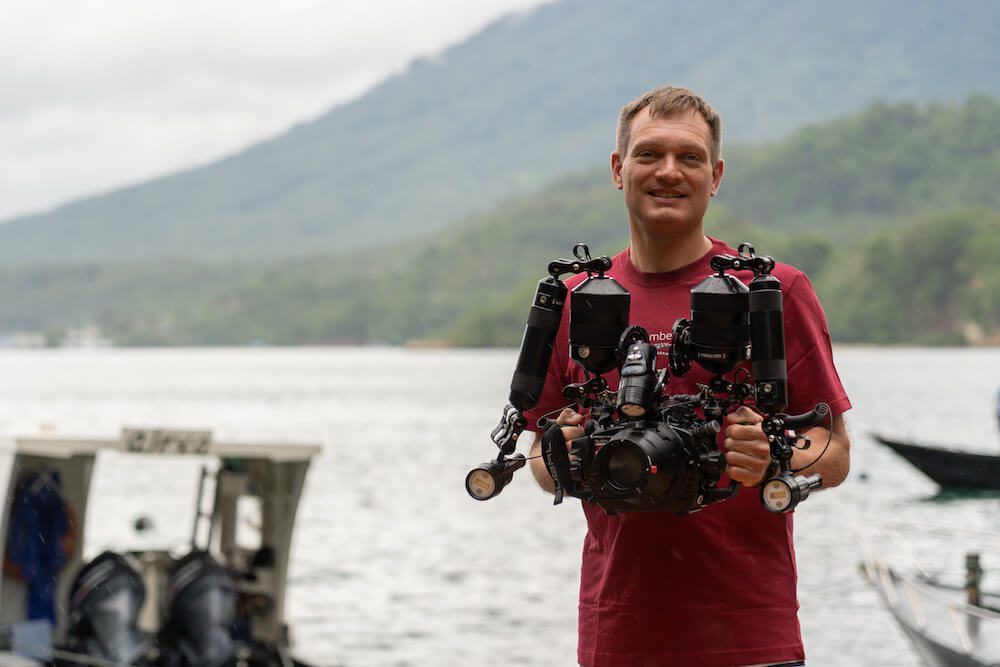
Alex Tyrrell’s underwater images have been recognized in diving media around the world
Alex Tyrrell Basic Macro Composition: Mistakes to Avoid & Tips
When shooting, use the SEA method: Shoot, Evaluate and Adjust. Evaluate all images (as best you can) on the LCD screen and check especially for:
- Correct Exposure: Images should not be blown out or too dark
- Sharp Focus: images MUST be in focus (or at least the part you intended)
- Desired Composition: How does the image look overall? Where is your eye drawn to? Does the subject stand out?
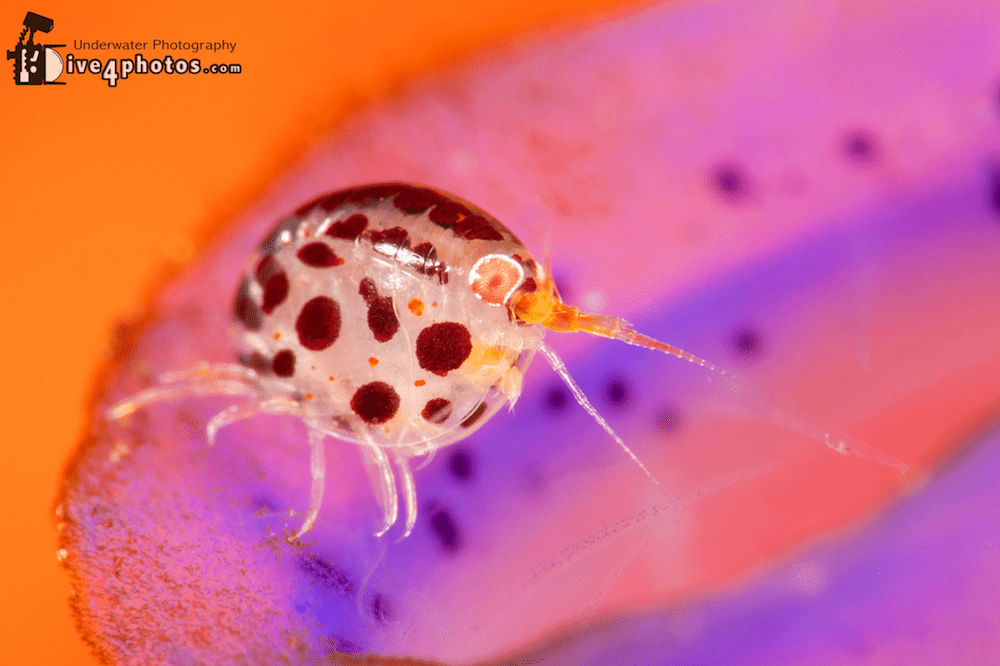
Backgrounds can make an image as much as the foreground / subject
When considering the composition of an image, ask yourself how you can improve the image. Here are some things to avoid and common mistakes:
- Distracting negative space (background / foreground)
- Subject blends into background (very common in muck diving)
- Focal point not sharp i.e. eyes or rhinophores
- Area of highest contrast isn’t the subject
- Bad shooting angle i.e. downwards
- Distraction at the edge of the frame
- Subject too small in the frame
- Subject has no space to breathe (headroom)
- Subject separation – subject merger & amputation
- Bad strobe placement i.e. not lighting key elements
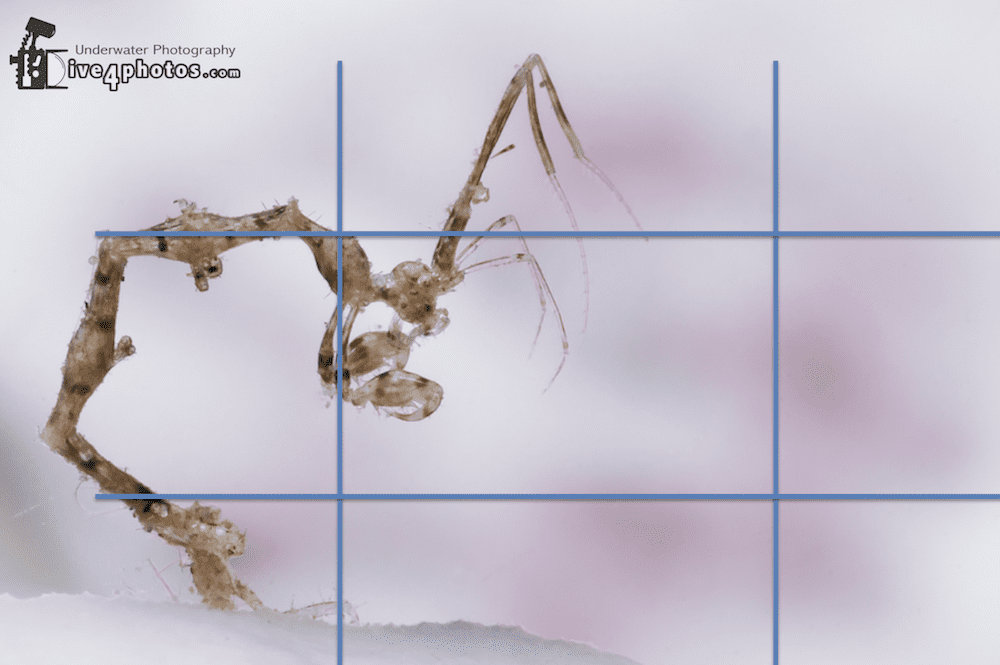
Consider the rule of thirds when shooting to create a more interesting composition
The Importance of Backgrounds
Think before you press the shutter; what’s in the background? This is another factor that can make a good photo great, or a great photo opportunity average! The background or negative space (i.e. the portion of your image that is not the main subject) is crucial in good composition. You could have an amazing subject but if you cannot differentiate it from the background, it just won’t have the desired impact. It could be a very average subject, but with good negative space it can outshine a photo of a much rarer or unusual subject with an unattractive background.
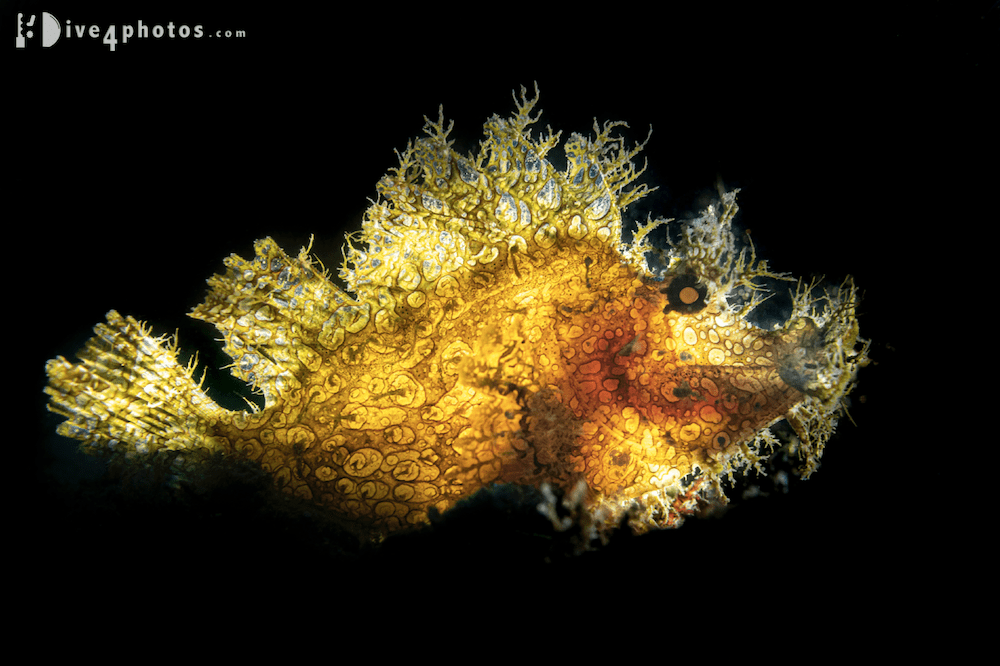
Lighting techniques including backlighting can be used to create effects and eliminate distracting backgrounds
Other Points To Note
- Eye Contact: It is human nature to look at the eyes of a living creature. Make sure the eyes of your subject are in focus.
- The Rule of Thirds: Imagine two vertical & horizontal lines dividing the frame. Place subject on lines or intersections (nodal points). This gives a feeling of balance & harmony. Most cameras have a function to set a Rule of Thirds grid on the LCD or Viewfinder to help (image above).
- Orientation: Some subjects lend themselves better to a horizontal or vertical orientation. Don’t get stuck in one orientation. Play around and try using diagonals too for more interesting effects.
- Behaviour: Wherever possible try to capture behaviour. This doesn’t necessesarily need to be hatching or mating, critters in their natural environments also tell a story – think about what the critter is sitting on and try to incorporate it.
- Lighting Techniques: Different lighting techniques can also help with composition such as snooting or inward lighting
- Black and Blue Backgrounds: Very effective for creating contrast between the subject and the background. Also very good for eliminating distrating or unattractive backgrounds – more on how to accomplish black backgrounds in Alex’s next presentation!
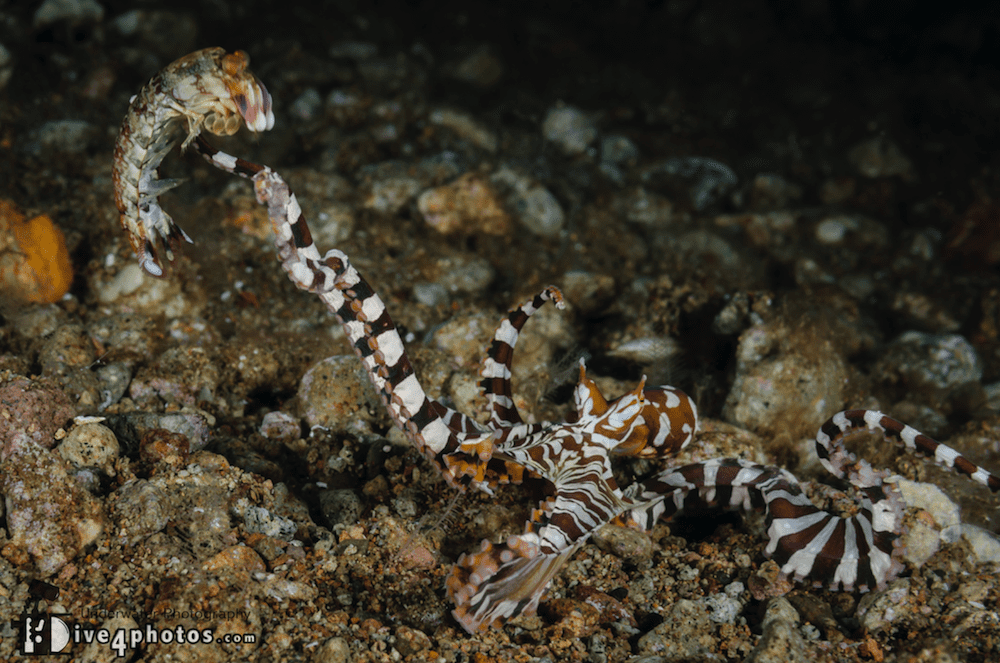
Capturing behaviour and telling a story gives another dimension to images
Daily Critter Count
Today’s most iconic critter sightings included:
Coconut octopus, blue ringed octopus, mototi octopus, broadclub cuttlefish, flamboyant cuttlefish and eggs hatching, pygmy cuttlefish, calamari squid laying eggs, pygmy squid, clown frogfish, orange painted frogfish, warty frogfish, hairy frogfish, juvenile white painted frogfish, giant frogfish, dancing shrimp, tozeuma shrimp, xeno crab, decorator crab, candy crab, orangutan crab, hairy squat lobster, double-ended pipefish, winged pipefish, thorny seahorse, ornate ghost pipefish, Ambon scorpionfish, weedy rhinopias, paddleflaps rhinopias, pinnate batfish, soft coral cowrie and mating Hypselodoris bullockii nudibranch.
Scroll through today’s images…
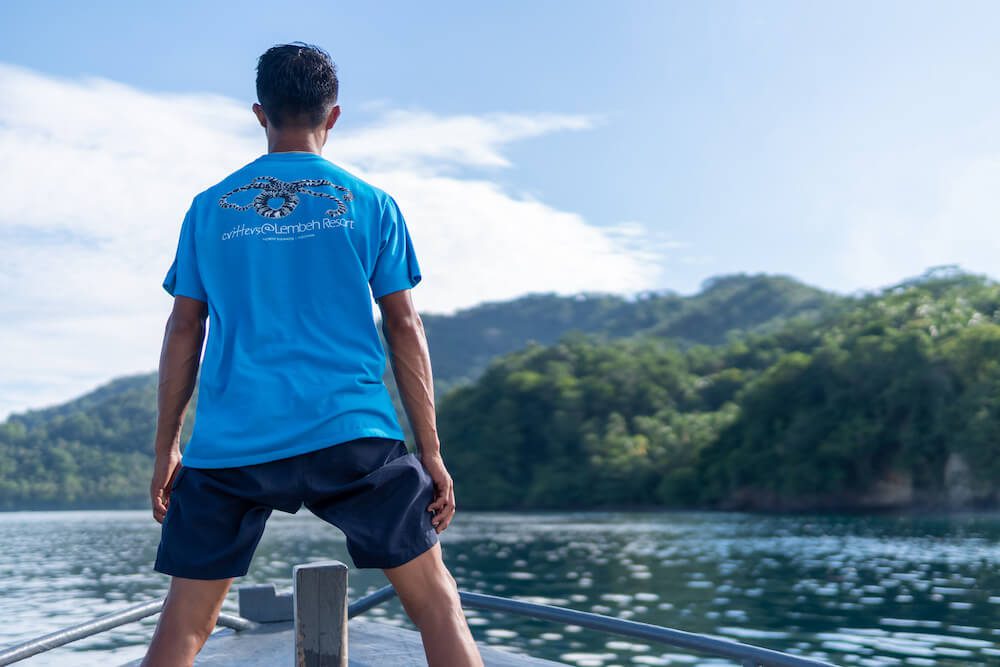
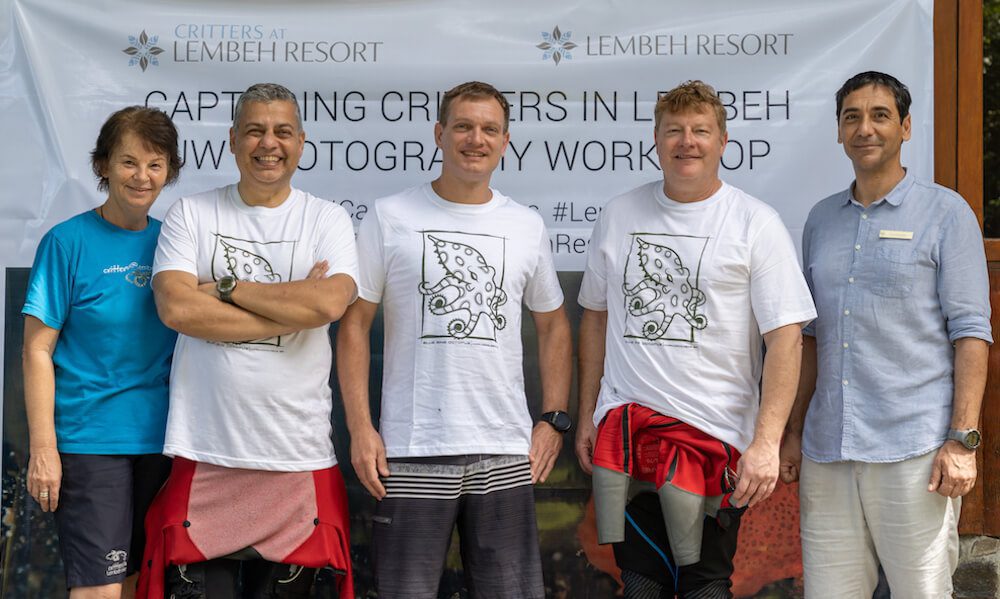
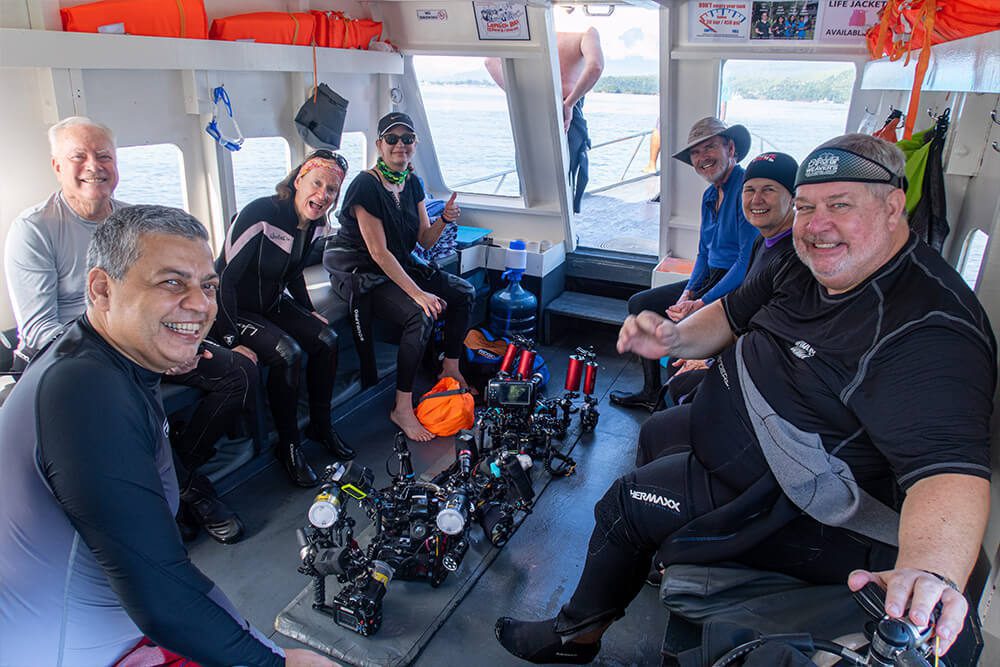
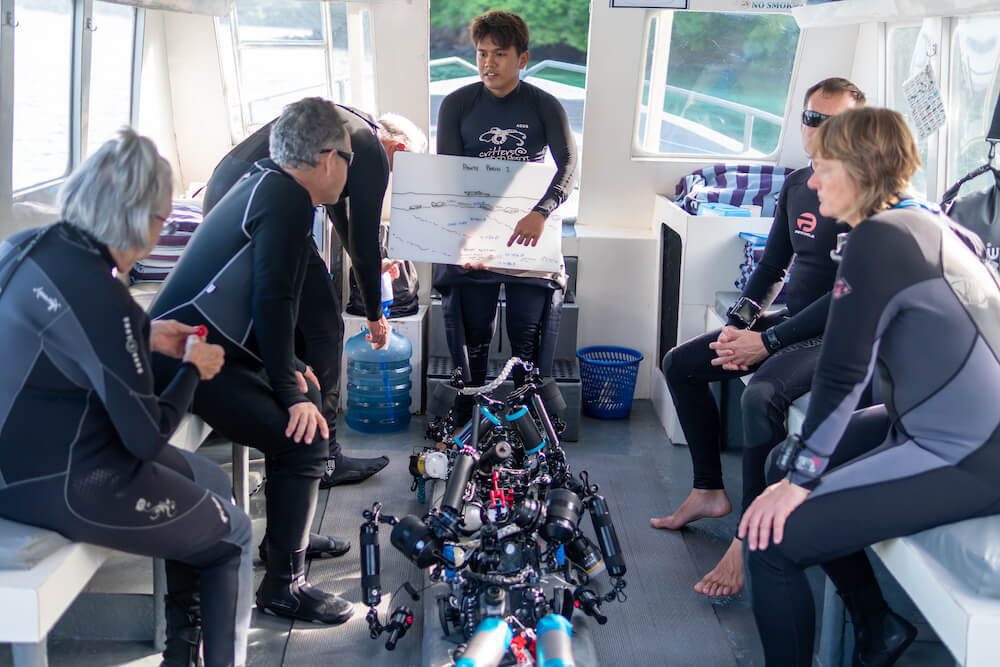
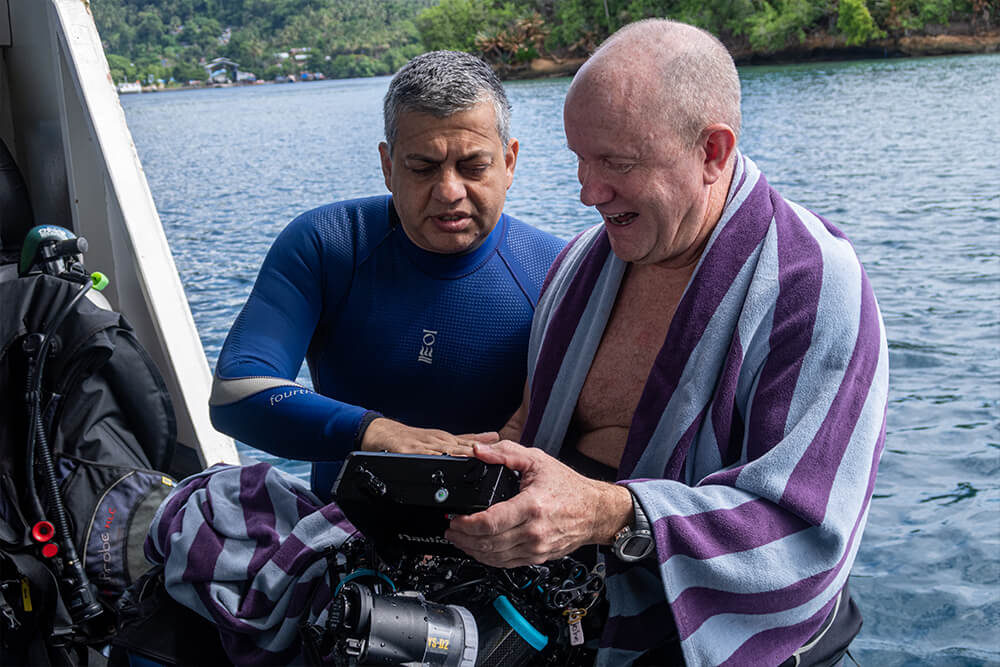
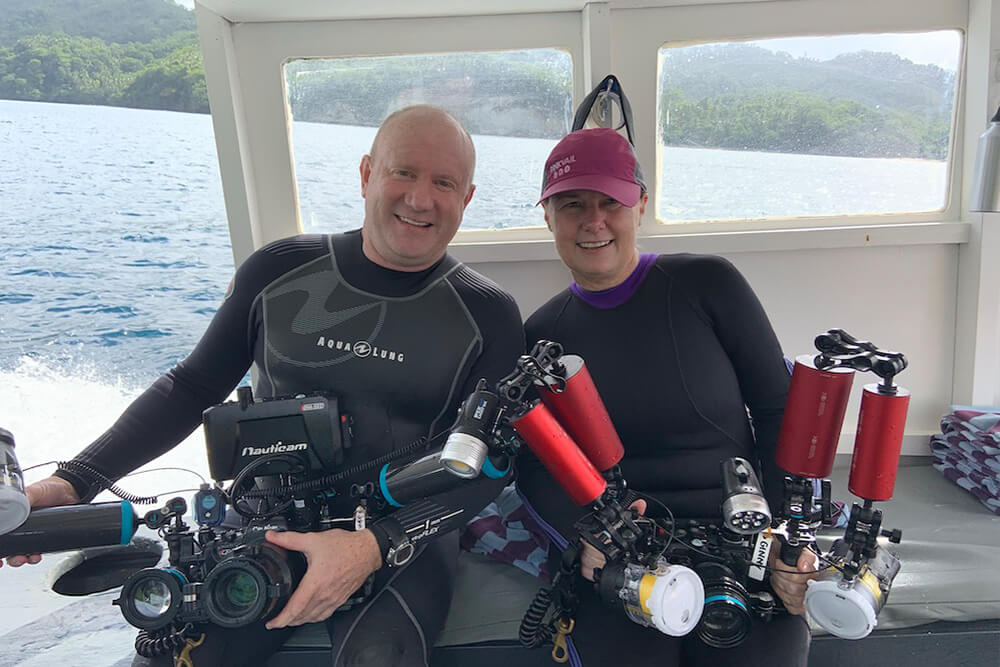
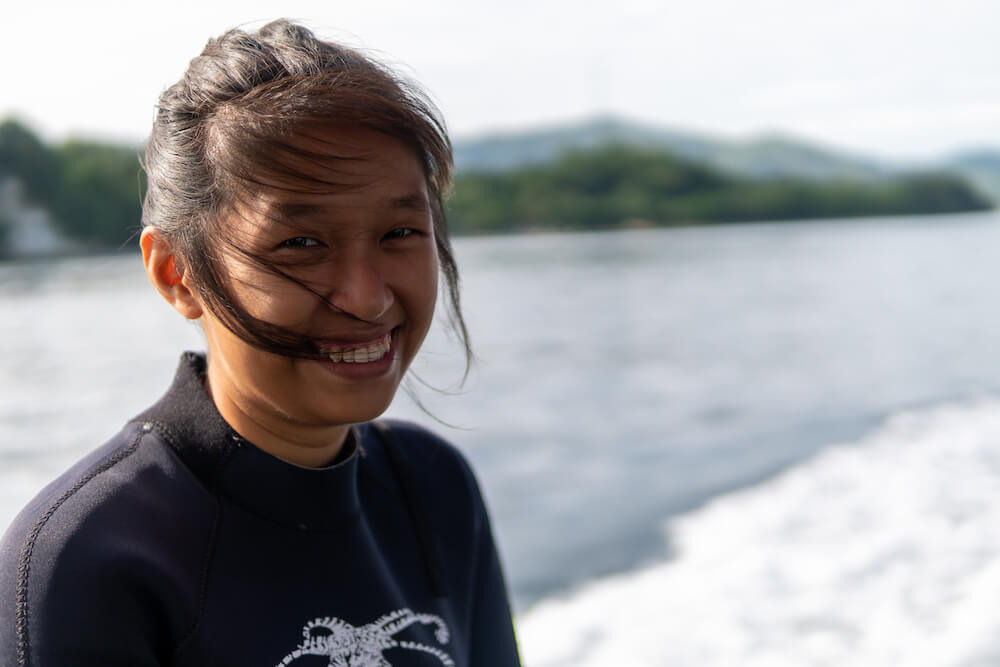
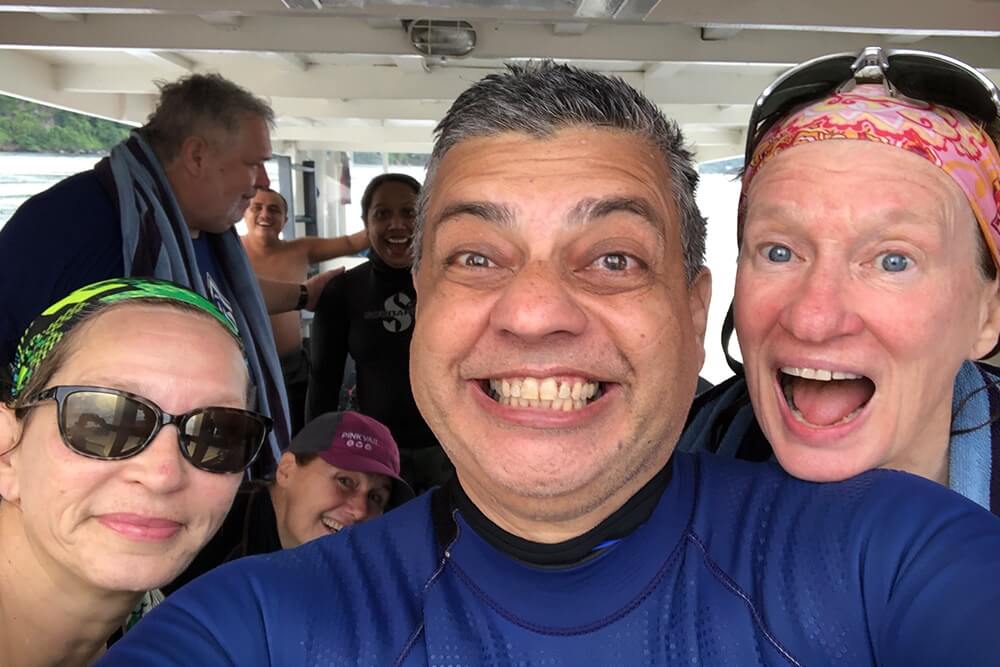
Did you miss out on this years workshop? Join our 9th annual Capturing Critters in Lembeh workshop in January 2021
2021 Photo Pros: Alex Tattersall, Jade Hoksbergen-Spiers and Henley Spiers
Today the critter sightings have just kept coming – as well as many repeat sightings from our previous days, we had several new, and some quite unexpected subjects. Participants onboard Andrea Boat had their cameras at the ready as the dive guides discovered a suspicious looking patch of disturbed sand where a stargazer had done a-not-quite-good-enough job of burying itself.
Estuarine stonefish, bargibanti pygmy seahorses and pink eye gobies were all new subjects this week and even a banded sea snake came swimming through one site to be captured on camera! For all of today’s sightings in the Lembeh Strait, check out our Daily Critter Count below.
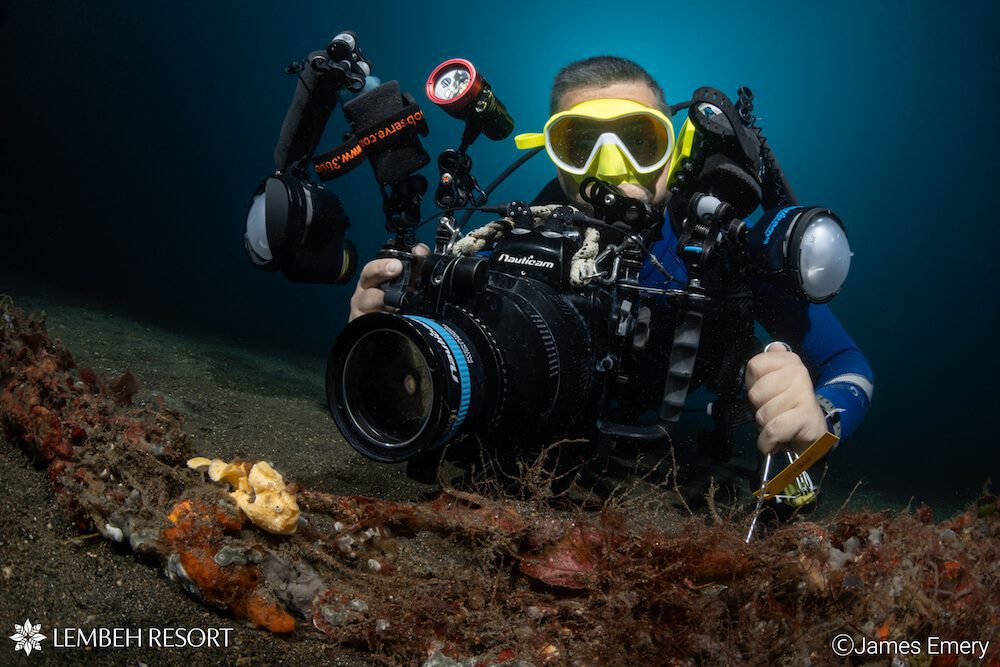
Photo Pro Saeed Rashid photographing juvenile warty frogfish
This afternoon’s presentation had been eagerly awaited by many and as lunch drew to a close, laptops were brought out and downloads got underway as Saeed Rashid took to the ‘stage’ to start his series of Adobe Lightroom editing presentations. Saeed’s presentation included an introduction to Lightroom as a full editing and cataloging suite. Saeed explained the basics of Lightroom and how to find your way around this modular program, which he managed to break down into manageable sections.
Saeed is using (and recommends) Lightroom Classic as opposed to Lightroom CC which is cloud based and has limitations. Check out Saeed’s 30 minute presentation on Lightroom basics here:
Daily Critter Count
Today’s most iconic critter sightings included:
Coconut octopus, blue ringed octopus, mototi octopus, broadclub cuttlefish, flamboyant cuttlefish, warty frogfish, hairy frogfish, painted frogfish, harlequin shrimp, dancing shrimp, tozeuma shrimp, emperor shrimp, xeno crab, harlequin crab, decorator crab, candy crab, depressed spider carb with eggs, orangutan crab, bargibanti pygmy seahorse, thorny seahorse, common seahorse, weedy rhinopias, paddleflaps rhinopias, humpback scorpionfish, stargazer, estaurine stonefish, yellow ornate pygmy goby, pink eye goby, pinnate batfish, soft coral cowrie, pikachu and mating solar nudibranch and a banded sea snake!
Scroll through today’s images…
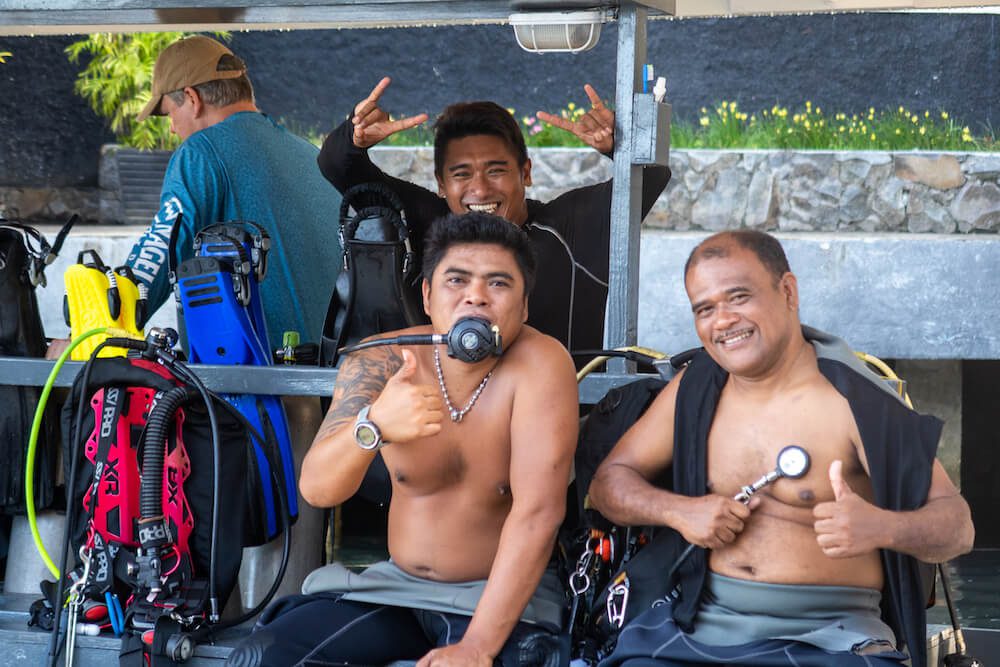
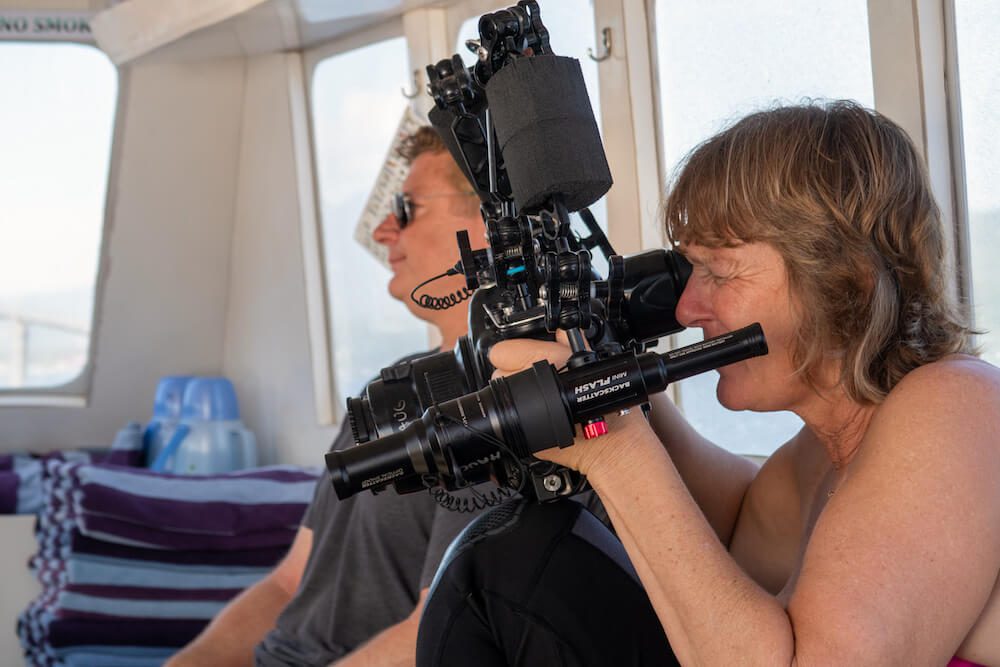
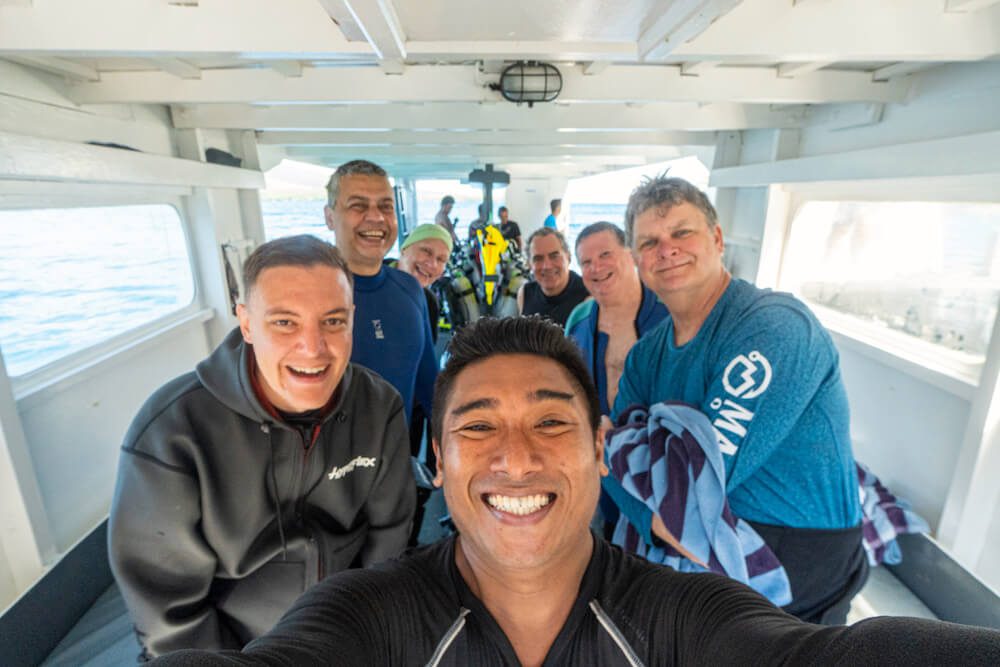
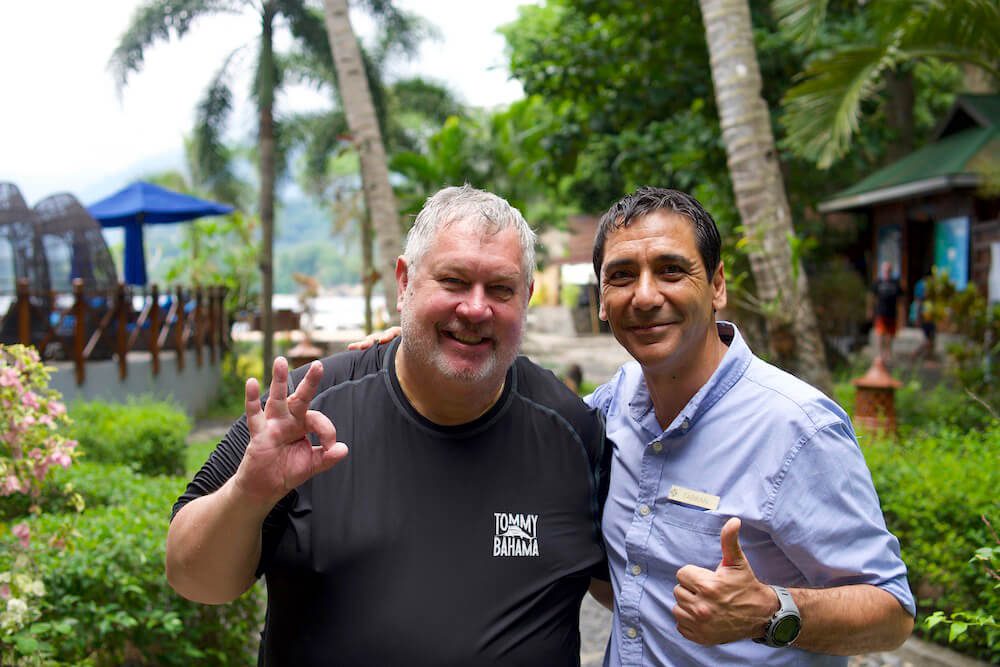
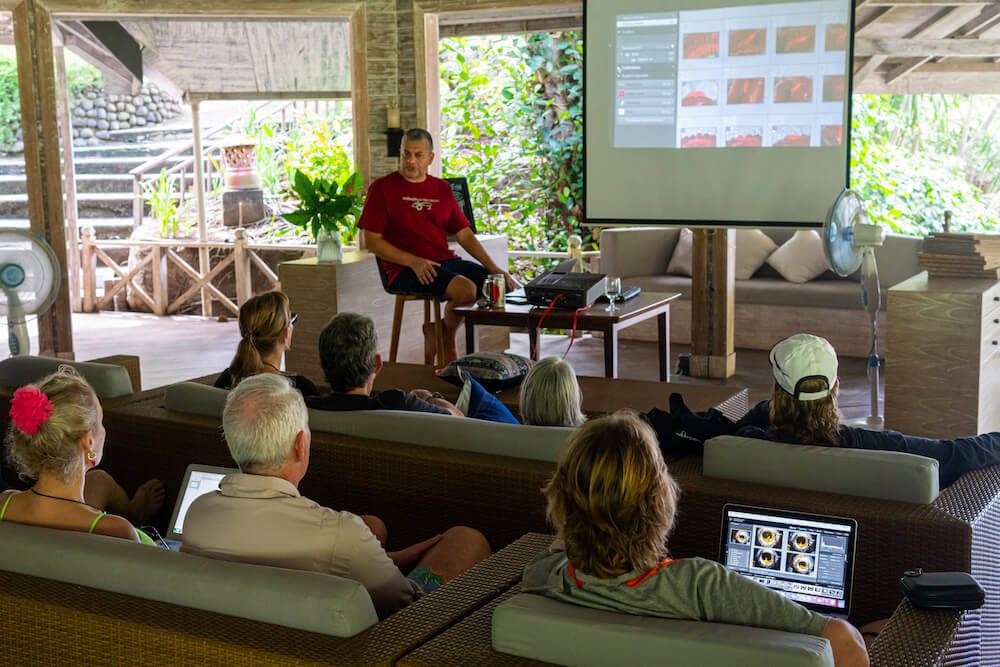
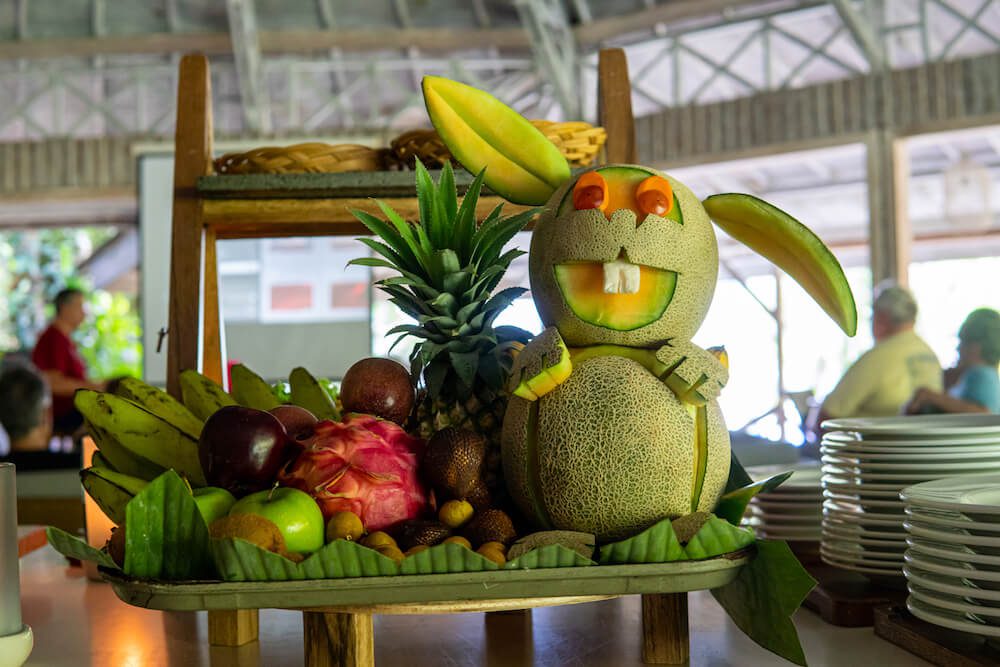
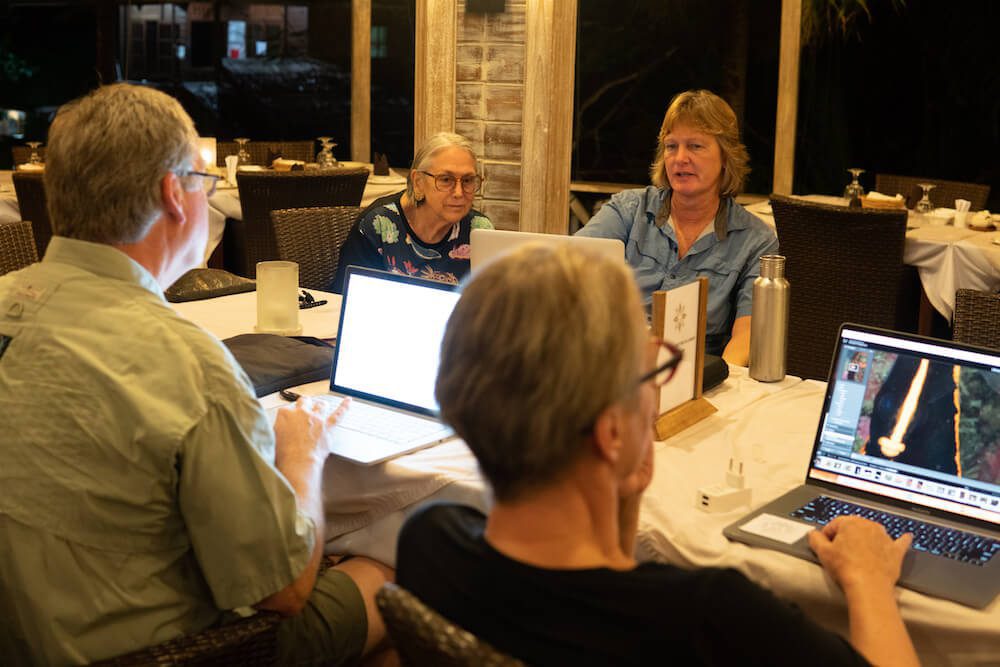
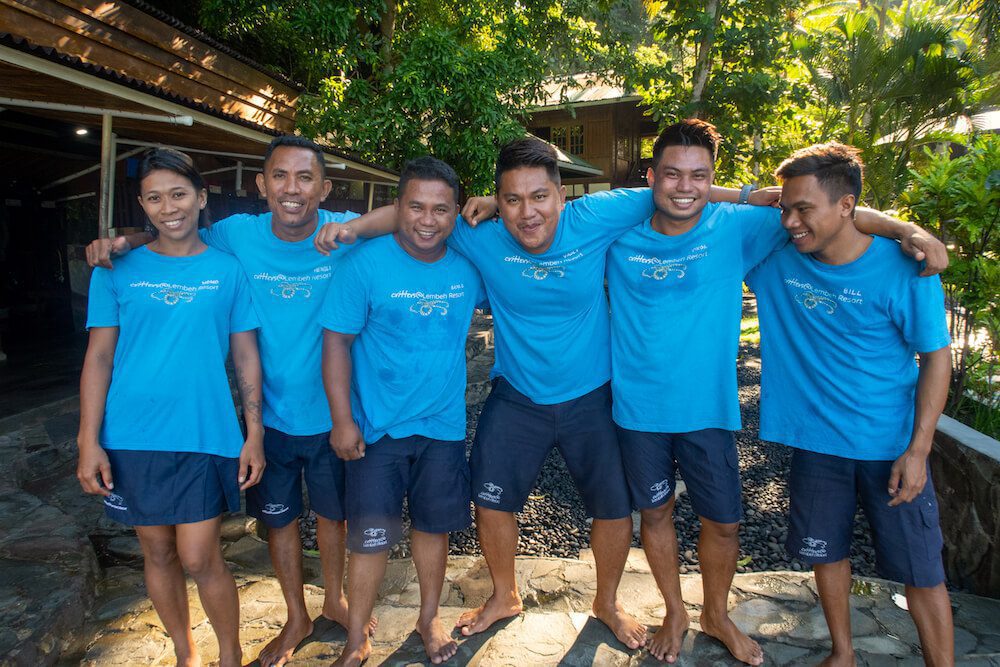
Did you miss out on this years workshop? Join our 9th annual Capturing Critters in Lembeh workshop in January 2021
2021 Photo Pros: Alex Tattersall, Jade Hoksbergen-Spiers and Henley Spiers
As day 6 of Capturing Critters got off to another early start this morning it’s becoming increasingly clear that no-one has told the weather this is technically Indonesia’s rainy season. Bright blue skies and sunny surface intervals were the order of the day as our 16 participants and pros took to the Lembeh Strait.
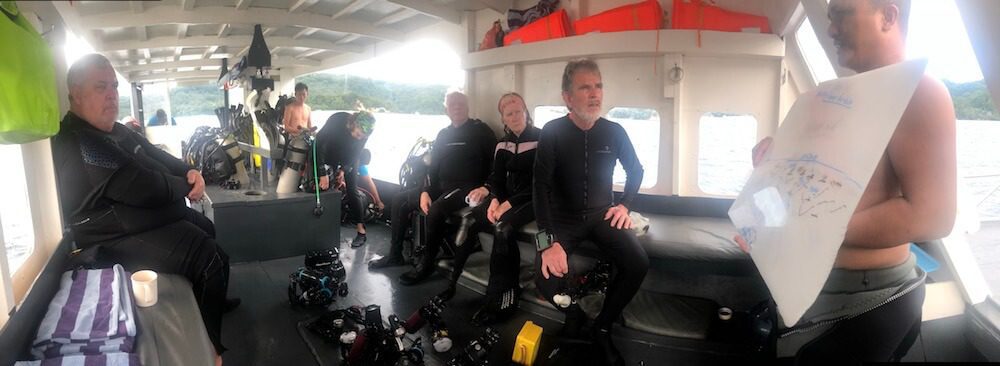
As we enter the final day of the workshop, before the wide angle extension, the participants are as enthusiastic as they were on day 1. Armed with an arsenal of tips and techniques which they have been learning over the week, the quality of images being generated is soaring dive after dive.
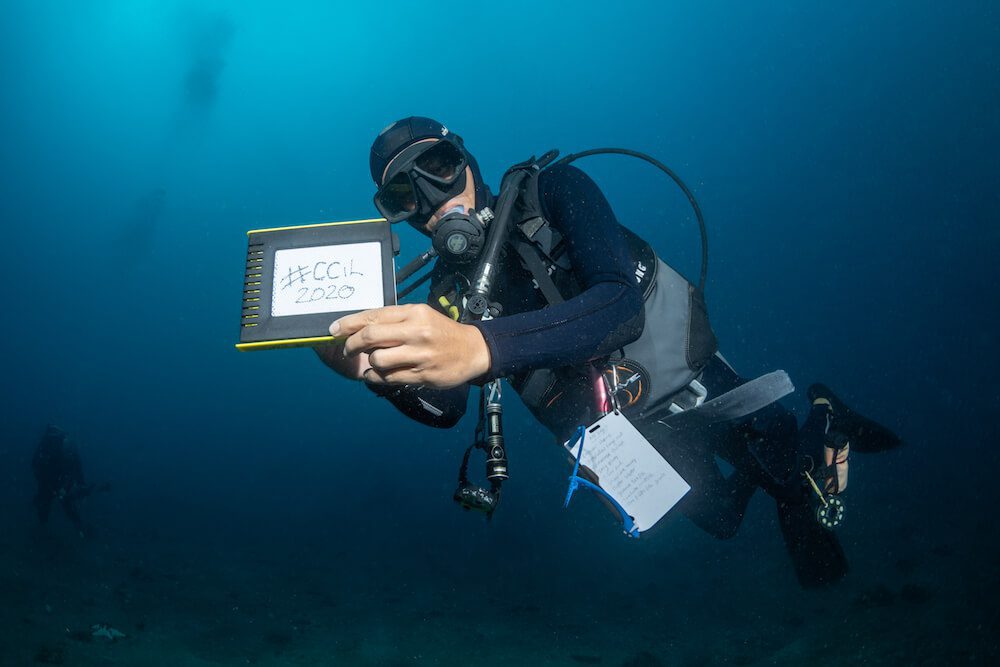
Lembeh’s Dive Guides have been spotting and critter hunting their neoprene socks off this week and the sightings have been incredible. The critters have put on some amazing behavioral displays including hatching, mating, and today one particularly mischievous coconut octopus took up residence in photo pro Saeed’s Rashid ‘Tube of Joy’… a photography accessory in case you were wondering!
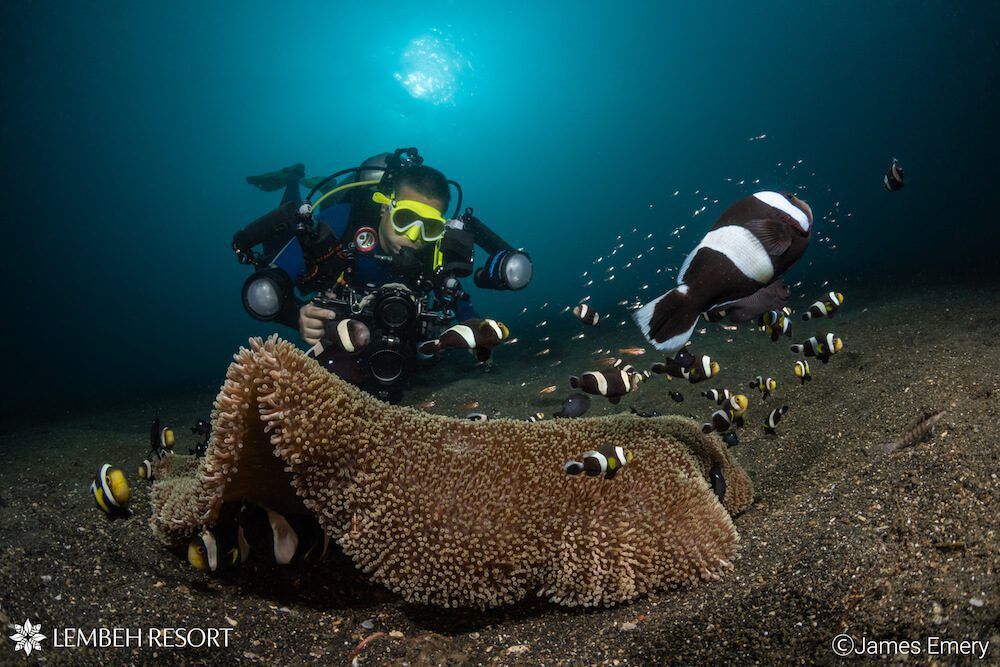
Today’s presentation by Alex Tyrrell on how to capture black and blue backgrounds was one of the most eagerly awaited and we can’t wait to see Alex’s tip put into practice. Check out Alex’s tips on black backgrounds below…
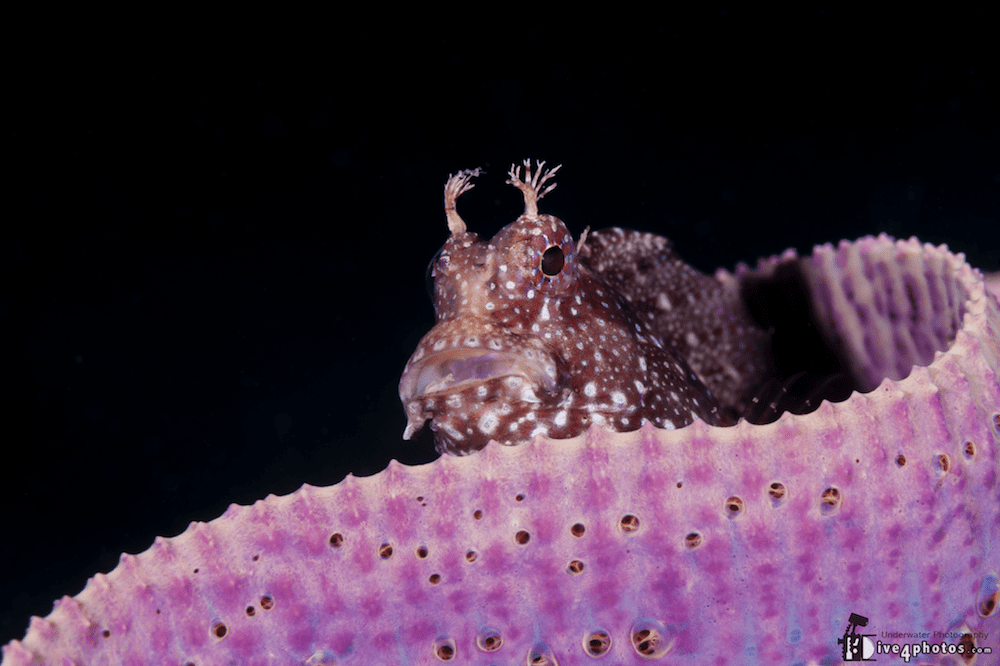
Alex’s presentation today on black backgrounds has been hotly anticipated
Daily Presentation Notes
How to capture a black background: Tips by Alex Tyrrell
Is the highly sought after ‘black background’ continuing to elude you? Here’s Alex’s tips on how to achieve this and when it’s best to use black backgrounds for best effect.
When to shoot a black background:
- When you have an unattractive or distracting natural background, a black background solves your problems when there is no other alternative.
- When shooting a critter that looks particularly striking against black
- To achieve good subject separation when a subject would otherwise blend into the background. A black background will make it the clear center of interest.
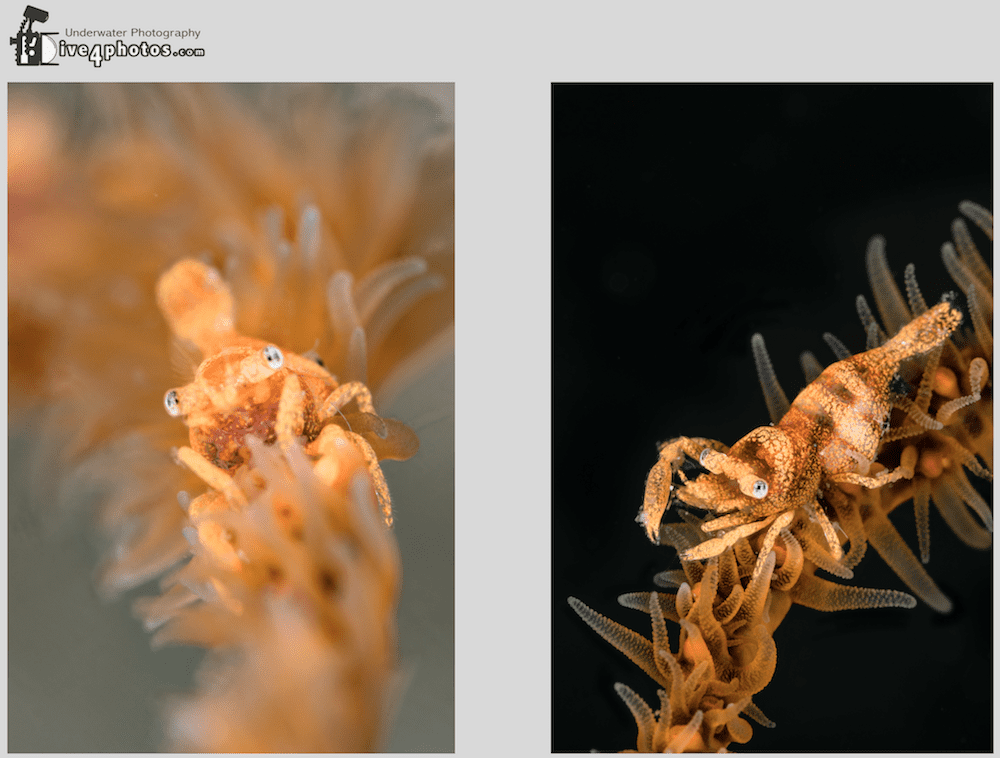
Alex reminded participants to change their angle of shooting according to the background they are hoping to capture
Camera Settings
- Starting points for camera settings for black background
- Compact users can utilize electronic ND Filter to darken background further
Alex recommends the following settings as a starting point… (adjustments need to be made to account for strobe power, reflectivity of the subject and distance from the subject)
Format Aperture Shutter ISO
Compact: f/8-11 1/500th + 64-100
Mirrorless: f/22 1/160th-1/250th 100-200
DSLR: f/32 1/250th-320th 64-200
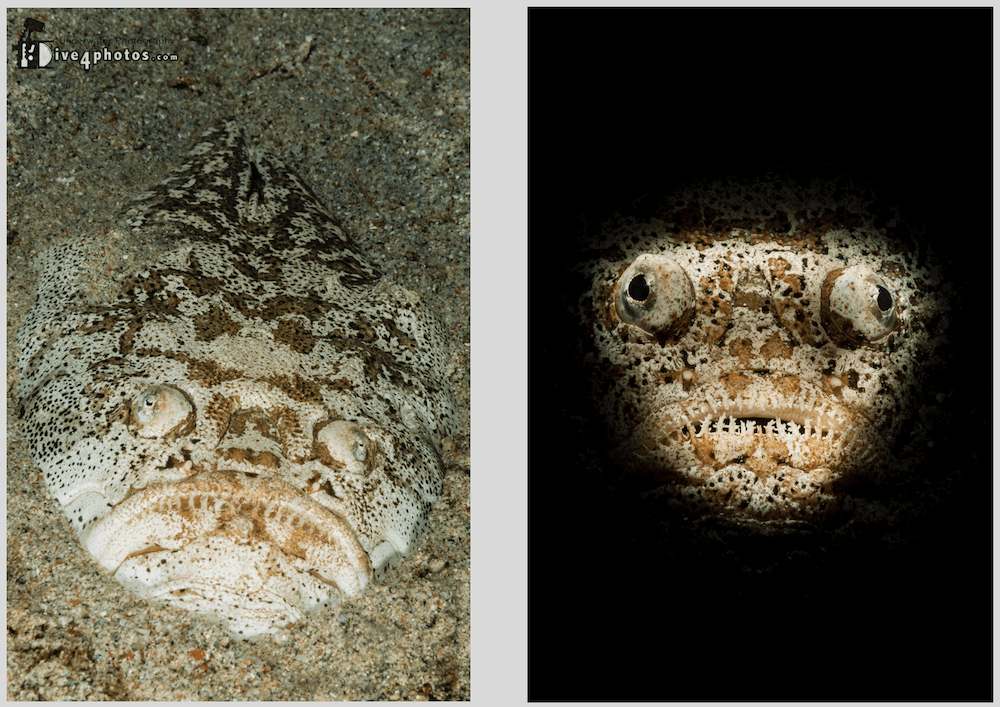
Alex compares front lighting verses snoot lighting
Other Considerations for Black Backgrounds?
- Diving at night will make it easier!
- Only have water behind subject for at least 1m / 3ft
- If background is within 1m / 3ft try Side-Lighting
- If background very close to subject use Inward Lighting
- Use a Snoot to focus the strobe
- Move your own position to so ensure only empty space in the immediate background
- Consider changing your lighting angle (using side lighting, inward or back lighting) if the background is not clear
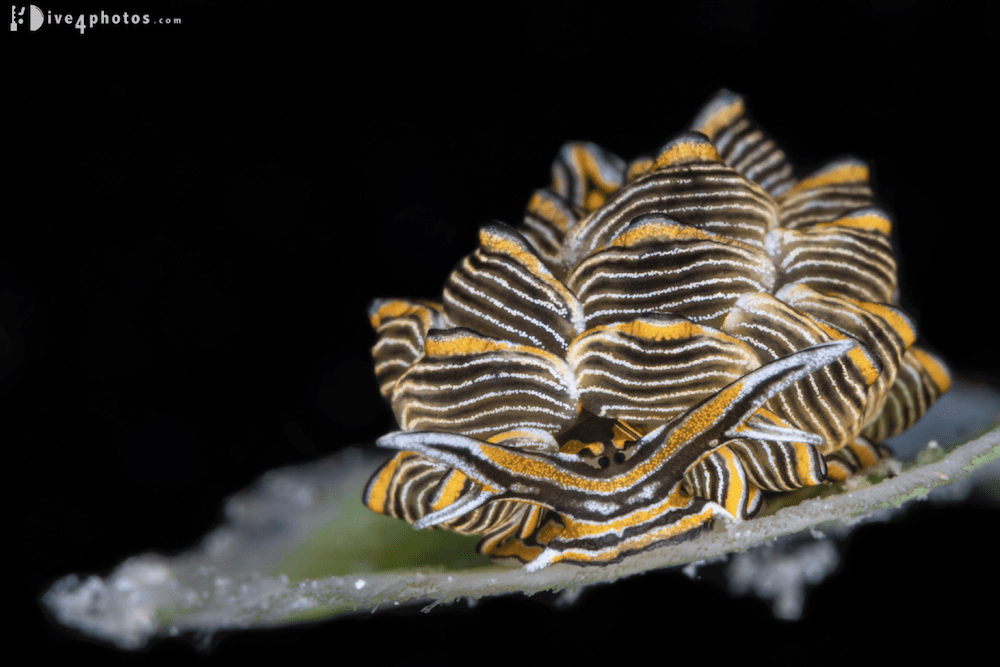
Black backgrounds create good subject separation and contrast
Daily Critter Count
Today’s most iconic critter sightings included:
Coconut octopus, mimic octopus, greater blue ringed octopus, juvenile broadclub cuttlefish, needle cuttlefish, hairy frogfish, painted frogfish, dancing shrimp, tozeuma shrimp, sea pen shrimp, giant mantis shrimp, hydroid snapping shrimp, gorgonian porcelain crab, hairy shrimp, decorator crab, thorny seahorse, juvenile common seahorse, white stick pipefish, ornate ghost pipefish, yellow barred jawfish with eggs, chestnut jawfish, yellow ornate pygmy goby, pink eye goby, juvenile boxfish, phantom velvetfish, Dendrodoris denisoni, Costasiella kuroshimae and Hypselodoris krakatoa nudibranch.
Scroll through today’s images…
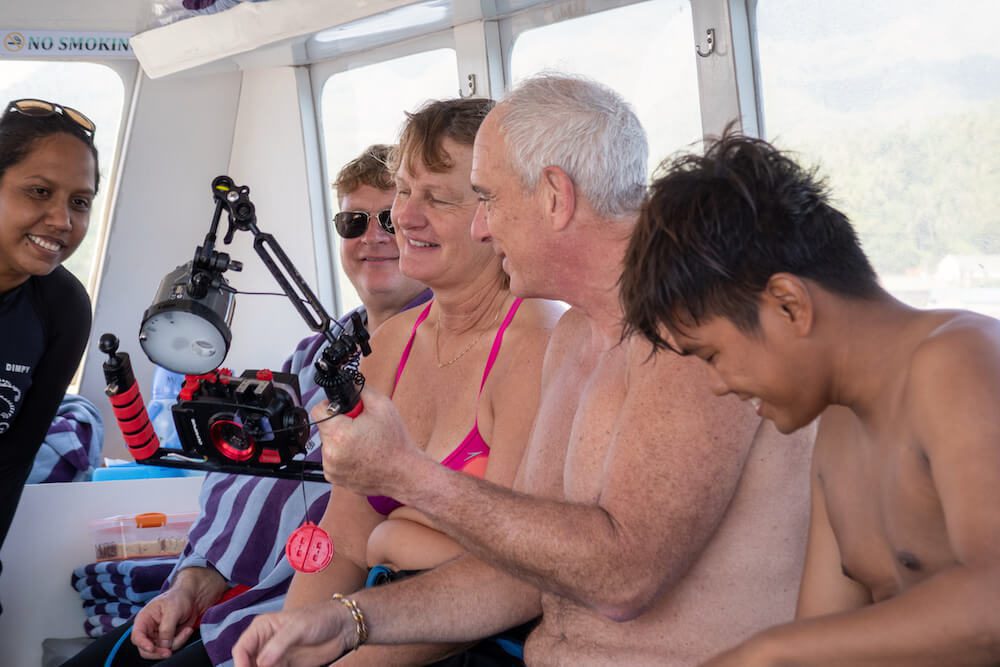
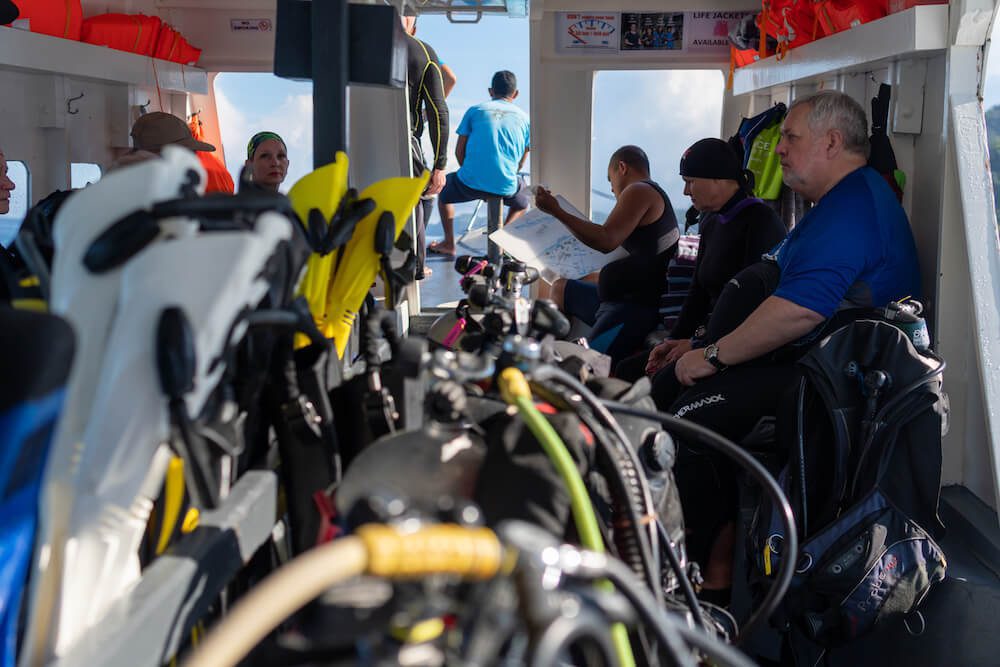
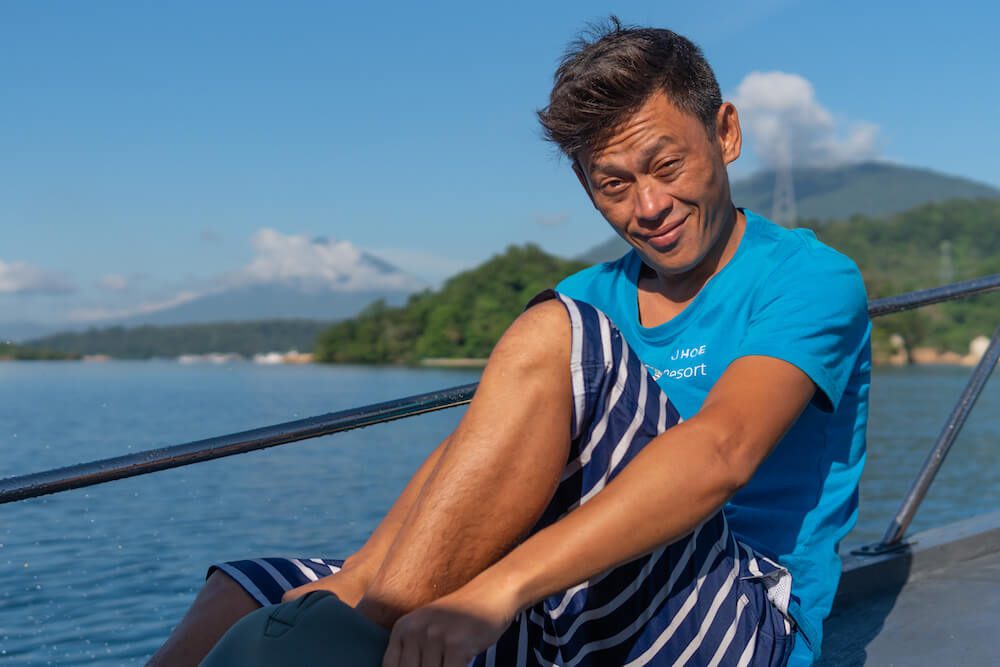
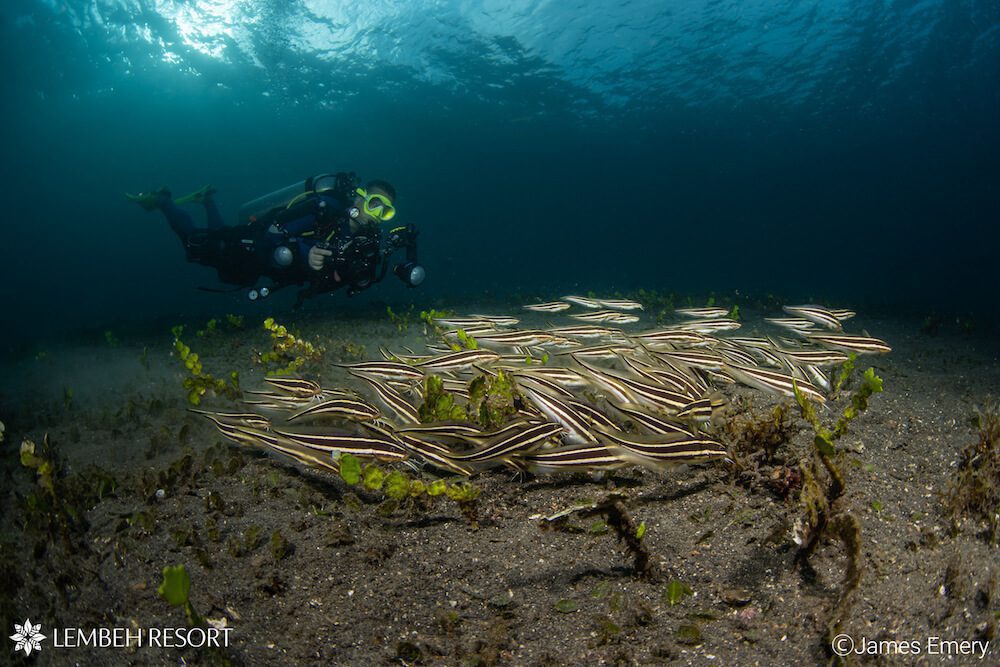
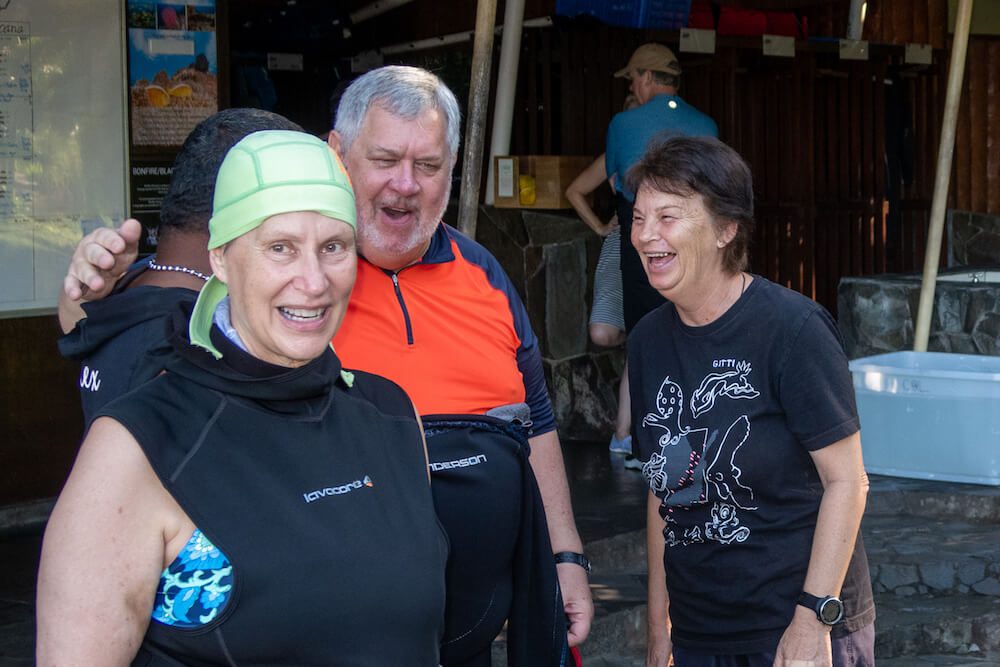
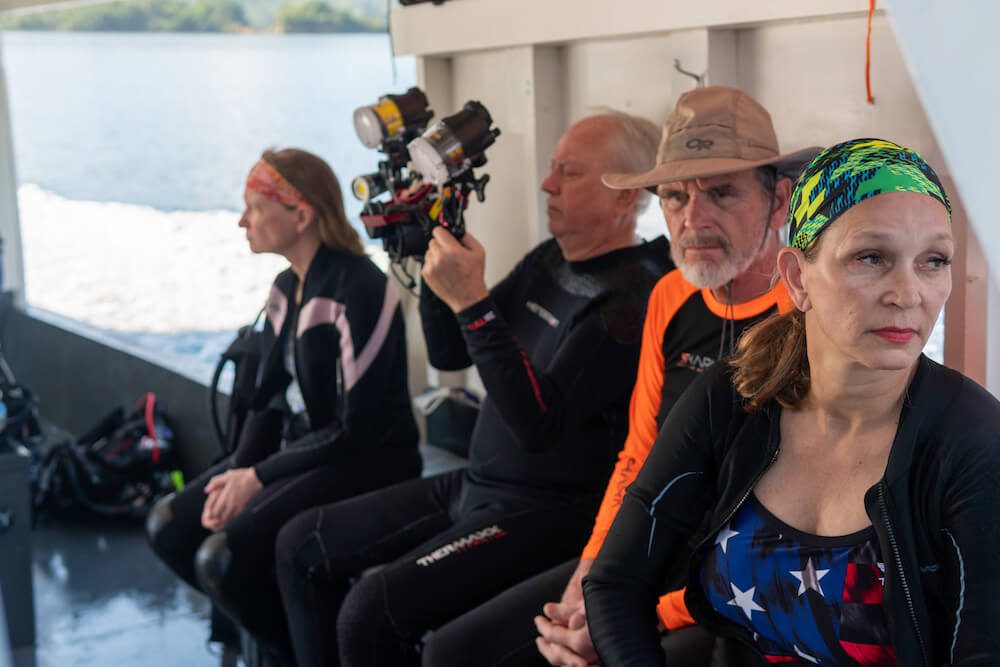
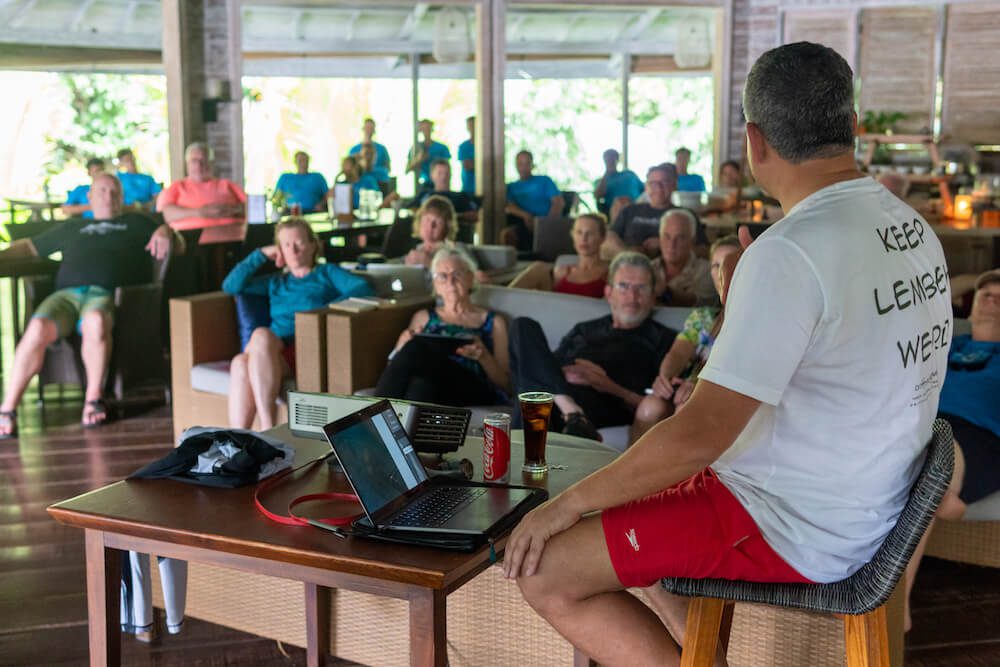
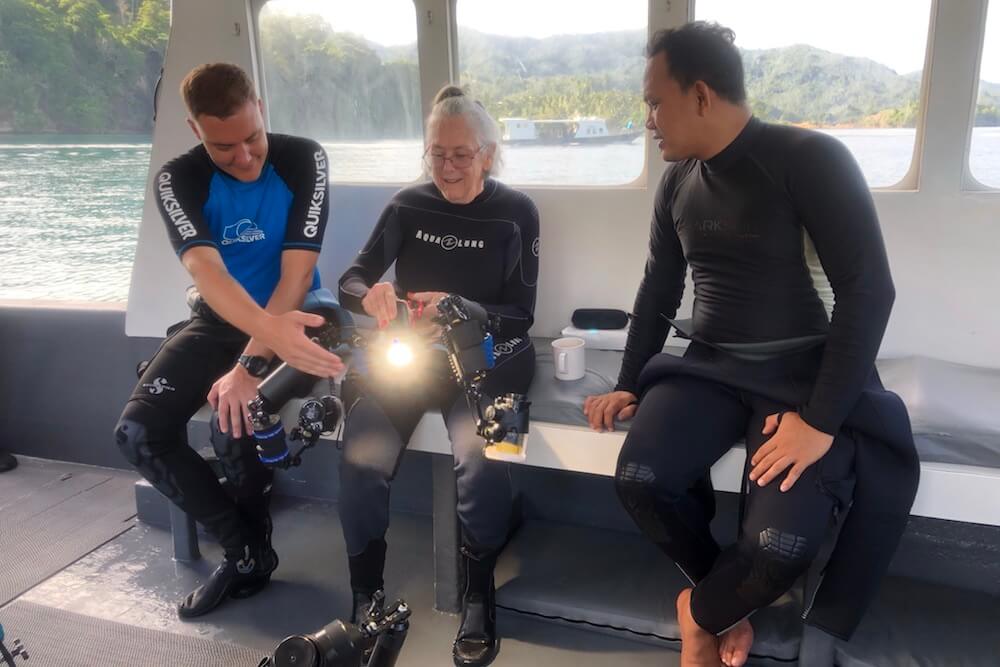
Did you miss out on this years workshop? Join our 9th annual Capturing Critters in Lembeh workshop in January 2021
2021 Photo Pros: Alex Tattersall, Jade Hoksbergen-Spiers and Henley Spiers
It’s Pro Roundup Day! Check out some of this year’s pro’s top images from this week!!
Saeed Rashid
“It’s a really nice being somewhere that’s so dedicated to underwater photography and to one particular aspect – macro. The guides at Lembeh Resort have been incredible this week – as trained underwater photographers they know what they are looking at and how to put subjects into images and they understand angles. It’s amazing to have a resort so set up for photography, with comprehensive camera facilities, and to have guides who are so into photography and who also take wonderful underwater images themselves.
Capturing Critters workshop is a unique event and with three pro pros, as well as an in-house pro to help guests, there is always someone on hand to answer queries and help with problems. To have three pros with three different view points is a highlight of the event“.
If you’d like to hear more from Saeed, he will also be speaking at this year’s Go Diving Show in Coventry, UK from February 21st-23rd.
SAEED RASHID
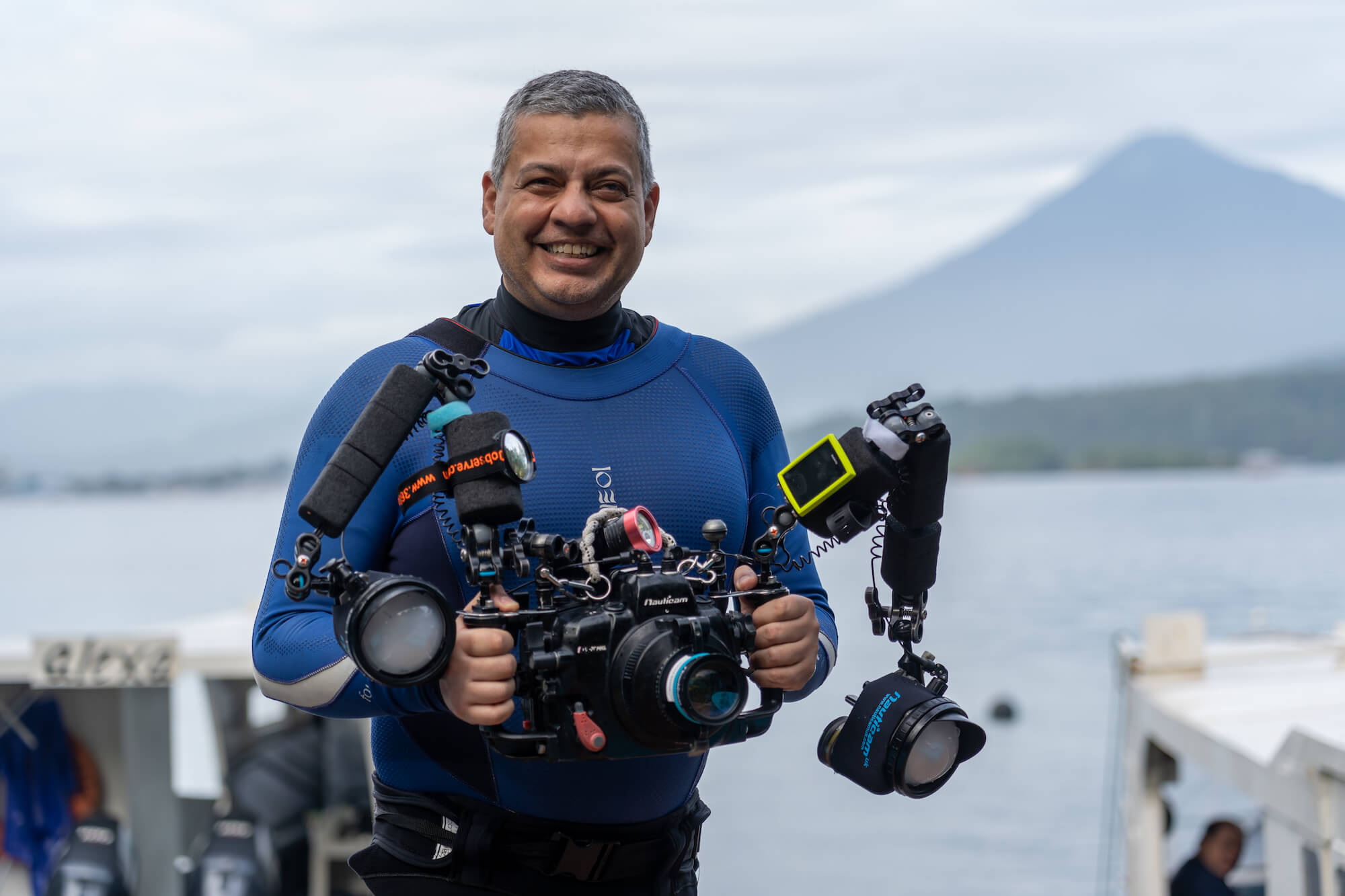
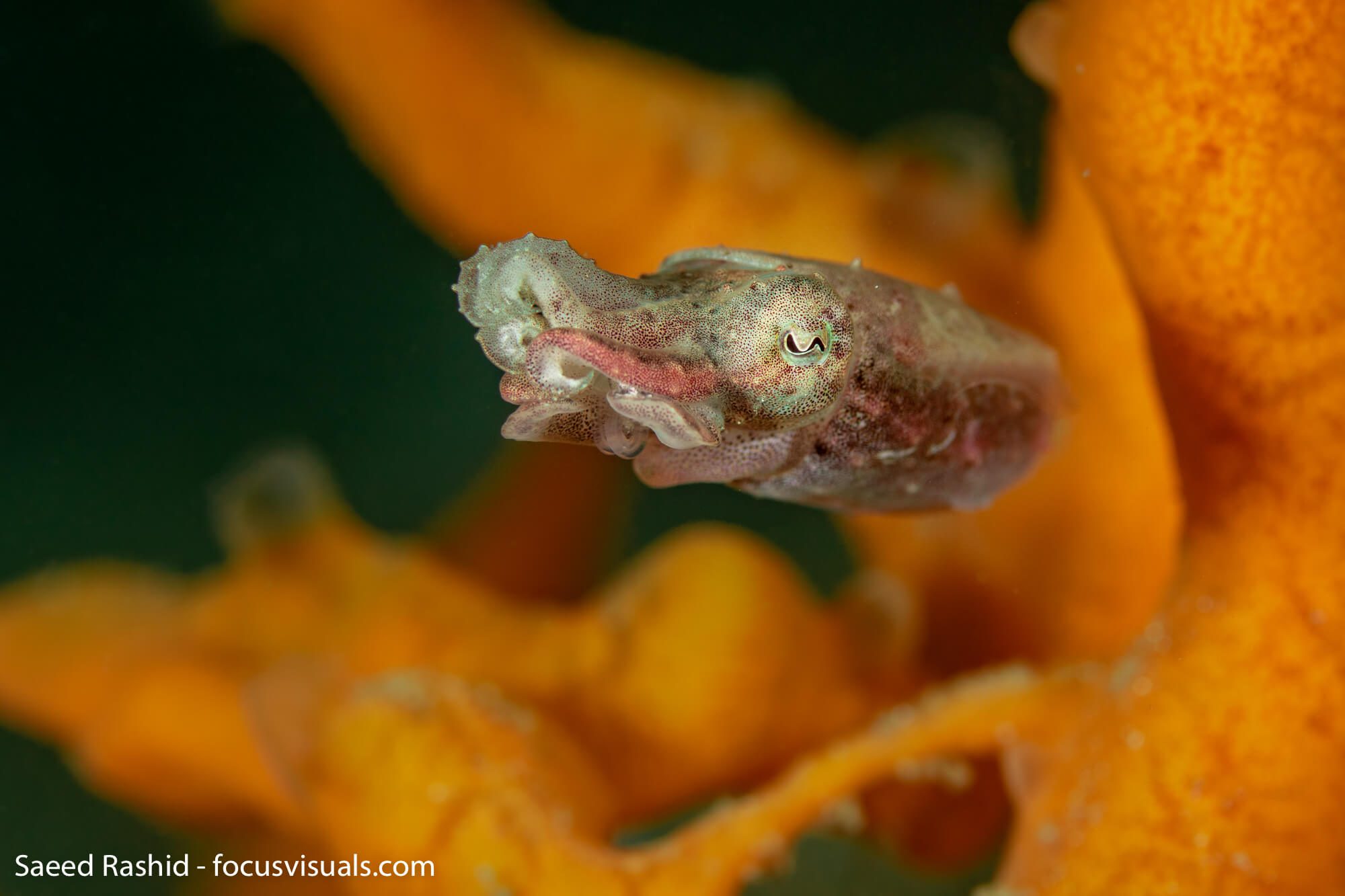
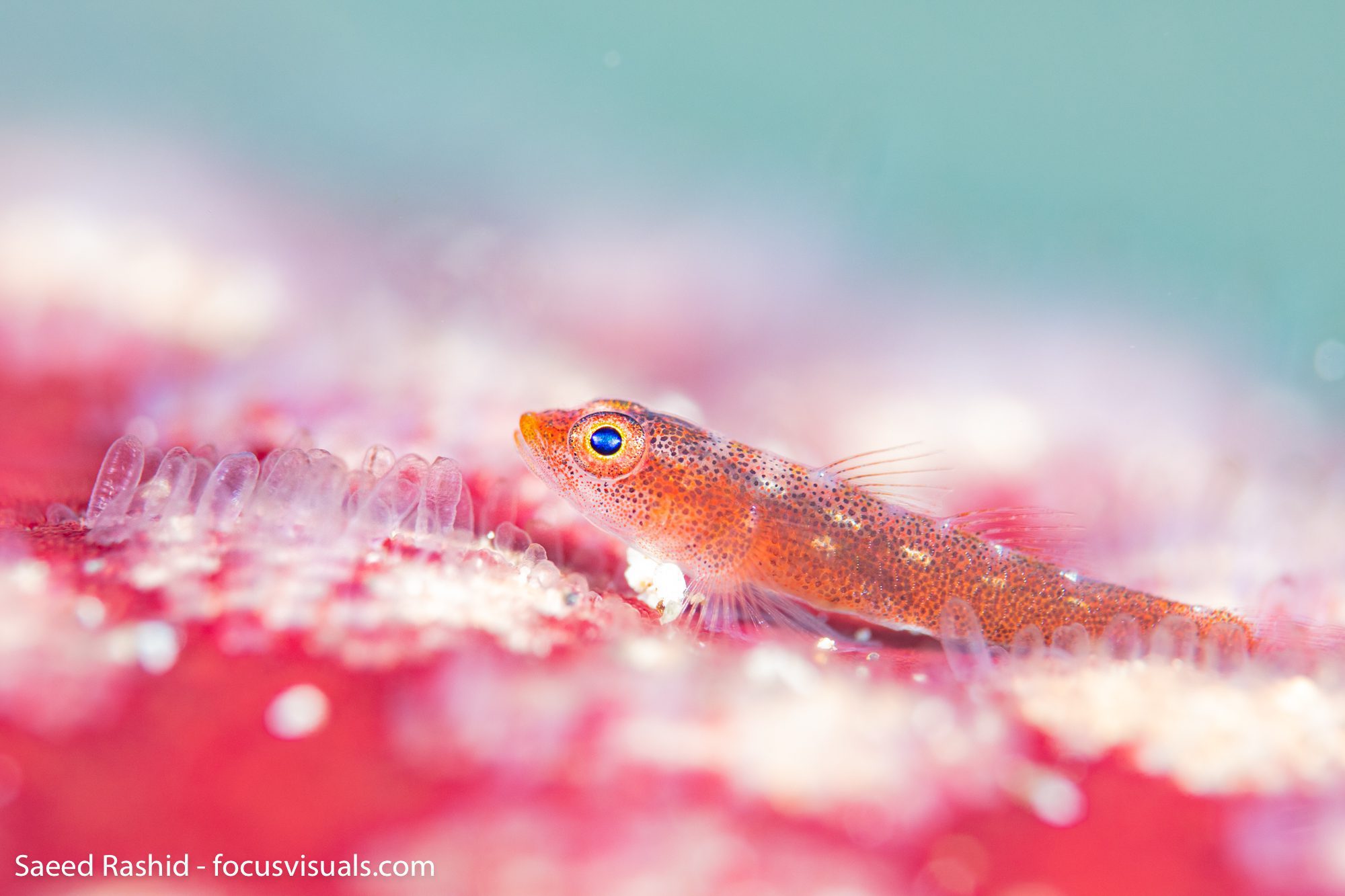
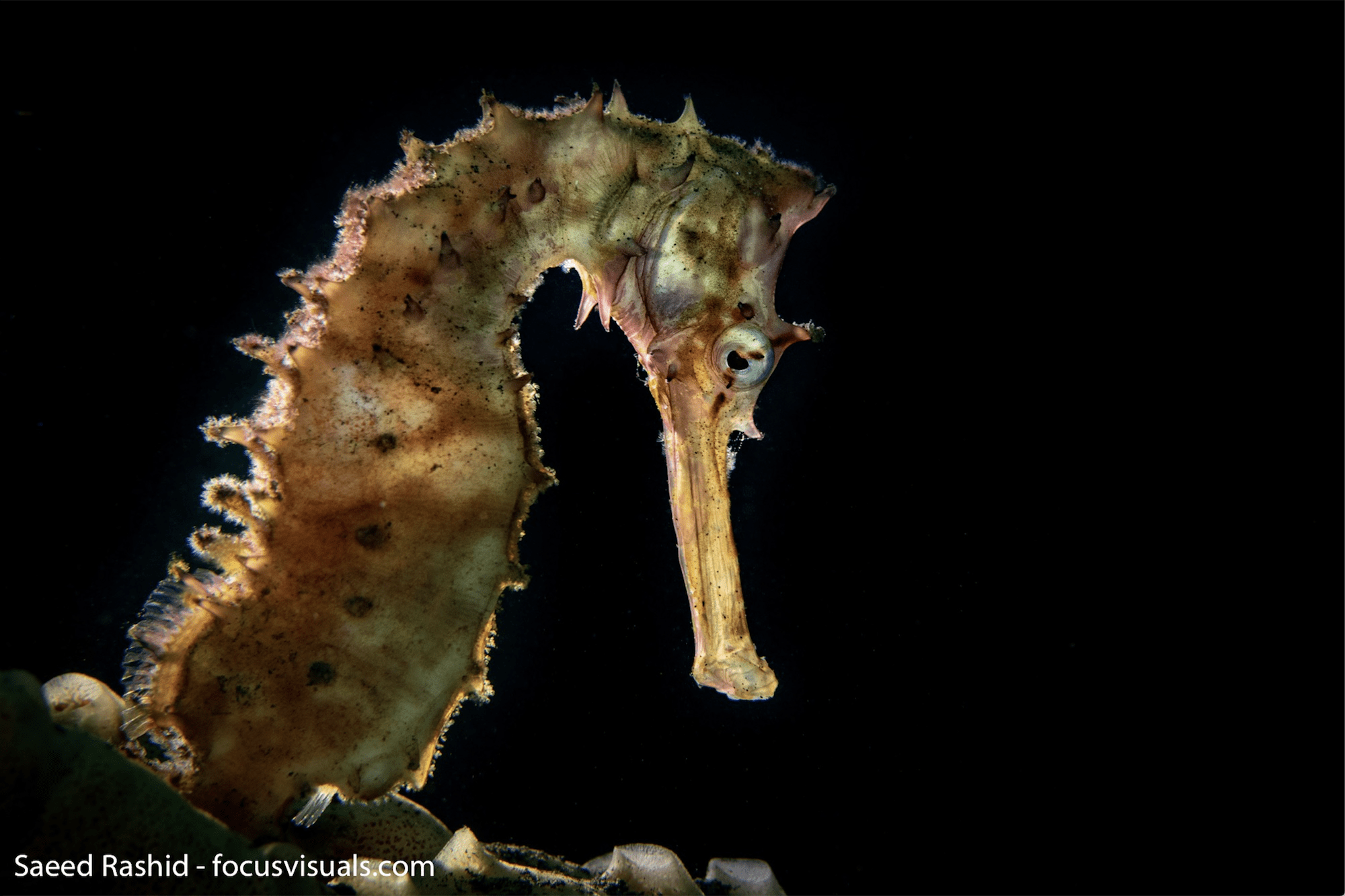
Alex Tyrrell
“It’s been really good working with other photo pros and being able to bounce ideas off each other. This has especially benefited participants in the critique sessions where they have been able to get three different views on thier images.
The Lembeh Strait is ideal for underwater photography, it has a massively higher biodiversity and abundance of photogenic critters than found elsewhere and Lembeh Resort has excellent facilities for hosting photography events and workshops. The dive guides are very attentive to make sure everyone sees the creatures underwater and the dive operations are incredible well organized and well-run.
ALEX TYRRELL
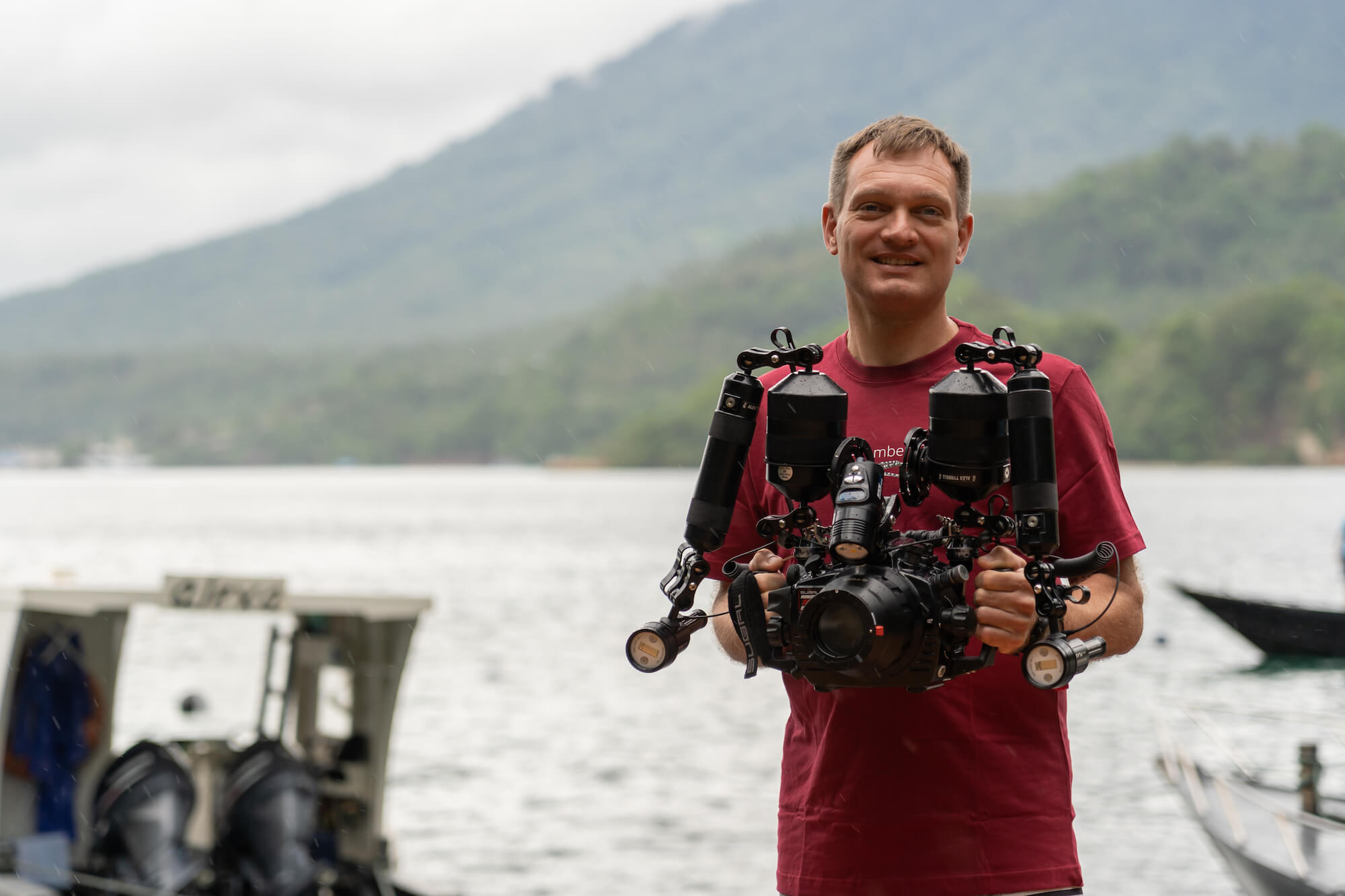
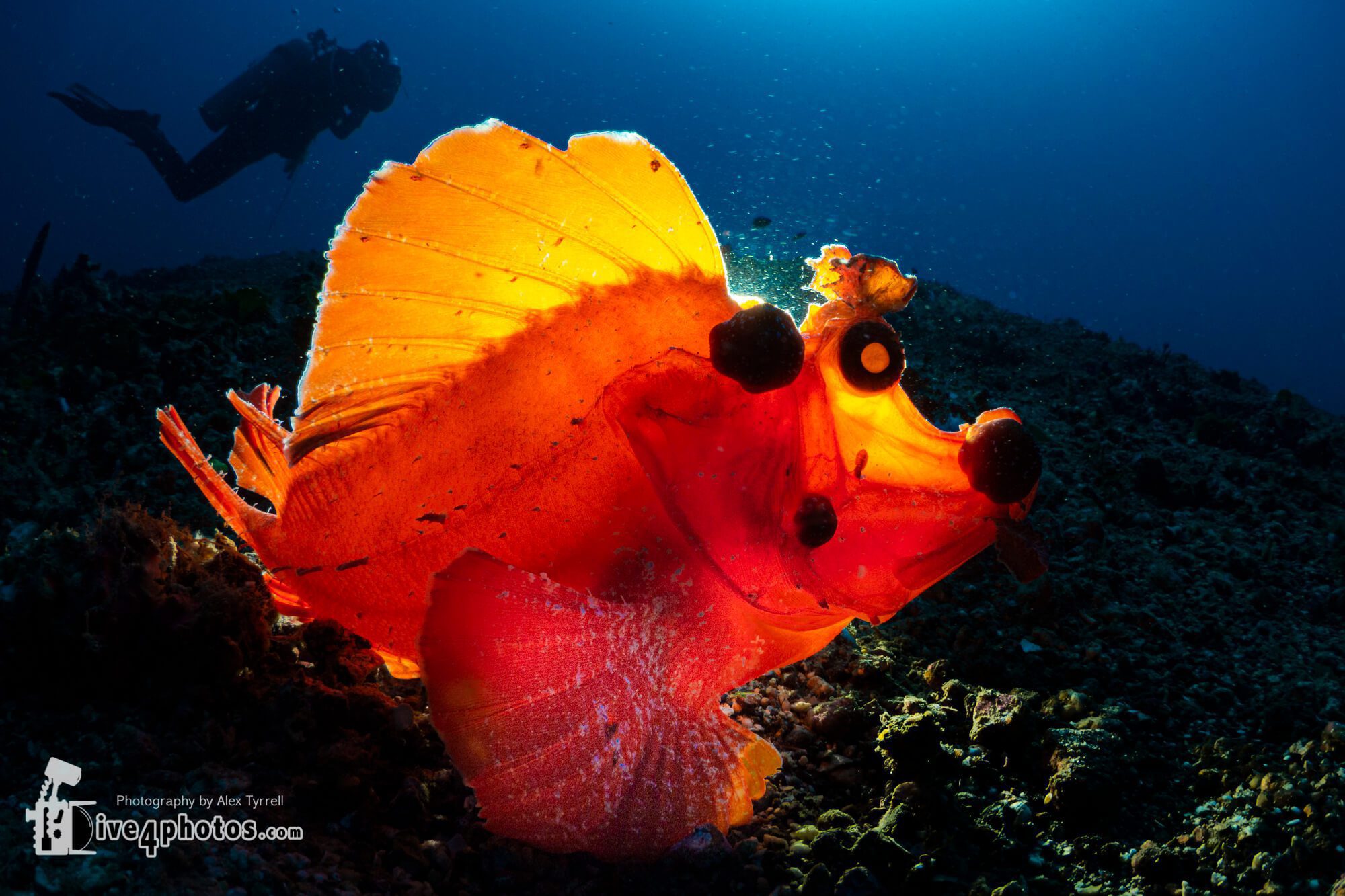
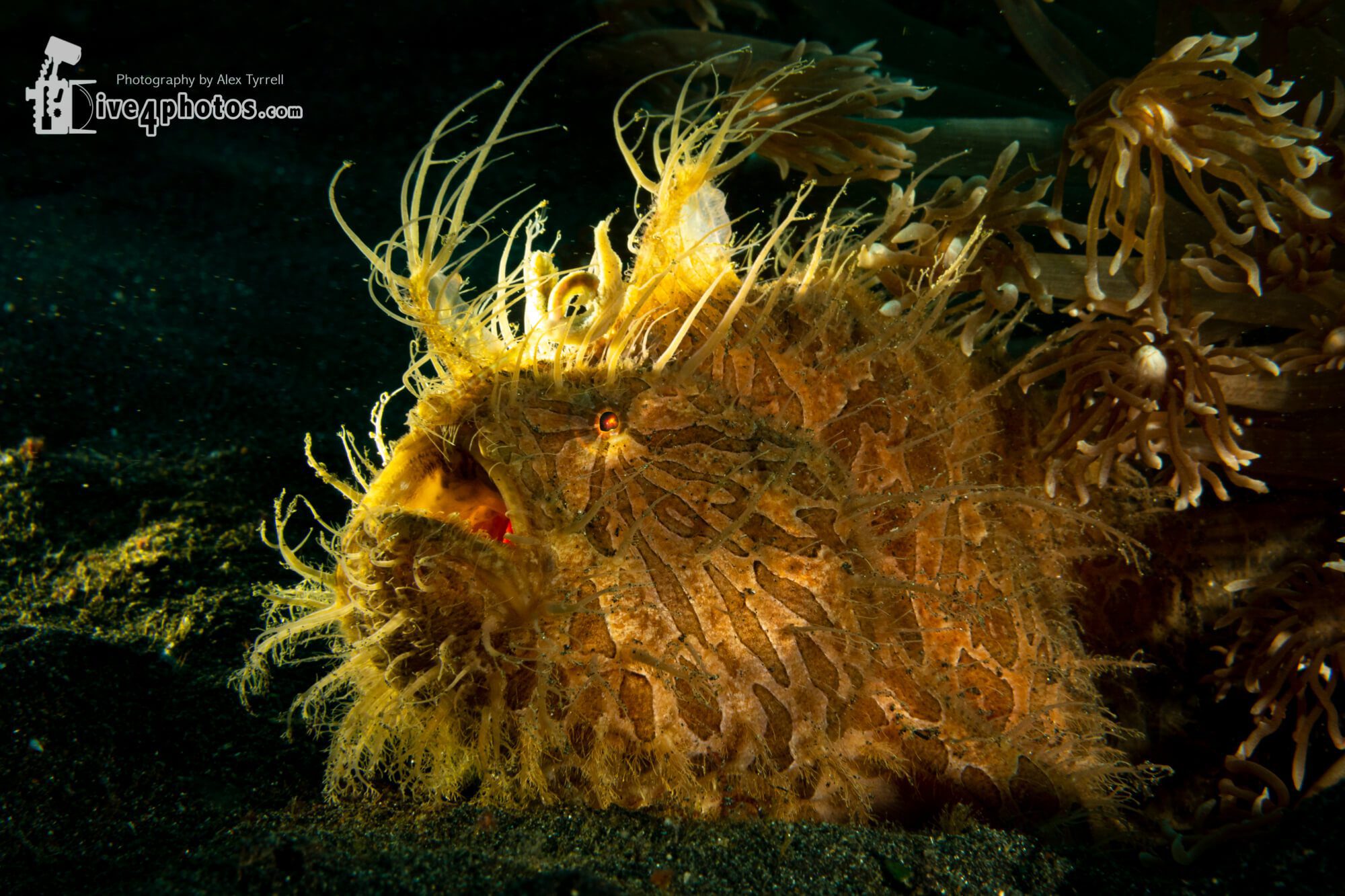
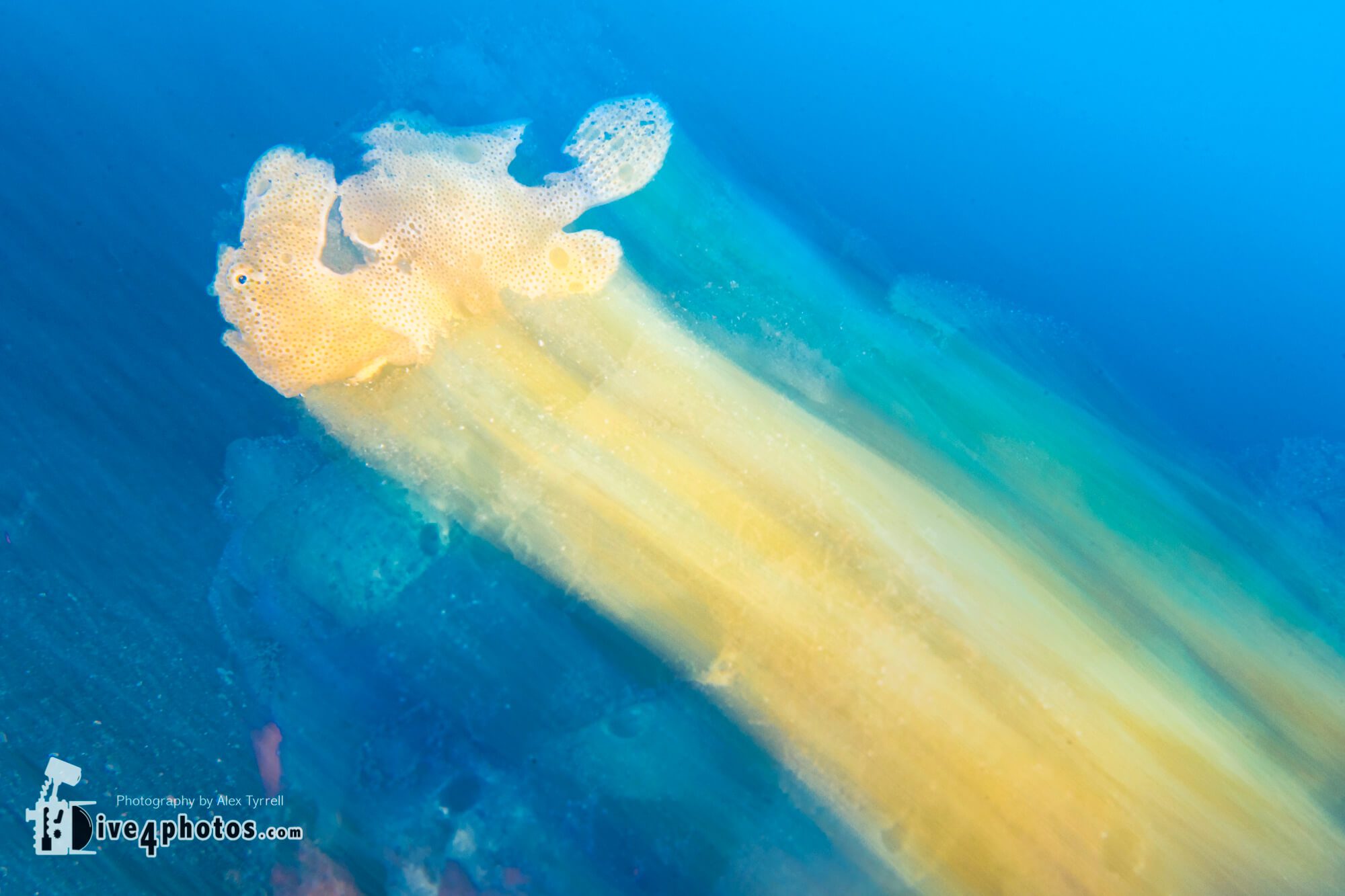
Todd Winner
“One of the things that is invaluable about a place like this is the small ratio of guests to guides. You are never going to find these subjects on your own but the guides here are fantastic at spotting and identifying Lembeh’s critters.
For the participants to have three different perspectives from the pros as well as from James is invaluable. Critique sessions this week have enabled guests to get maximum input on their images and advice on how to improve from three different stand points“.
TODD WINNER
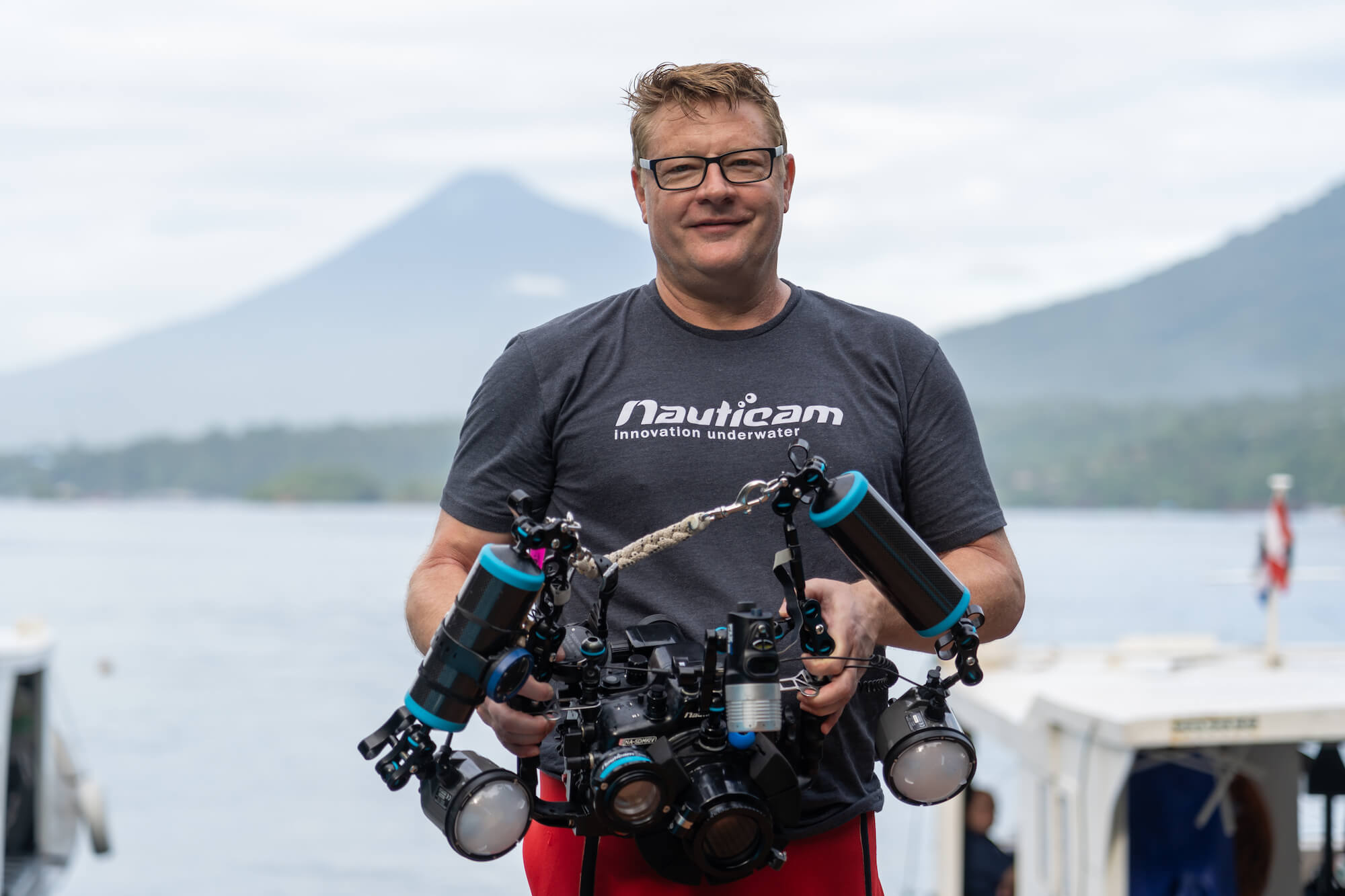
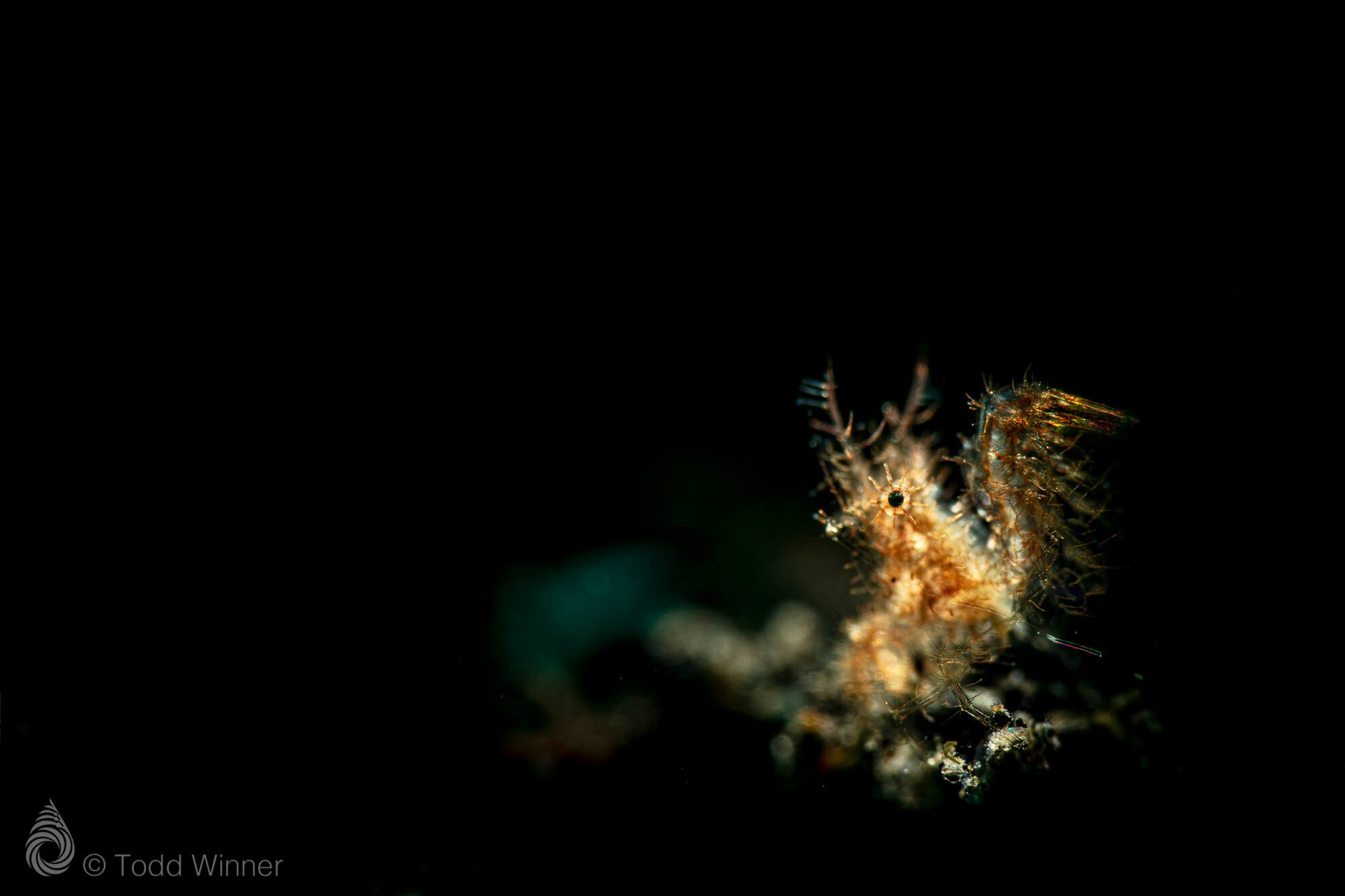
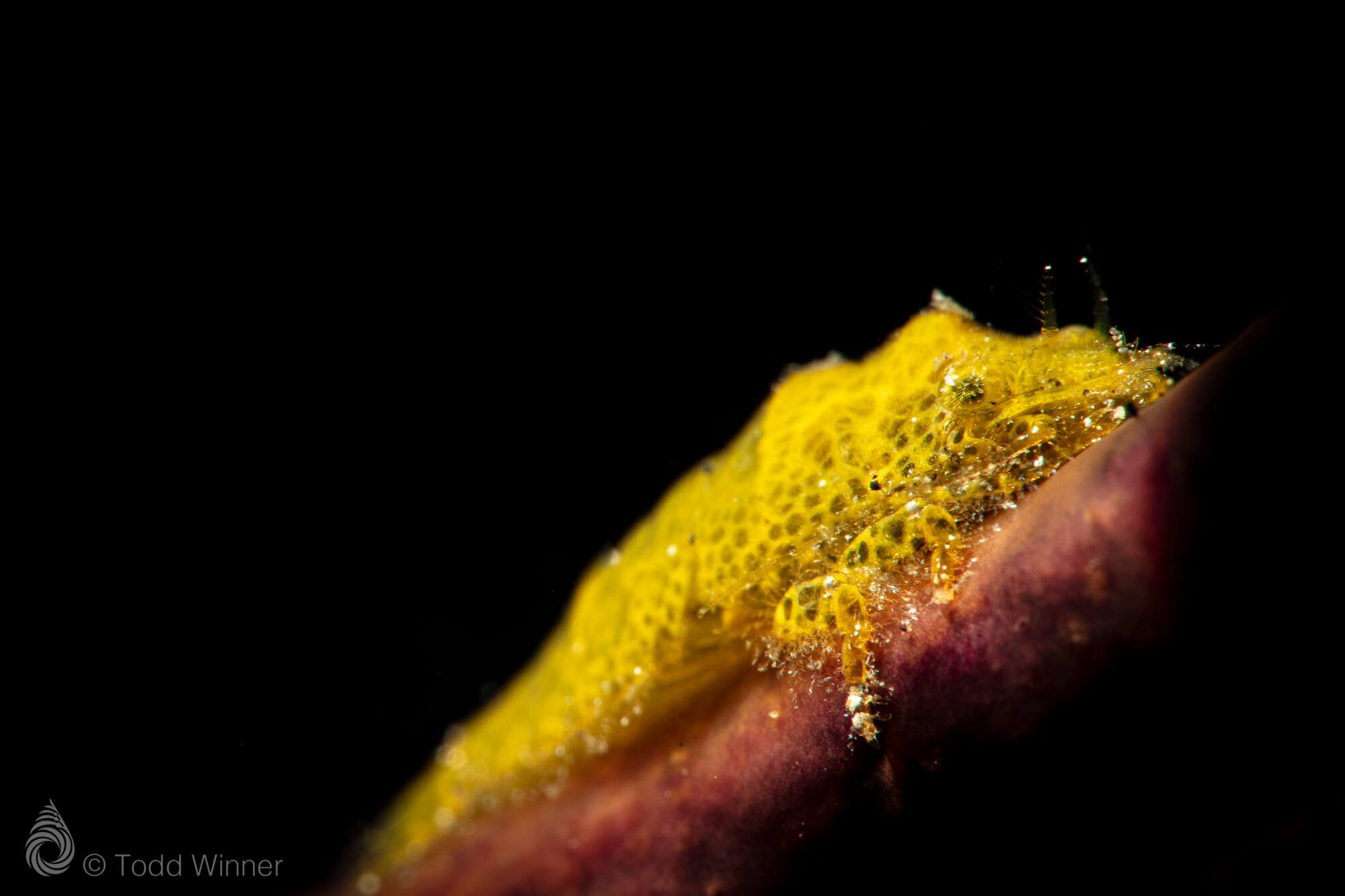
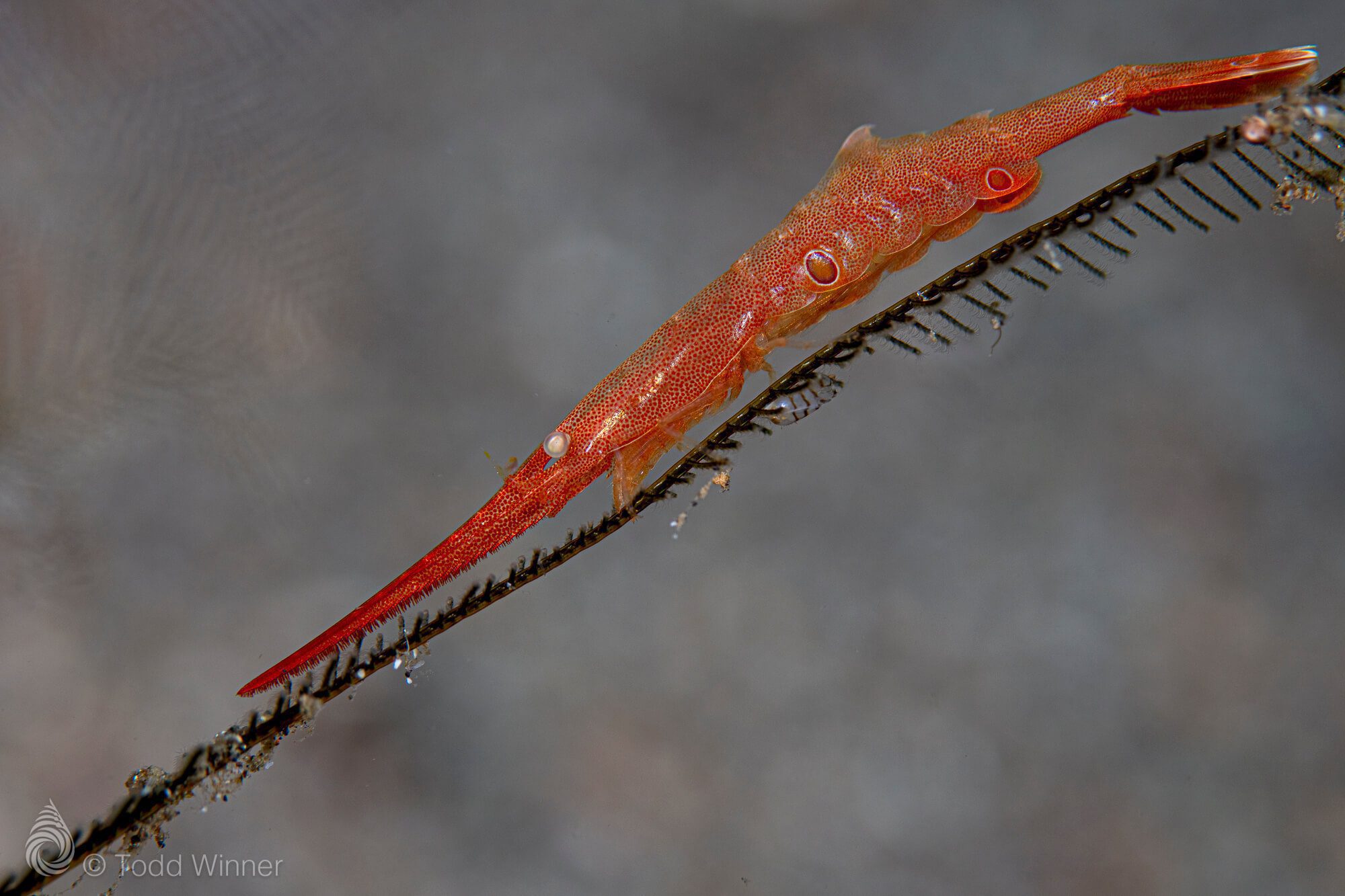
James Emery
James Emery is the in-house Photo Pro and Photo Center Manager at Lembeh Resort. James is available throughout the year for advice, consultations and one-on-one training.
JAMES EMERY
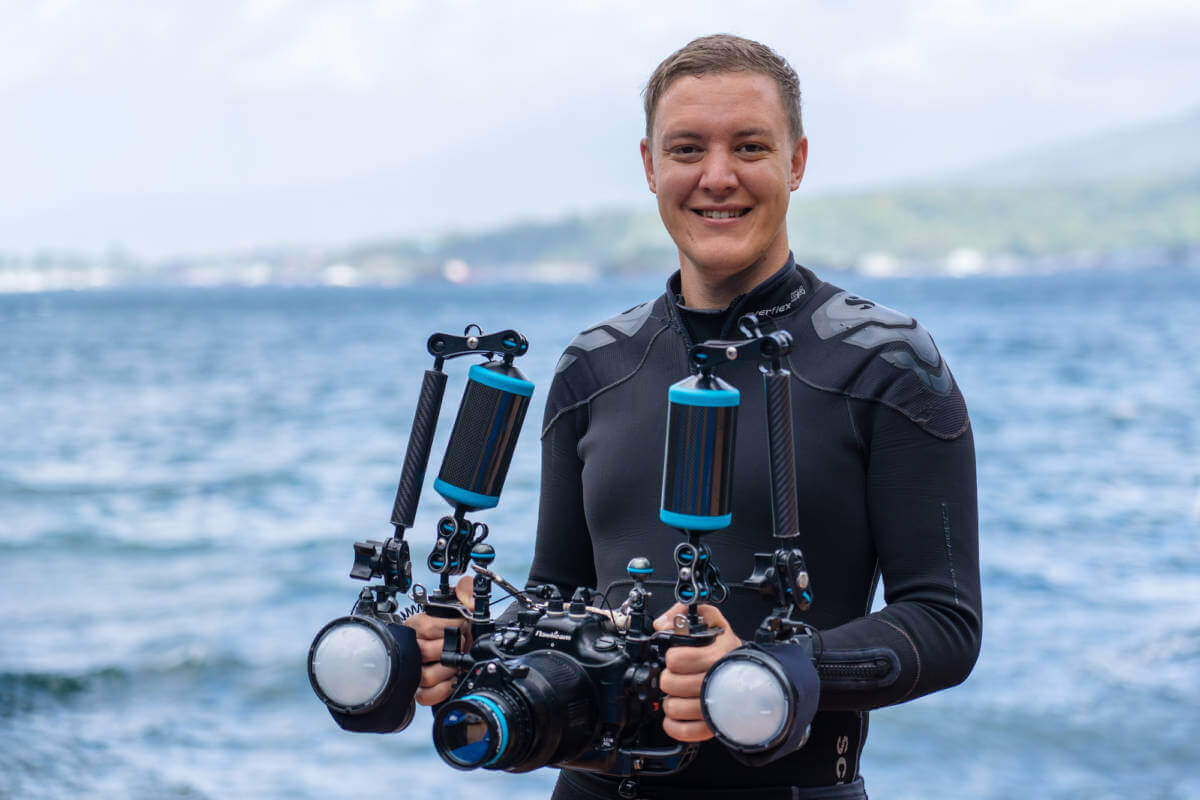
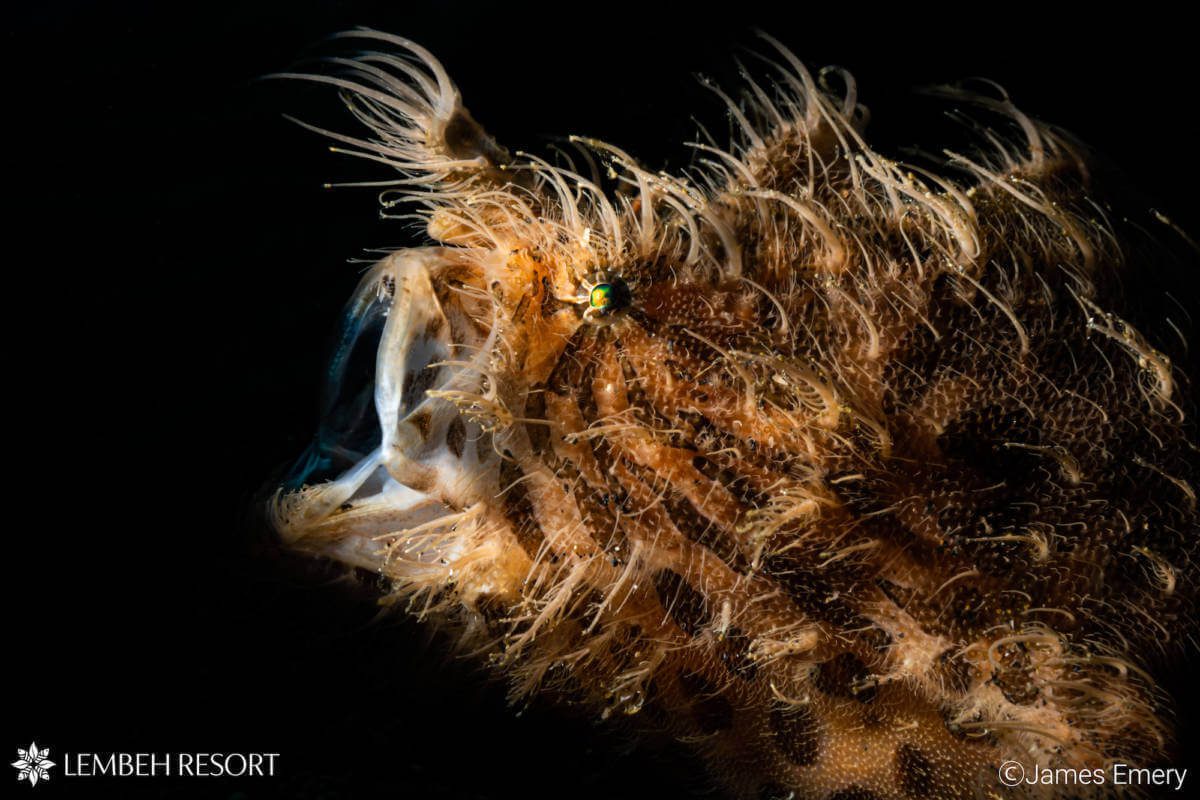
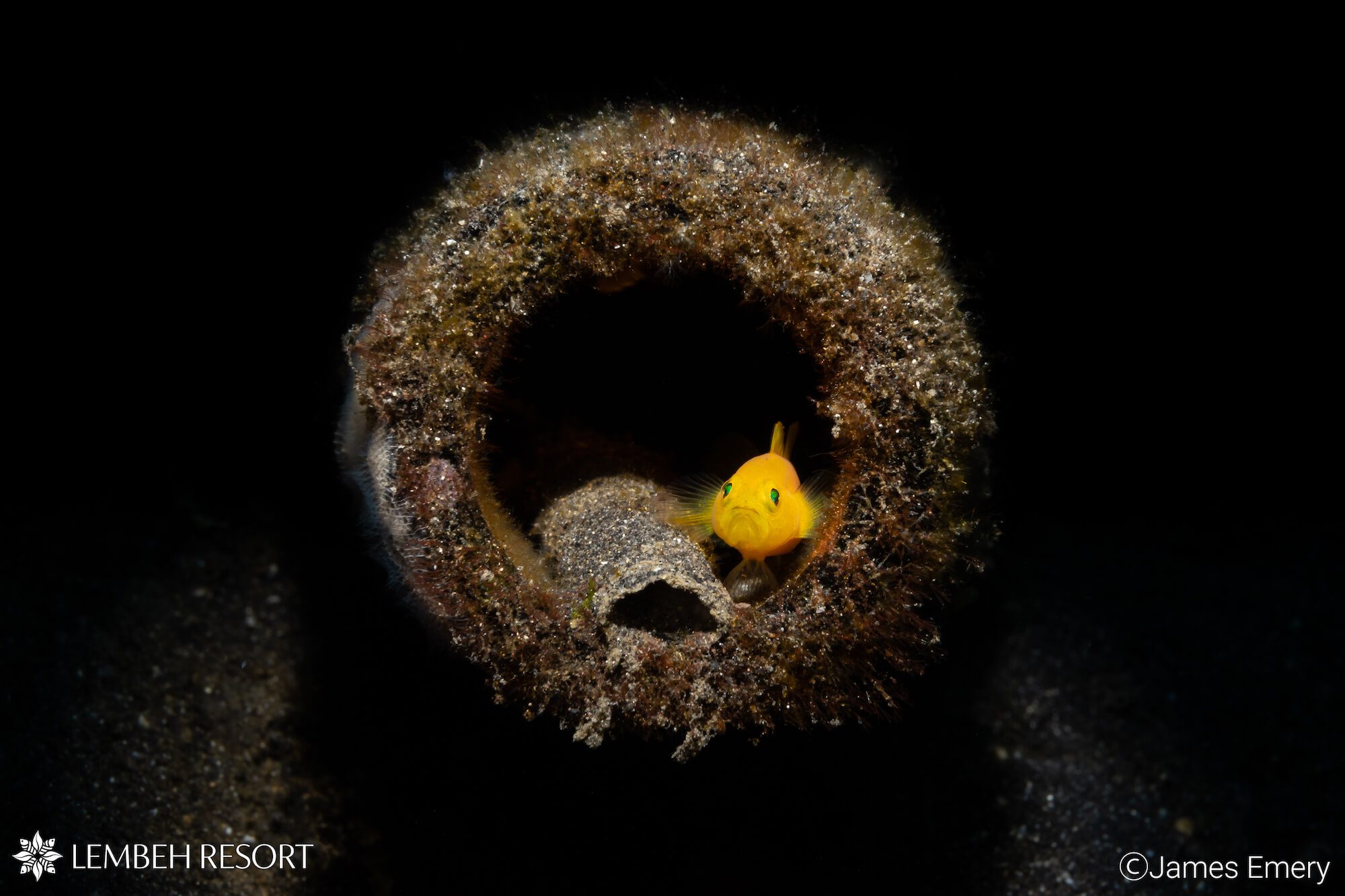
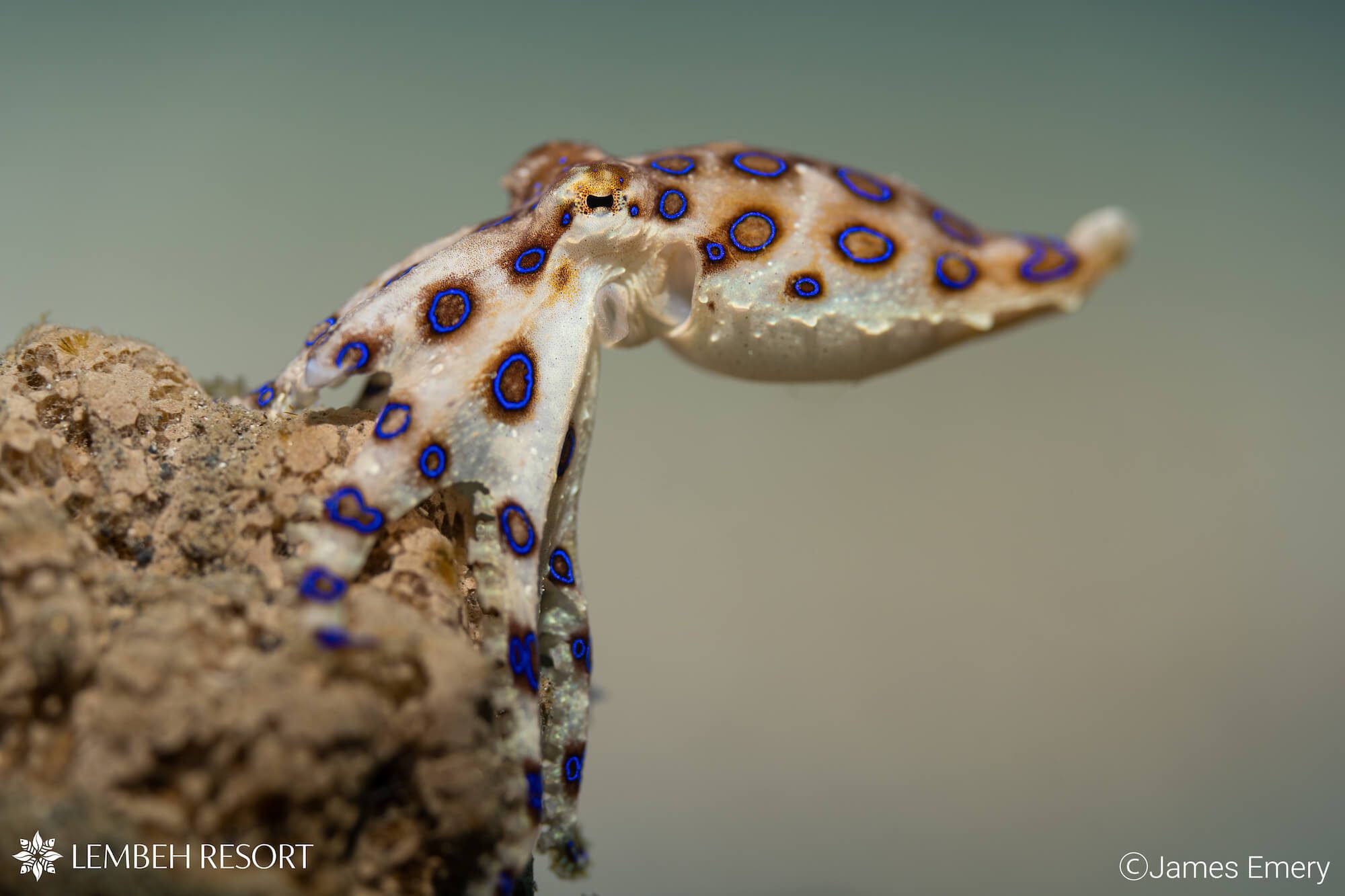
Daily Critter Count
Today’s most iconic critter sightings included:
Flamboyant cuttlefish, needle cuttlefish, blue ring octopus, reef octopus, electric clam, hairy frogfish, painted frogfish, giant frogfish, scarlett frogfish, dragon shrimp, cryptic sponge shrimp, soft coral snapping shrimp, crinoid snapping shrimp, tozeuma shrimp, candy crab, gorgonian porcelain crab, hairy shrimp, weedy rhinopias scorpionfish, paddleflap rhinopias scorpionfish, ornate ghost pipefish, pink eye goby, Lembeh sea dragon, short face fang blenny, juvenile boxfish, midnight snapper, Shaun the Sheep, Banana, Panda and hypselodoris nudibranch
Did you miss out on this years workshop? Join our 9th annual Capturing Critters in Lembeh workshop in January 2021
2021 Photo Pros: Alex Tattersall, Jade Hoksbergen-Spiers and Henley Spiers
It’s a wrap for this years Capturing Critters in Lembeh annual workshop and what a year it has been! Our three visiting Photo Pros, Saeed Rashid, Todd Winner and Alex Tyrrell have kept our 16 participants inspired and striving for the best shots throughout the week.
Our inhouse team, including Photo Pro James Emery and Marine Biologists Dimpy Jacobs and Agus Peloa have been shooting along side the pros and sharing their wealth of knowledge about critter behaviour in Lembeh. And our Dive Center Manager, Brigitte Gassner, has once again pulled off an amazing show of organization and coordination – thank you to everyone!
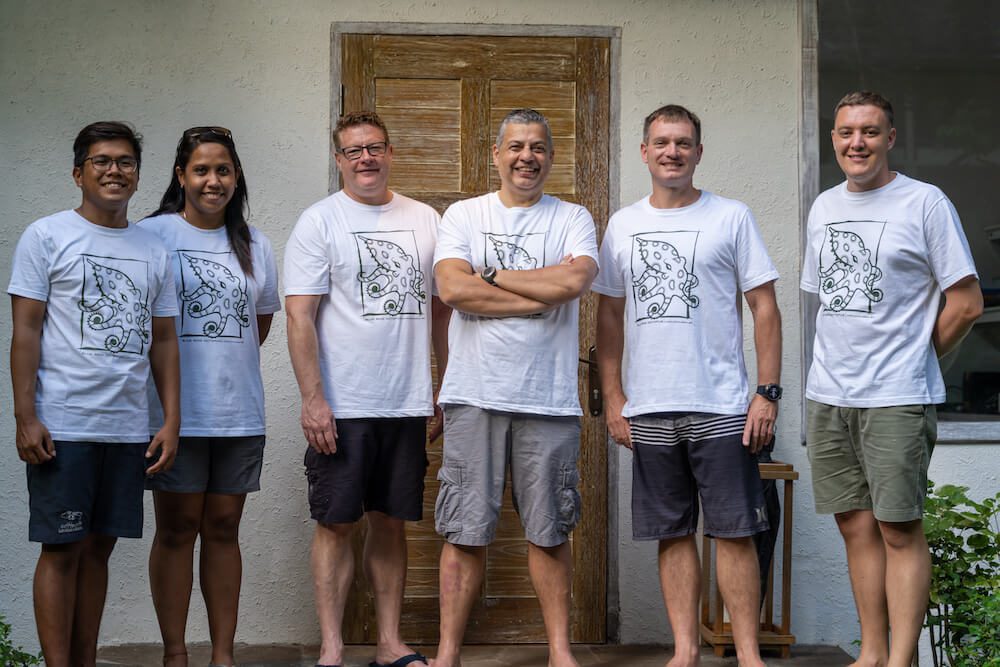
(Left to right): Agus Peloa, Dimpy Jacobs, Todd Winner, Saeed Rashid, Alex Tyrrell, James Emery
This week’s critter sightings have kept everyone entertained as some of Lembeh’s most iconic critters have shared glimpses of their existences with us, both on and off camera – including a cheeky coconut octopus who took up residence in Saeed’s camera accessories!
Below is a slideshow of the amazing images which have been captured by the participants of this year’s workshop – it’s safe to say that the knowledge and wisdom of the pros has definitely had a positive effect!

